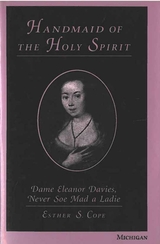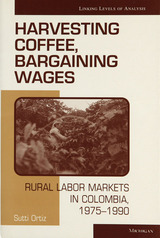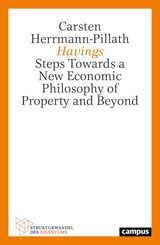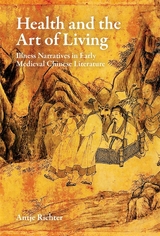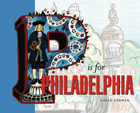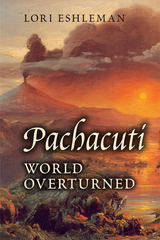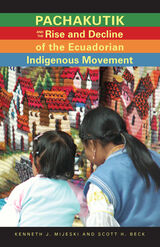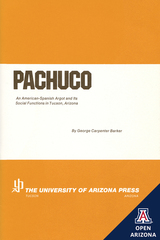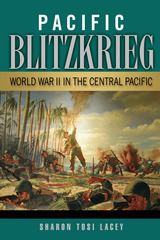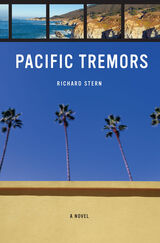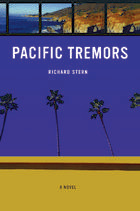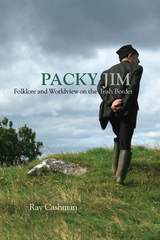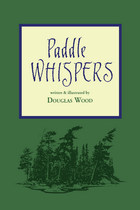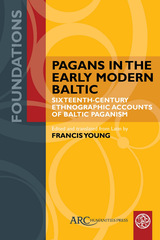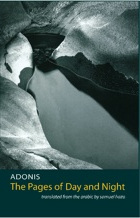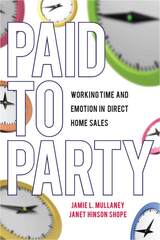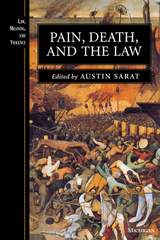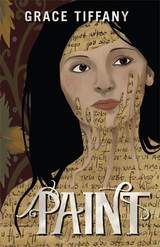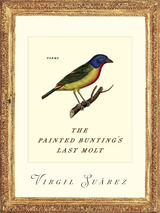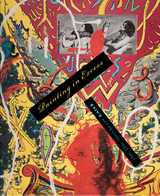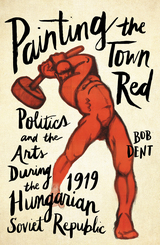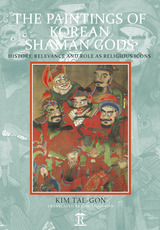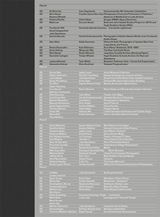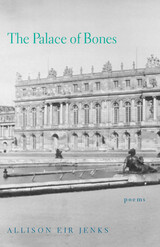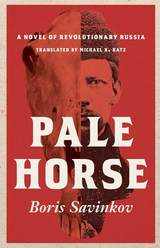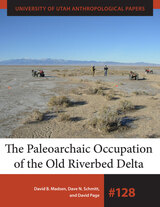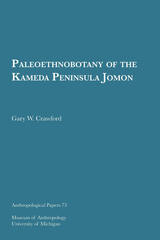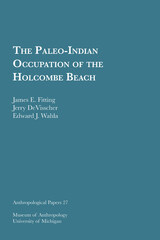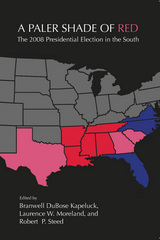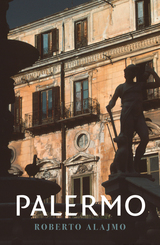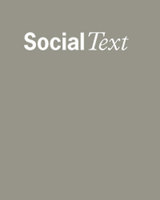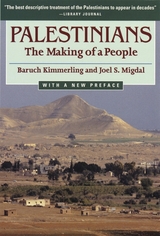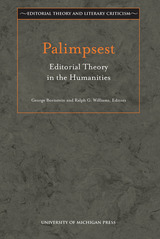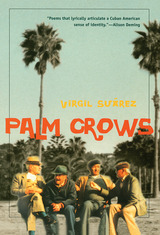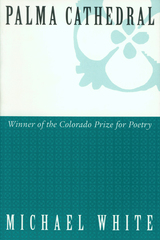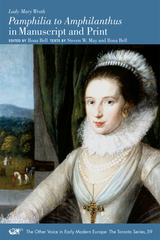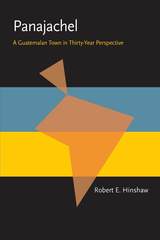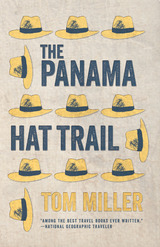 P FKN R: How Bad Bunny Became the Global Voice of Puerto Rican Resistance
Vanessa Díaz and Petra R. Rivera-Rideau
Duke University Press, 2026 “Aquí mataron gente por sacar la bandera / Por eso es que ahora yo la llevo donde quiera." (Here they killed people for taking out the flag / that’s why I bring it anywhere I want now.)—LA MuDANZA
Global superstar Bad Bunny, born Benito Antonio Martínez Ocasio, like many other Puerto Ricans, has lived a life marked by public crises—blackouts, hurricanes, political corruption and oppression, among others—that have exposed the ongoing impacts of colonialism in Puerto Rico. Offering a portrait of the past and future of Puerto Rican resistance through one of its loudest and proudest voices, P FKN R draws on interviews with musicians, politicians, and journalists as well as ethnographic research to set Bad Bunny and Puerto Rican resistance in a historical, political, and cultural context. Authors Vanessa Díaz and Petra Rivera-Rideau—creators of the “Bad Bunny Syllabus”—demonstrate Bad Bunny’s place in a long tradition of infusing joy and protest into music and honor the many, evolving forms of daily resistance to oppression and colonialism that are part of Puerto Rican life.
P Is For Philadelphia
Susan Korman
Temple University Press, 2005 P Is for Philadelphia is a unique, alphabetic tour of the city and the region, illustrated by the area's public school children, who participated in a city-wide drawing contest. From A is for Athlete to Z is for Zoo, all of the city's rich history is explored. P Is for Philadelphia includes entries on William Penn's arrival and historic treaty with the Delaware Indians, the city's heritage as the cradle of American liberty, as well as its food, sports teams, neighborhoods, and festivals. This book will have the kind of impact on Philadelphia and the region that few children's books ever have. It belongs on the bedside tables of every child in the Delaware Valley and the bookshelves of every visitor.
 Pablo Neruda's Ship Figureheads: A Poet-Collector's Muses and Companions
Carol A. Olsen, Foreword by Fernando Sáez Garcia
University of Alabama Press, 2025 Unlock the stories of Pablo Neruda’s rare nineteenth-century carved-wood ship figurehead collection in Chile, why they mattered in his tumultuous life, and how we benefit from them now. Poet Pablo Neruda’s nineteenth-century ship figurehead collection in Chile is one of the most significant in the world. Containing carved wood images of dramatically postured men and women, these figures are now better understood due to years of research, a willingness to challenge Neruda’s ever-changing stories about them, and a realization that the names Neruda chose for his figureheads perhaps had more to do with his life than theirs. The rhythm and beauty of Neruda’s worn wood figures is counterpoint to his own tumultuous life as an author, politician, and communist dissident. Collecting ship figureheads was central to Neruda’s passion for owning things made of wood, a material he said was his best friend, and for standing out among others as he gradually built the public persona that helped move him toward winning the Nobel Prize in Literature. With his choir of immobilized figureheads stationed upright in his living room and facing the Pacific Ocean, Neruda was surrounded by dramatic images from the sea that ignited his most powerful feelings. The nineteenth century saw figureheads on the bows of ships of sail and steam, yet when a figurehead was lost or removed, its history soon disappeared. The significant ship figureheads that Neruda avidly collected preserve that history and reveal new dimensions concerning his life and work. Each year, his collection is viewed by thousands of visitors to the Pablo Neruda Foundation’s house museum at Isla Negra.
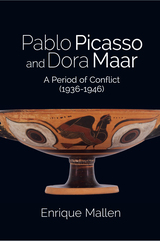 PABLO PICASSO and DORA MAAR: A Period of Conflict (1936–1946)
Enrique Mallen
Sussex Academic Press, 2022 Although Pablo Picasso spotted Dora Maar at a caf in January 1936 it is highly likely that she had come to his attention prior. As Brassa, a Hungarian-French photographer, recalled, It was at Les Deux-Magots that, one day in autumn 1935, [he] met Dora On an earlier day, he had already noticed the grave, drawn face of the young woman at a nearby table, the attentive look in her light-colored eyes, sometimes disturbing in its fixity. When Picasso saw her in the same caf in the company of the surrealist poet Paul luard, who knew her, the poet introduced her to Picasso (Brassa, a.k.a. Gyula Halsz, Conversations with Picasso [University of Chicago Press, 1999]). Tinged with a seductive mix of violence and dark eroticism, this first meeting has attained mythical status in the story of the artist's life. It reads like an unreal fantasy. A mysterious and feline beauty, which Man Ray had captured in the pictures he took of her, a companion of Georges Bataille, Dora was an accomplished photographer, close to the Surrealists' revolutionary aesthetics. Picasso addressed her in French, which he assumed to be her language; she replied in Spanish, which she knew to be his. For the next
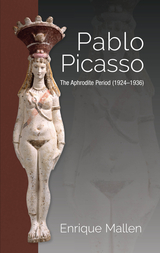 Pablo Picasso: The Aphrodite Period (1924–1936)
Enrique Mallen
Sussex Academic Press, 2022 As early as the ancient Greeks, goddesses served as Muses for artistic creation. In essence, a creatively charged energy inspired the artist, leaving a unique and recognizable mark on the artwork. Picasso's relationships with the women in his life was deeply formative, and he often represented them as Muses. He was particularly unabashed in the declaration of his feelings to one of them, Marie-Therese Walter, his youthful mistress of 1927. But at that point Picasso was still married to Olga Khokhlova, thus forced to practice the utmost discretion. His marriage to Olga made him increasingly frustrated with her imposed bourgeois expectations. As a release from this marital burden, Marie-Therese was ever present in his work, often portrayed as Aphrodite with a wreath in her hair, with a basket of flowers and fruits by her side. Marie-Therese was the Dream—the Muse. This fertile period coincided with the strong influence of surrealism which helped liberate Picasso's psyche from the straitjacket that Olga's lifestyle imposed on him. By 1935, however, the model and mistress became a mother to Maya, radically changing the role she previously had. The following year Picasso was introduced to a new woman, Dora Maar, an encounter that signalled the beginning of the end of Marie-Therese's exclusive claim on Picasso's affections and the closing of an artistic period clearly marked by fertility. The Aphrodite Period (19241936) provides new insights and analysis of Picasso's life as recently uncovered through the research of the Online Picasso Project. This time-span is one of the most illustrative periods of Picasso's career in that it clearly demonstrates the close interdependence between sexuality and artistic creativity that characterize Picasso's entire output.
Pachakutik and the Rise and Decline of the Ecuadorian Indigenous Movement
Kenneth J. Mijeski
Ohio University Press, 2011 The mobilization of militant indigenous politics is one of the most important stories in Latin American studies today. In this critical work, Kenneth J. Mijeski and Scott H. Beck examine the rise and decline of Ecuador’s leading indigenous party, Pachakutik, as it tried to transform the state into a participative democracy. Using in-depth interviews with political activists, as well as a powerful statistical analysis of election results, the authors show that the political election game failed to advance the causes of Ecuador’s poor or the movement’s own indigenous supporters. Pachakutik and the Rise and Decline of the Ecuadorian Indigenous Movement is an extraordinarily valuable case study of Ecuador’s indigenous movement and the challenges it still faces.
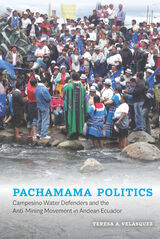 Pachamama Politics: Campesino Water Defenders and the Anti-Mining Movement in Andean Ecuador
Teresa A. Velásquez
University of Arizona Press, 2022 Ecuador became the first country in the world to grant the Pachamama, or Mother Earth, constitutional rights in 2008. This landmark achievement represented a shift to incorporate Indigenous philosophies of Sumak Kawsay or Buen Vivir (to live well) as a framework for social and political change. The extraordinary move coincided with the rise of neoextractivism, where the self-described socialist President Rafael Correa contended that Buen Vivir could be achieved through controversial mining projects on Indigenous and campesino territories, including their watersheds.
Pachamama Politics provides a rich ethnographic account of the tensions that follow from neoextractivism in the southern Ecuadorian Andes, where campesinos mobilized to defend their community-managed watershed from a proposed gold mine. Positioned as an activist-scholar, Teresa A. Velásquez takes the reader inside the movement—alongside marches, road blockades, and river and high-altitude wetlands—to expose the rifts between social movements and the “pink tide” government. When the promise of social change turns to state criminalization of water defenders, Velásquez argues that the contradictions of neoextractivism created the political conditions for campesinos to reconsider their relationship to indigeneity.
The book takes an intersectional approach to the study of anti-mining struggles and explains how campesino communities and their allies identified with and redeployed Indigenous cosmologies to defend their water as a life-sustaining entity. Pachamama Politics shows why progressive change requires a shift away from the extractive model of national development to a plurinational defense of community water systems and Indigenous peoples and their autonomy.
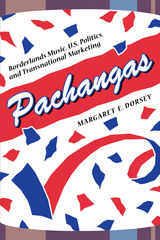 Pachangas: Borderlands Music, U.S. Politics, and Transnational Marketing
By Margaret E. Dorsey
University of Texas Press, 2006 A uniquely Tejano version of the old-fashioned political barbeque, the traditional South Texas pachanga allowed politicians to connect with voters in a relaxed setting where all could enjoy live music and abundant food and drink along with political speeches and dealmaking. Today's pachanga still combines politics, music, and votes—along with a powerful new element. Corporate sponsorships have transformed the pachanga into a major marketing event, replete with celebrity performers and product giveaways, which can be recorded and broadcast on TV or radio to vastly increase the reach of the political—and the commercial—messages. This book explores the growing convergence of politics, transnational marketing, and borderlands music in the South Texas pachanga. Anthropologist Margaret Dorsey has observed some one hundred pachangas and interviewed promoters, politicians, artists, and local people. She investigates how candidates and corporations market their products to Hispanic consumers, as well as how the use of traditional music for marketing is altering traditional forms such as the corrido. Her multifaceted study also shows clearly that the lines of influence run both ways—while corporate culture is transforming the traditions of the border, Tejano voters/consumers only respond to marketing appeals (whether for politicians or products) that resonate with their values and the realities of their lives. Far from being an example of how transnational marketing homogenizes culture, the pachanga demonstrates that local cultures can exert an equally strong influence on multinational corporations.
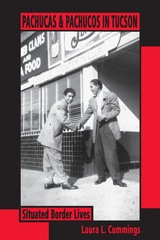 Pachucas and Pachucos in Tucson: Situated Border Lives
Laura L. Cummings
University of Arizona Press, 2009 When the Zoot Suit Riots ignited in Los Angeles in 1943, they quickly became headline news across the country. At their center was a series of attacks by U.S. Marines and sailors on young Mexican American men who dressed in distinctive suits and called themselves pachucos. The media of the day portrayed these youths as miscreants and hoodlums. Even though the outspoken First Lady, Eleanor Roosevelt, quickly labeled them victims of race riots, the initial portrayal has distorted images ever since. A surprising amount of scholarship has reinforced those images, writes Laura Cummings, proceeding from what she calls “the deviance school of thought.”
This innovative study examines the pachuco phenomenon in a new way. Exploring its growth in Tucson, Arizona, the book combines ethnography, history, and sociolinguistics to contextualize the early years of the phenomenon, its diverse cultural roots, and its language development in Tucson.
Unlike other studies, it features first-person research with men and women who—despite a wide span of ages—self-identify as pachucos and pachucas. Through these interviews and her archival research, the author finds that pachuco culture has deep roots in Tucson and the Southwest. And she discovers the importance of the pachuco/caló language variety to a shared sense of pachuquismo. Further, she identifies previously neglected pachuco ties to indigenous Indian languages and cultures in Mexico and the United States.
Cummings stresses that the great majority of people conversant with the culture and language do not subscribe to the dynamics of contemporary hardcore gangs, but while zoot suits are no longer the rage today, the pachuco language and sensibilities do live on in Mexican American communities across the Southwest and throughout the United States.
Pachuco: An American-Spanish Argot and Its Social Functions in Tucson, Arizona
George Carpenter Barker
University of Arizona Press, 1969 George Carpenter Barker's first major research project was field work in Tucson, Arizona on the function of language in a situation of culture contact. The results of his doctoral dissertation, "Social Functions of Language in a Mexican-American Community." The data and conclusions presented in his dissertation showed his perceptiveness in cross-cultural situations.
He conducted additional field work on the social functions of language in cross-cultural situations in Tucson in 1947-48. This work centered around interviews with Mexican-American youths. Barker's quiet friendliness and understanding won the confidence of boys who were operating at the fringes, and who were his informants for this Pachuco study.
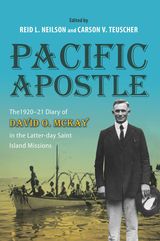 Pacific Apostle: The 1920-21 Diary of David O. McKay in the Latter-day Saint Island Missions
David O. McKay, Edited by Reid L. Neilson and Carson V. Teuscher
University of Illinois Press, 2020 In 1920, David O. McKay embarked on a journey that forever changed the Church of Jesus Christ of Latter-day Saints. His visits to the Latter-day Saint missions, schools, and branches in the Pacific solidified the Church leadership's commitment to global outreach. As importantly, the trip inspired McKay's own initiatives when he later became Church president. McKay's account of his odyssey brings to life the story of the Church of Jesus Christ’s transformation into a global faith. Throughout his diary, McKay expressed his humanity, curiosity, and fascination with cultures and places--the Maori hongi, East Asian customs, Australian wildlife, and more. At the same time, he and his travel companion, Hugh J. Cannon, detailed the Latter-day Saint missionary life of the era, closely observing logistical challenges and cultural differences, guiding various church efforts, and listening to followers' impressions and concerns. Reid L. Neilson and Carson V. Teuscher's meticulous notes provide historical, religious, and general context for the reader.Blending travelogue with history, Pacific Apostle illuminates the thought and work of an essential figure in the twentieth-century Church of Jesus Christ.
 Pacific Art in Detail
Jenny Newell
Harvard University Press, 2011 Pacific Art in Detail introduces the riches of Oceanic art through astonishing close-up views of rarely seen treasures, allowing behind-the-scenes insight into this vibrant work that no conventional gallery tour affords. Carefully selected pieces from the world-renowned Oceanic collection at the British Museum—by artists employing a wide variety of materials and techniques—illustrate such major themes as the role of artistic creation in land and ocean management, political and spiritual power, and connections to gods and ancestors.
Jenny Newell’s introduction addresses the question “What is Pacific art?” while short texts place each individual object into its cultural context. Handsome photographs of each complete work are displayed alongside these fine details, to allow for intriguing comparisons between seemingly unrelated objects and media.
Evoking the hand and eye of the most accomplished Pacific artists and craft workers, past and present, these details spur the creative imagination and serve as an astute introduction to Oceanic collections in museums around the world.
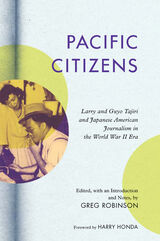 Pacific Citizens: Larry and Guyo Tajiri and Japanese American Journalism in the World War II Era
Edited, with and Introduction and Notes, by Greg Robinson: Foreword by Harry Honda
University of Illinois Press, 2012 Offering a window into a critical era in Japanese American life, Pacific Citizens collects key writings of Larry S. Tajiri, a multitalented journalist, essayist, and popular culture maven. He and his wife, Guyo, who worked by his side, became leading figures in Nisei political life as the central purveyors of news for and about Japanese Americans during World War II, both those confined in government camps and others outside. The Tajiris made the community newspaper the Pacific Citizen a forum for liberal and progressive views on politics, civil rights, and democracy, insightfully addressing issues of assimilation, multiracialism, and U.S. foreign relations. Through his editorship of the Pacific Citizen as well as in articles and columns in outside media, Larry Tajiri became the Japanese American community's most visible spokesperson, articulating a broad vision of Nisei identity to a varied audience. In this thoughtfully framed and annotated volume, Greg Robinson interprets and examines the contributions of the Tajiris through a selection of writings, columns, editorials, and correspondence from before, during, and after the war. Pacific Citizens contextualizes the Tajiris' output, providing a telling portrait of these two dedicated journalists and serving as a reminder of the public value of the ethnic community press.
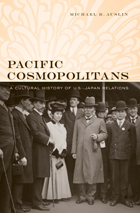 Pacific Cosmopolitans: A Cultural History of U.S.-Japan Relations
Michael R. Auslin
Harvard University Press, 2011 Decades before Americans cheered on Ichiro Suzuki, Japanese baseball fans swooned over Babe Ruth. And a century prior to the craze for anime and manga, American art collectors hoarded Japanese woodblock prints. Few relationships can match the depth, or importance, of the cultural ties between America and Japan over the past two hundred years. In Pacific Cosmopolitans, Michael Auslin tells this absorbing history in full for the first time.
From the moment adventurers reached each other's shores in the early 1800s, cultural encounter formed the bedrock of U.S.–Japan ties. Such casual connections turned into formal cultural exchange within the emerging global society of the late nineteenth century. As both countries became great powers, new cultural institutions supplemented political ties and helped promote economic trade, shaping the Pacific world yet becoming entangled in controversy. These trans-Pacific activities faced critics in both countries and were overwhelmed by rising nationalism and geopolitical crisis in the early twentieth century.
In the decades since World War II, however, U.S.–Japan cultural exchange has again been seen as a crucial means to strengthen the bonds between the two nations. Bringing together philanthropists like the Rockefeller family and artists like Akira Kurosawa, along with untold numbers of ordinary Americans and Japanese, the acolytes of exchange continue to believe that cross-cultural understanding will promote a more peaceful future, even in the face of competing national interests.
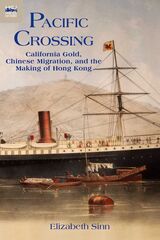 Pacific Crossing: California Gold, Chinese Migration, and the Making of Hong Kong
Elizabeth Sinn
Hong Kong University Press, 2014 During the nineteenth century tens of thousands of Chinese men and women crossed the Pacific to work, trade, and settle in California. Drawn initially by the gold rush, they took with them skills and goods and a view of the world which, though still Chinese, was transformed by their long journeys back and forth. They in turn transformed Hong Kong, their main point of embarkation, from a struggling infant colony into a prosperous international port and the cultural center of a far-ranging Chinese diaspora. Making use of extensive research in archives around the world, Pacific Crossing charts the rise of Chinese Gold Mountain firms engaged in all kinds of transpacific trade, especially the lucrative export of prepared opium and other luxury goods. Challenging the traditional view that the migration was primarily a “coolie trade,” Elizabeth Sinn uncovers leadership and agency among the many Chinese who made the crossing. In presenting Hong Kong as an “in-between place” of repeated journeys and continuous movement, Sinn also offers a fresh view of the British colony and a new paradigm for migration studies.
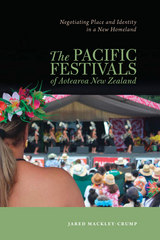 The Pacific Festivals of Aotearoa New Zealand: Negotiating Place and Identity in a New Homeland
Jared Mackley-Crump
University of Hawaii Press, 2015 With a history now stretching back four decades, Pacific festivals of Aotearoa assert a multicultural identity of New Zealand and situate the country squarely within a sea of islands. In this volume Jared Mackley-Crump gives a provocative look at the changing demographics and cultural landscape of a place frequently viewed through a bicultural lens, Pakeha and Maori. Taking the post–World War II migrations of Pacific peoples to New Zealand as its starting point, the story begins in 1972 with the inaugural Polynesian Festival, an event that was primarily designed as a Māori festival, now known as Te Matatini, the largest Māori performing arts event in the world. Two major moments of festivalization are considered: the birth of Polyfest in 1976, and the inaugural Pasifika Festival of 1993. Both began in Auckland, the home of the largest Pacific communities in New Zealand, and both have spawned a series of events that follow these models they successfully established. While Polyfests focus primarily on the transmission of performance traditions from culture bearers to the young, largely New Zealand-born generations, Pasifika festivals are highly public community events, in which diverse displays of material culture are offered up for consumption by both cultural tourists and Pacific communities alike. Both models have experienced a significant period of growth since 1993, and here, the author presents a thought-provoking and wide-ranging analysis to explain the phenomenon that has been called a “Pacific renaissance.” Written from an ethnomusicological perspective The Pacific Festivals of Aotearoa New Zealand incorporates lively first-person observations as well as interviews with festival organizers, performers, and other important historical figures. The second half of the book delves into the festival space, uncovering new meanings about the function and role of music performance and public festivity. The author skillfully challenges accounts that label festivals as inauthentic recreations of culture for tourist audiences and gives both observers and participants an uplifting new approach to understand these events as meaningful and symbolic extensions of the ways diasporic Pacific communities operate in New Zealand.
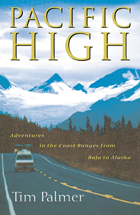 Pacific High: Adventures In The Coast Ranges From Baja To Alaska
Tim Palmer
Island Press, 2002 "Starting out, my mind and spirit were open to the mystery of foreign cultures, the spareness of aridity, the tension of seismicity, the heat of fire, the exuberance of the vast, the abundance of rot and rebirth, the kindness of strangers, the indomitable rules of climate, the triumph of life, the limits of the earth.""—from the prologue. On a crisp January morning, the first day of a new year, writer Tim Palmer and his wife set out in their custom-outfitted van on a nine-month journey through the Pacific Coast Ranges. With a route stretching from the dry mesas of the Baja Peninsula to the storm-swept Alaskan island of Kodiak, they embarked on an incomparable tour of North America's coastal mountains high above the Pacific. In Pacific High, Palmer recounts that adventure, interweaving tales of exploration and discovery with portraits of the places they visited and the people they came to know along the way. Bringing together images of places both exotic and familiar with profiles of intriguing people and descriptions of outdoor treks on foot, skis, mountain bike, canoe, and whitewater raft, Palmer captures the brilliant wonders of nature, the tragedy of irreversible loss, and the hope of everyone who cares for this extraordinary but threatened edge of North America. At the heart of the story is author's concern for the health of the land and all its life. Nature thrives in many parts of the Coast Ranges—pristine rivers and ancient forests that promise refuge to the king salmon and the grizzly bear—but with a human population of 36 million, nature is under attack throughout the region. Oil spills, clearcutting, smog, sprawling development and more threaten even national parks and refuges. Yet Palmer remains hopeful, introducing readers to memorable people who strive for lasting stewardship in this land they call home.
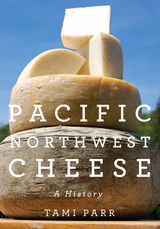 Pacific Northwest Cheese: A History
Tami Parr
Oregon State University Press, 2013 In this rich and engaging history, Tami Parr shows how regional cheesemaking found its way back to the farm. It’s a lively story that begins with the first fur traders in the Pacific Northwest and ends with modern-day small farmers in Oregon, Washington, and Idaho.
For years, farmers in the Pacific Northwest made and sold cheese to support themselves, but over time the craft of cheesemaking became a profitable industry and production was consolidated into larger companies and cooperatives. Eventually, few individual cheesemakers were left in the region. In the late sixties and early seventies, influenced by the counterculture and back-to-the-land movements, the number of small farms and cheesemakers began to grow, initiating an artisan cheese renaissance that continues today.
Along with documenting the history of cheese in the region, Parr reveals some of the Pacific Northwest’s untold cheese stories: the fresh cheese made on the Oregon Trail, the region’s thriving blue cheese and regional swiss cheese makers, and the rise of goat’s milk and goat’s milk cheese (not the modern phenomenon many assume it to be).
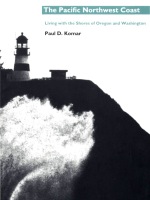 The Pacific Northwest Coast: Living with the Shores of Oregon and Washington
Paul D. Komar
Duke University Press, 1998 While the coast of the Pacific Northwest becomes populated with houses, condominiums, motels, and restaurants, its beaches and cliffs continue to be altered by ocean currents and winter storms. A companion volume to Living with the Shore of Puget Sound and the Georgia Strait, The Pacific Northwest Coast serves as a source of information about the coast of the Pacific Northwest, its geological setting, the natural responses of beaches and cliffs to ocean processes, and the ever-present problem of erosion.
In this guide, Paul D. Komar, one of the nation’s leading coastal oceanographers, examines the lessons taught by ages of geological and cultural history. With explanations of the area’s geological evolution, including natural shoreline erosion and sea-cliff landsliding, Komar details human interaction with the coast: erosion caused by early settlers, the development and destruction of Bayocean Spit, the disastrous effects caused by the 1982–1983 El Niño, and the notorious failure of a construction project on the picturesqueæbut unstableæbluffs at Jump-Off Joe. Emphasizing the actual and potential harm to human projects and to the natural heritage of the coast, Komar provides the knowledge necessary for finding a safe home near the shore while preserving the beauty that draws us to it.
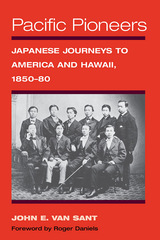 Pacific Pioneers: Japanese Journeys to America and Hawaii, 1850-80
John E. Van Sant
University of Illinois Press, 2019 Shipwrecked sailors, samurai seeking a material and sometimes spiritual education, and laborers seeking to better their economic situation: these early Japanese travelers to the West occupy a little-known corner of Asian American studies. Pacific Pioneers profiles the first Japanese who resided in the United States or the Kingdom of Hawaii for a substantial period of time and the Westerners who influenced their experiences.
Although Japanese immigrants did not start arriving in substantial numbers in the West until after 1880, in the previous thirty years a handful of key encounters helped shape relations between Japan and the United States. John E. Van Sant explores the motivations and accomplishments of these resourceful, sometimes visionary individuals who made important inroads into a culture quite different from their own and paved the way for the Issei and Nisei.
Pacific Pioneers presents detailed biographical sketches of Japanese such as Joseph Heco, Niijima Jo, and the converts to the Brotherhood of the New Life and introduces the American benefactors, such as William Griffis, David Murray, and Thomas Lake Harris, who built relationships with their foreign visitors. Van Sant also examines the uneasy relations between Japanese laborers and sugar cane plantation magnates in Hawaii during this period and the shortlived Wakamatsu colony of Japanese tea and silk producers in California.
A valuable addition to the literature, Pacific Pioneers brings to life a cast of colorful, long-forgotten characters while forging a critical link between Asian and Asian American studies.
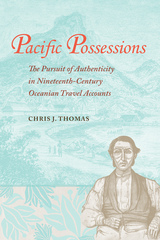 Pacific Possessions: The Pursuit of Authenticity in Nineteenth-Century Oceanian Travel Accounts
Chris J. Thomas
University of Alabama Press, 2021 Reframes Polynesia and Melanesia through analysis of nineteenth-century travel writing
In Pacific Possessions: The Pursuit of Authenticity in Nineteenth-Century Oceanian Travel Accounts, Chris J. Thomas expands the literary canon on Polynesia and Melanesia beyond the giants, such as Herman Melville and Jack London, to include travel narratives by British and American visitors. These accounts were widely read and reviewed when they first appeared but have largely been ignored by scholars. For the first time, Thomas defines these writings as a significant literary genre.
Recovering these works allows us to reconceive of nineteenth-century Oceania as a vibrant hub of cultural interchange. Pacific Possessions recaptures the polyphony of voices that enlivened this space through the writing of these travelers, while also paying attention to their Oceanian interlocutors. Each chapter centers on a Pacific cultural marker, what Thomas refers to as each writer’s “possession”: the Tongan tattoo, the Hawaiian hula, the Fijian cannibal fork, and Robert Louis Stevenson’s cache of South Seas photographs.
Thomas analyzes how westerners formed narratives around these objects and what those objects meant within nineteenth-century Oceanian cultures. He argues that the accounts served to shape a version of Oceanian authenticity that persists today. The profiled traveler-writers had complex experiences, at times promoting exoticized exaggerations of so-called authentic Polynesian and Melanesian cultures and at other times genuinely engaging in cultural exchange. However, their views were ultimately compromised by a western lens. In Thomas’s words, “the authenticity is at once celebrated and written over.”
Pacific Strife: The Great Powers and their Political and Economic Rivalries in Asia and the Western Pacific, 1870-1914
Kees van Dijk
Amsterdam University Press, 2015 In the late 1800s and early 1900s, colonial powers clashed over much of Central and East Asia: Great Britain and Germany fought over New Guinea, the Bismarck Archipelago, Fiji, and Samoa; France and Great Britain competed over control of continental Southwest Asia; and the United States annexed the Philippines and Hawaii. Meanwhile, the possible disintegration of China and Japan’s growing nationalism added new dimensions to the rivalries.
Surveying these and other international developments in the Pacific basin during the three decades preceding World War I, Kees van Dijk traces the emergence of superpowers during the colonial race and analyzes their conduct as they struggled for territory. Extensive in scope, Pacific Strife is a fascinating look at a volatile moment in history.
Pacific Tremors
Richard Stern
Northwestern University Press, 2001 Ez Keneret and Wendell Spear are Hollywood veterans who have committed the only sin in the movie business: they've grown old. Having been cast aside, they face their obsolescence and the harsh reality that the art they appreciate (and profit from) is just a business powered by money and celebrity. While Spear is consoled and comforted by his granddaughter, Keneret centers his comeback film on Leet de Loor, a stunning but painfully wooden "actress" he discovers in Fiji.
Pacific Tremors
Richard Stern
Northwestern University Press, 2007 Ez Keneret and Wendell Spear are Hollywood veterans who have committed the only sin in the movie business: they've grown old. Having been cast aside, they face their obsolescence and the harsh reality that the art they appreciate (and profit from) is just a business powered by money and celebrity. While Spear is consoled and comforted by his granddaughter, Keneret centers his comeback film on Leet de Loor, a stunning but painfully wooden "actress" he discovers in Fiji.
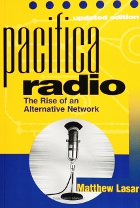 Pacifica Radio 2E
Matthew Lasar
Temple University Press, 2000 In the public radio landscape, the Pacifica stations stand out as inn0ovators of diverse and controversial broadcasting. Pacifica's fifty years of struggle against social and political conformity began with a group of young men and women who hoped to change the world with a credo of non-violence. Pacifica Radio traces the cultural and political currents that shaped the first listener-supported radio station, KPFA FM in Berkeley, and accompanied Pacifica's gradual expansion into a 5 station network.
In this expanded paperback edition, Lasar provides a postscript ("A Crisis of Containment") that examines the external pressures and organizational problems within the Pacifica Foundation that led, in early 1999, to the police shutdown of network station KPFA. Lasar, an admittedly pro-KPFA partisan in the conflict, gives a first-person account, calling it "the worst crisis in the history of community radio."
Yet Pacifica Radio is about more than just the network's recent troubles. It is the story of visionary Lewis Hill and the small band of pacifists who in 1946, set out to build institutions that would promote dialogue between individuals and nations. KPFA took to the air in 1949 with stunningly unconventional programs that challenged the dreary cultural consensus of the Cold War. No one in the Bay Area, or anywhere else, had heard anything like it on the airwaves.
The first edition of Pacifica Radio, which made the San Francisco Chronicle's non-fiction bestseller list, was praised as "fascinating reading" by In These Times, "Lasar has an eye for paradox, irony and contradiction," wrote the Santa Rose Press Democrat, "but he is first and foremost an able and astute historian."
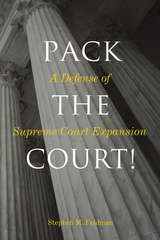 Pack the Court!: A Defense of Supreme Court Expansion
Stephen M. Feldman
Temple University Press, 2021 The United States Supreme Court has numbered nine justices for the past 150 years. But that number is not fixed. With the Democrats controlling the House and Senate during the Biden presidency, they could add justices to the Supreme Court. But would court packing destroy the Court as an apolitical judicial institution? This is the crucial question Stephen Feldman addresses in his provocative book, Pack the Court! He uses a historical, analytical, and political argument to justify court-packing in general and Democratic court-packing more specifically. Republicans and Democrats alike profess to worry that court-packing will destroy the legitimacy of the Supreme Court as a judicial institution by injecting politics into a purely legal adjudicative process. But as Feldman’s insightful book shows, law and politics are forever connected in judicial interpretation and decision making. Pack the Court! insists that court packing is not the threat to the Supreme Court’s institutional legitimacy that many fear. Given this, Feldman argues that Democrats should pack the Court while they have the opportunity. Doing so might even strengthen the American people’s faith in the Court.
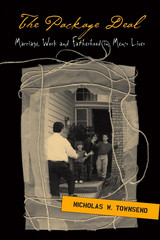 Package Deal: Marriage, Work And Fatherhood In Men'S Lives
Nicholas W. Townsend
Temple University Press, 2002 In this important new work, Nicholas Townsend explores what men say about being fathers, and about what fatherhood means to them. He shows how men negotiate the prevailing cultural values about fatherhood, marriage, employment, and home ownership that he conceptualizes as a "package deal." Townsend identifies the conflicts and contradictions within the gendered expectations of men and fathers, and analyzes the social and economic contexts that make emotionally involved fathering an elusive ideal.Drawing on the lives and life stories of a group of men in their late forties who graduated from high school together in the early 1970s, The Package Deal demystifies culture's image of fatherhood in the United States. These men are depicted as neither villains nor victims, but as making their best efforts to achieve successful adult masculinity. This book shows what fathers really think about fatherhood, the division of labor between fathers and mothers, the gendered difference in expectations, and the privileging of the relationship between fathers and sons.These revealing accounts of how fatherhood fits into the rest of men's lives help us better understand what men can and cannot do as fathers. And they clearly illustrate that women are not alone in trying to "have it all" as they strive to combine work and family.
 Packaged Plants: Seductive Supplements and Metabolic Precarity in the Philippines
Anita Hardon and Michael Lim Tan
University College London, 2024 A tight ethnographic focus on the popularity and impact of overly processed plant-based foods and supplements in the Philippines.
Through meticulous research and insightful analysis, Packaged Plants explores the intersectionality between health, economics, and environment in the Philippines, offering an absorbing ethnography and cultural history of how the production and consumption of plants for food and medicine have changed as well as how ultra-processed foods have become linked to health concerns, including cardiovascular disease, diabetes, and obesity.
Part one of the book presents a comprehensive analysis scrutinizing the colonial influences, urbanization, nutritional policies, research programs, and neoliberal marketing strategies in the Philippines that have proliferated packaged plant-based products as food and medicines. Part two interweaves contemporary urban political ecology frameworks with medical anthropological perspectives within Puerto Princesa and elucidates the precarious circumstances compelling individuals to invest in supplements.
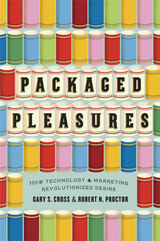 Packaged Pleasures: How Technology and Marketing Revolutionized Desire
Gary S. Cross and Robert N. Proctor
University of Chicago Press, 2014 From the candy bar to the cigarette, records to roller coasters, a technological revolution during the last quarter of the nineteenth century precipitated a colossal shift in human consumption and sensual experience. Food, drink, and many other consumer goods came to be mass-produced, bottled, canned, condensed, and distilled, unleashing new and intensified surges of pleasure, delight, thrill—and addiction.
In Packaged Pleasures, Gary S. Cross and Robert N. Proctor delve into an uncharted chapter of American history, shedding new light on the origins of modern consumer culture and how technologies have transformed human sensory experience. In the space of only a few decades, junk foods, cigarettes, movies, recorded sound, and thrill rides brought about a revolution in what it means to taste, smell, see, hear, and touch. New techniques of boxing, labeling, and tubing gave consumers virtually unlimited access to pleasures they could simply unwrap and enjoy. Manufacturers generated a seemingly endless stream of sugar-filled, high-fat foods that were delicious but detrimental to health. Mechanically rolled cigarettes entered the market and quickly addicted millions. And many other packaged pleasures dulled or displaced natural and social delights. Yet many of these same new technologies also offered convenient and effective medicines, unprecedented opportunities to enjoy music and the visual arts, and more hygienic, varied, and nutritious food and drink. For better or for worse, sensation became mechanized, commercialized, and, to a large extent, democratized by being made cheap and accessible. Cross and Proctor have delivered an ingeniously constructed history of consumerism and consumer technology that will make us all rethink some of our favorite things.
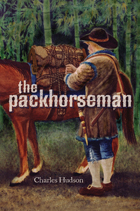 The Packhorseman
Charles Hudson
University of Alabama Press, 2009 In April 1735, twenty-year-old William MacGregor, possessing little more than a bottle of Scotch whiskey and a set of Shakespeare’s plays, arrives in Charles Town, South Carolina, to make his fortune in the New World. The Scottish Highlands, while dear to his heart, were in steep economic decline and hopelessly entangled in dangerous political intrigue. With an uncle in Carolina, the long ocean voyage seemed his best chance for a new start. He soon discovers that the Jacobite politics of Scotland extend to Carolina, and when his mouth gets him in trouble with the Charles Town locals, dimming his employment opportunities, he seizes the one option still open for him and takes a job as a frontier packhorseman. Soon young MacGregor is on the Cherokee trail to Indian country, where he settles in as a novice in the deerskin trade. Along the way William learns not only the arts of managing a pack train and trading with the Indians, but of reading the land and negotiating cultural differences with the Cherokee—whose clan system is much different from the Scottish clans of his homeland. William also learns that the Scottish enlightenment he so admires has not made much headway in the Carolina backcountry, where the real challenges are to survive, day to day, during the tense times after the Yamasee War and to remember that while in Indian country . . . it is their country. A scholar of the native Southeast, Charles Hudson has turned his hand to this work of historical fiction, bringing to life the packhorsemen, Indian traders, and southeastern Indians of the early 18th-century Carolina. With a comfortable and engaging style, Hudson peoples the Carolina frontier with believable characters, all caught up in a life and time that is historically well-documented but little-known to modern popular readers.
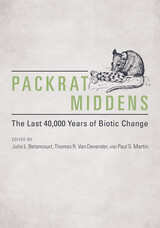 Packrat Middens: The Last 40,000 Years of Biotic Change
Edited by Julio L. Betancourt, Thomas R. Van Devender, and Paul S. Martin
University of Arizona Press, 1990 Over the past thirty years, late Quaternary environments in the arid interior of western North America have been revealed by a unique source of fossils: well-preserved fragments of plants and animals accumulated locally by packrats and quite often encased, amberlike, in large masses of crystallized urine. These packrat middens are ubiquitous in caves and rock crevices throughout the arid West, where they can lie preserved for tens of thousands of years. More than a thousand of these deposits have been dated and analyzed, and middens have supplanted pollen records as a touchstone for studying vegetation dynamics and climatic change in radiocarbon time (the last 40,000 years). Now, similar deposits made by other mammals like hyraxes are being reported from other parts of the world.
This book brings together the findings and views of many of the researchers investigating fossil middens in the United States, Mexico, Africa, the Middle East, and Australia. The contributions serve to open a forum for methodological concerns, update the fossil record of various geographic regions, introduce new applications, and display the vast potential for fossil midden analysis in arid regions worldwide. The findings presented here will serve to foster regional research and to promote general studies devoted to global climate change. Included in the text are more than two hundred charts, photographs, and maps.
Packy Jim: Folklore and Worldview on the Irish Border
Ray Cashman
University of Wisconsin Press, 2017 Growing up on a secluded smuggling route along the border of Northern Ireland and the Republic, Packy Jim McGrath regularly heard the news, songs, and stories of men and women who stopped to pass the time until cover of darkness. In his early years, he says, he was all ears—but now it is his turn to talk.
Ray Cashman, who has been interviewing McGrath for more than fifteen years, demonstrates how Packy Jim embellishes daily conversation with stories of ghosts and fairies, heroic outlaws and hateful landlords. Such folklore is a boundless resource that he uses to come to grips with the past and present, this world and the next. His stories reveal an intricate worldview that is both idiosyncratic and shared—a testament to individual intelligence and talent, and a window into Irish vernacular culture.
The Pact
Jennifer Militello
Tupelo Press, 2021 In her newest collection, award-winning poet and memoirist Jennifer Militello confronts obsession, intimacy, and abuse. Through love poems inspired by such disparate spaces as a British art museum and the reptile house of a local zoo, poems comparing a romantic affair to the religious cult at Jonestown and a mother’s role to a Congolese power figure bristling with nails, The Pact offers an indictment against affection and a portent against zeal. This book places pleasure alongside pain, even as it delivers Militello’s trademark talent for innovation and ritualization of the strange.
Paddle Whispers
Douglas Wood
University of Minnesota Press, 2005 And so begins a journey—not only an exploration of rapids, lakes, and forests, but also an inner journey of discovery. Through poetic text and drawings, woven gracefully with quotes by John Muir, Walking Buffalo, Sigurd F. Olson, Henry David Thoreau, and others, Douglas Wood traces a journey by paddle and canoe that renews the spirit.
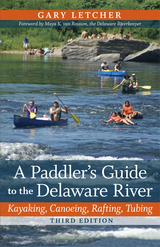 A Paddler's Guide to the Delaware River: Kayaking, Canoeing, Rafting, Tubing
Letcher, Gary
Rutgers University Press, 2012 When Henry Hudson explored the Delaware River in 1609, he dubbed it “one of the finest, best, and pleasantest rivers in the world.” Today, those same qualities make the Delaware one of the most popular rivers for recreational use in the United States. Although in places a near-wilderness, the Delaware is easily accessible to millions of residents. On any summer day there may be thousands of people rushing down its exciting rapids or lazing through its serene eddies. A Paddler’s Guide to the Delaware River is an indispensable resource for anyone who wants to experience the Delaware River in a kayak, canoe, raft, or tube—or, for that matter, an automobile or an armchair. Reading the book is like travelling down the river with an experienced guide. It charts the non-tidal Delaware 200 miles from Hancock, New York, to Trenton, New Jersey, describing access points, rapids, natural features, villages, historical sites, campgrounds, outfitters, and restaurants. The Delaware comes alive as the author introduces some of the people, places, events, and controversies that have marked the river from earliest times to the present day.
Completely revised, the third edition offers: - An overview of the river including watershed, history, place names, paddlecraft, safety, and fishing.
- The River Guide: ten sections that can each be paddled in one day (about 20 miles), with a mile-by-mile account of rapids, access, natural features, historic sites, and other features.
- All new maps, with names for virtually every rapid, eddy, and other river feature, plus detailed diagrams for routes through even the most severe rapids.
- Features in the River Guide highlight the people, events, natural history, and communities that define the river experience, such as Tom Quick, the infamous “avenger of the Delaware”; the mysterious migration of eels, the battle over Tocks Island Dam; and many others.
- Appendices of Important Contacts, Outfitters and Campgrounds, River Trip Checklists, and more.
Whether you are a novice out for an afternoon float, a seasoned adventurer on an overnight expedition, or a resident fascinated by the lore of the Delaware Valley, this book is an invaluable guide.
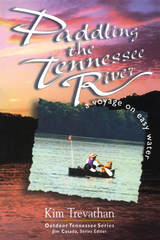 Paddling The Tennessee River: A Voyage On Easy Water
Kim Trevathan
University of Tennessee Press, 2001 In late August 1998, Kim Trevathan and his dog, Jasper, set out by canoe on a long, slow trip down the 652 miles of the Tennessee River, the largest tributary of the Ohio. Trevathan wanted to experience the river in its entirety, from Knoxville’s narrow, winding channel, which flows past rocky bluffs, to the wide-open waters of Kentucky Lake at its lower end.
Over the course of the five-week voyage, Trevathan rediscovered the people and places that made history on the Tennessee’s banks. He crossed the path of the explorer Meriwether Lewis along the Natchez Trace, noted the sites of Ulysses S. Grant’s Civil War battles, and passed Hiwassee Island, the spot where a teenaged runaway named Sam Houston lived with Cherokee Chief Jolly.
Trevathan also came to know the modern river’s dwellers, including a towboat pilot, two couples who traded in their landlocked homes for life on the river, a campground owner, and a meteorologist for NASA. He placed his life in the hands of U.S. Army Corps of Engineers lock operators as he and Jasper navigated the river’s nine dams.
Paddling the Tennessee River is a powerful travel narrative that captures the river’s wild, turbulent, and defiant past and confronts what it has become—an overused and overdeveloped series of lakes. But first and foremost, the book is the story of a man and his dog, riding low enough to smell the water and to discover the promise of a slow river running through the southern heartland.
The Author: Kim Trevathan, who earned his M.F.A. in creative writing at the University of Alabama, works as a new media writer and producer and writes a column for the Maryville Daily Times. His essays and short stories have been published in The Distillery, New Millennium Writings, The Texas Review, New Delta Review, and Under the Sun. He lives in Rockford, Tennessee.
The Paddy Camps: The Irish of Lowell, 1821-61
Brian C. Mitchell
University of Illinois Press, 1988 The dramatic story of the fights and compromises that shaped an Irish community Disdained by many Yankee residents as Catholic lowlifes, the growing Irish population of the Lowell, Massachusetts, “paddy camps” in the nineteenth century proved a tempting source of cheap labor for local mill owners, who took advantage of the immigrants’ proximity to exploit them to the fullest. Displaced by their cheaper labor, other workers blamed the Irish for job losses and added to their plight through repression and segregation. Now in paperback and featuring a new preface, Brian C. Mitchell’s The Paddy Camps demonstrates how the Irish community in Lowell overcame adversity to develop strong religious institutions, an increased political presence, and a sense of common traditions.
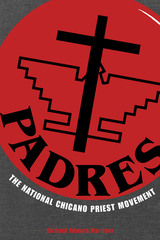 PADRES: The National Chicano Priest Movement
By Richard Edward Martínez
University of Texas Press, 2005 From the 1848 Treaty of Guadalupe Hidalgo to the 1960s, Mexican American Catholics experienced racism and discrimination within the U.S. Catholic church, as white priests and bishops maintained a racial divide in all areas of the church's ministry. To oppose this religious apartheid and challenge the church to minister fairly to all of its faithful, a group of Chicano priests formed PADRES (Padres Asociados para Derechos Religiosos, Educativos y Sociales, or Priests Associated for Religious, Educational, and Social Rights) in 1969. Over the next twenty years of its existence, PADRES became a powerful force for change within the Catholic church and for social justice within American society. This book offers the first history of the founding, activism, victories, and defeats of PADRES. At the heart of the book are oral history interviews with the founders of PADRES, who describe how their ministries in poor Mexican American parishes, as well as their own experiences of racism and discrimination within and outside the church, galvanized them into starting and sustaining the movement. Richard Martínez traces the ways in which PADRES was inspired by the Chicano movement and other civil rights struggles of the 1960s and also probes its linkages with liberation theology in Latin America. He uses a combination of social movement theory and organizational theory to explain why the group emerged, flourished, and eventually disbanded in 1989.
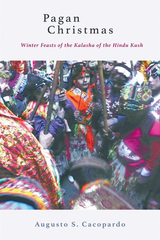 Pagan Christmas: Winter Feasts of the Kalasha of the Hindu Kush
Augusto S. Cacopardo
Gingko, 2017 This authoritative work sheds light on the religious world of the Kalasha people of the Birir valley in the Chitral district of Pakistan, focusing on their winter feasts, which culminate every year in a great winter solstice festival. The Kalasha are not only the last example of a pre-Islamic culture in the Hindu Kush and Karakorum mountains but also practice the last observable example anywhere in the world of an archaic Indo-European religion. In this book, Augusto S. Cacopardo takes readers inside the world of the Kalasha people.
Cacopardo outlines the history and culture of this ancient but still extant people. Exploring an array of relevant literature, he enriches our understanding of their practices and beliefs through illuminating comparisons with both the Indian religious world and the religious folklore of Europe. Bringing together several disciplinary approaches and drawing on extensive ethnographic fieldwork, this book offers the first extended study of this little-known but fascinating Kalasha community. It will take its place as a standard international reference source on the anthropology, ethnography, and history of religions in Pakistan and Central South Asia.
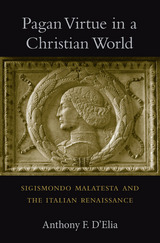 Pagan Virtue in a Christian World: Sigismondo Malatesta and the Italian Renaissance
Anthony F. D'Elia
Harvard University Press, 2016 In 1462 Pope Pius II performed the only reverse canonization in history, publicly damning a living man. The target was Sigismondo Malatesta, Lord of Rimini and a patron of the arts with ties to the Florentine Renaissance. Condemned to an afterlife of torment, he was burned in effigy in several places in Rome. What had this cultivated nobleman done to merit such a fate?
Pagan Virtue in a Christian World examines anew the contributions and contradictions of the Italian Renaissance, and in particular how the recovery of Greek and Roman literature and art led to a revival of pagan culture and morality in fifteenth-century Italy. The court of Sigismondo Malatesta (1417–1468), Anthony D’Elia shows, provides a case study in the Renaissance clash of pagan and Christian values, for Sigismondo was nothing if not flagrant in his embrace of the classical past. Poets likened him to Odysseus, hailed him as a new Jupiter, and proclaimed his immortal destiny. Sigismondo incorporated into a Christian church an unprecedented number of zodiac symbols and images of the Olympian gods and goddesses and had the body of the Greek pagan theologian Plethon buried there.
In the literature and art that Sigismondo commissioned, pagan virtues conflicted directly with Christian doctrine. Ambition was celebrated over humility, sexual pleasure over chastity, muscular athleticism over saintly asceticism, and astrological fortune over providence. In the pagan themes so prominent in Sigismondo’s court, D’Elia reveals new fault lines in the domains of culture, life, and religion in Renaissance Italy.
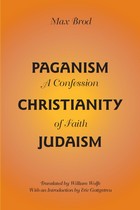 Paganism - Christianity - Judaism: A Confession of Faith
Max Brod, translated by William Wolfe, introduction by Eric Gottgetreu
University of Alabama Press, 1970 Now remembered primarily as Franz Kafta's friend and literary executor, Max Brod was an accomplishered thinker and writer in his own right. In this volume, he considers the nature and differences between Judaism and Christianity, addressing some of the most perplexing questions at the heart of human existence. “One of the most famous and widely discussed books of the 1920’s, Max Brod’s Paganism—Christianity—Judaism, has at last found its way into English translation to confront a new generation of readers. Max Brod is best remembered today as the literary editor and friend of Franz Kafka. In his day, however, he was the more famous of the two by far. A major novelist, playwright, poet, essayist, and composer, he was also, as this book demonstrates, a serious thinker on the perennial questions that are at the heart of human existence. . . .Some of his judgments are open to question. Still, with all its limitations, this is a forthright and passionate proclamation of the uniqueness of Judaism. Paganism—Christianity—Judaism was an intellectual and spiritual event when it was first published and it remains a valuable document even now.” —Rabbi Jack Riemer, Hadassah
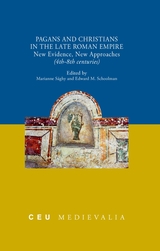 Pagans and Christians in the Late Roman Empire: New Evidence, New Approaches (4th–8th centuries)
Marianne Sághy
Central European University Press, 2017 Do the terms 'pagan' and 'Christian,' 'transition from paganism to Christianity' still hold as explanatory devices to apply to the political, religious and cultural transformation experienced Empire-wise? Revisiting 'pagans' and 'Christians' in Late Antiquity has been a fertile site of scholarship in recent years: the paradigm shift in the interpretation of the relations between 'pagans' and 'Christians' replaced the old 'conflict model' with a subtler, complex approach and triggered the upsurge of new explanatory models such as multiculturalism, cohabitation, cooperation, identity, or group cohesion. This collection of essays, inscribes itself into the revisionist discussion of pagan-Christian relations over a broad territory and time-span, the Roman Empire from the fourth to the eighth century. A set of papers argues that if 'paganism' had never been fully extirpated or denied by the multiethnic educated elite that managed the Roman Empire, 'Christianity' came to be presented by the same elite as providing a way for a wider group of people to combine true philosophy and right religion. The speed with which this happened is just as remarkable as the long persistence of paganism after the sea-change of the fourth century that made Christianity the official religion of the State. For a long time afterwards, 'pagans' and 'Christians' lived 'in between' polytheistic and monotheist traditions and disputed Classical and non-Classical legacies.
Pagans in the Early Modern Baltic: Sixteenth-Century Ethnographic Accounts of Baltic Paganism
Francis Young
Arc Humanities Press, 2023 The Grand Duchy of Lithuania was the last European polity to renounce paganism and accept the Christian faith, at the end of the fourteenth century. However, the conversion of the Baltic region continued into the early modern period and the ongoing pagan beliefs and practices of Lithuanians and Prussians excited the interest of early ethnographers. This volume brings together Jan Łasicki's On the Gods of the Samogitians, Jan Malecki’s Little Book on the Sacrifices and Idolatry of the Old Prussians, and other Latin texts on Baltic paganism, none of which have hitherto been translated into English. A critical introduction places these texts, which are of interest far beyond the field of Central European history, in the contexts of early modern ethnography, Baltic history, and Reformation religious polemic.
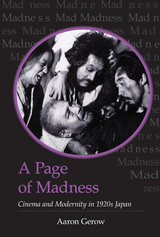 A Page of Madness: Cinema and Modernity in 1920s Japan
Aaron Gerow
University of Michigan Press, 2008 Kinugasa Teinosuke’s 1926 film A Page of Madness (Kurutta ichipeiji) is celebrated as one of the masterpieces of silent cinema. It was an independently produced, experimental, avant-garde work from Japan whose brilliant use of cinematic technique was equal to if not superior to that of contemporary European cinema. Those studying Japan, focusing on the central involvement of such writers as Yokomitsu Riichi and the Nobel Prize winner Kawabata Yasunari, have seen it as a pillar of the close relationship in the Taisho era between film and artistic modernism, as well as a marker of the uniqueness of prewar Japanese film culture. But is this film really what it seems to be? Aaron Gerow brings meticulous research to the film’s production, distribution, exhibition, and reception and closely analyzes the film’s shooting script and shooting notes, which were recently made available. He draws a new picture of this complex work, revealing a film divided between experiment and convention, modernism and melodrama, the image and the word, cinema and literature, conflicts that play out in the story and structure of the film and its context. A Page of Madness, a film fundamentally about differing perceptions and conflicting worlds, was received at the time in different versions and with varying interpretations, and ironically, the film that exists today is not in fact the one originally released. Including a detailed analysis of the film and translations of contemporary reviews and shooting notes for scenes missing from the current print, Gerow’s book offers provocative insight into the fascinating film A Page of Madness was—and still is—and into the struggles over this work that tried to articulate the place of cinema in Japanese society and modernity.
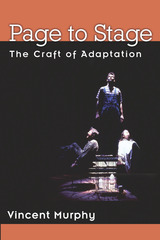 Page to Stage: The Craft of Adaptation
Vincent Murphy
University of Michigan Press, 2013 At last, for those who adapt literature into scripts, a how-to book that illuminates the process of creating a stageworthy play. Page to Stage describes the essential steps for constructing adaptations for any theatrical venue, from the college classroom to a professionally produced production. Acclaimed director Vincent Murphy offers students in theater, literary studies, and creative writing a clear and easy-to-use guidebook on adaptation. Its step-by-step process will be valuable to professional theater artists as well, and for script writers in any medium. Murphy defines six essential building blocks and strategies for a successful adaptation, including theme, dialogue, character, imagery, storyline, and action. Exercises at the end of each chapter lead readers through the transformation process, from choosing their material to creating their own adaptations. The book provides case studies of successful adaptations, including The Grapes of Wrath (adaptation by Frank Galati) and the author's own adaptations of stories by Samuel Beckett and John Barth. Also included is practical information on building collaborative relationships, acquiring rights, and getting your adaptation produced.
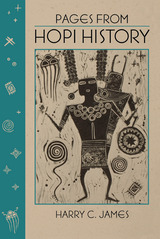 Pages from Hopi History
Harry C. James
University of Arizona Press, 1974 "More than half a century of contact between the author and the Hopi people has resulted in an unusual opportunity for long informative talks with friends from the villages. These conversations in a variety of circumstances have helped to give depth to an understanding and appreciation uncommon among persons not born and raised in the Hopi way. . . . This work gives a comprehensive view of the Hopi as a people, in length of time covered as well as in depth and breadth."—Utah Historical Quarterly
"It is personal yet precise, emotional and involved, yet objective and factual. . . . Readers who know something of Hopi history will be fascinated by the new insights and interpretations presented by James."—Arizona and the West
"The author has been an active supporter of Hopi interests for some fifty years and this book is as much a testimony to his unflagging personal devotion to a small and neglected tribe as it is a history of the Hopis' determination to maintain their identity and self-respect."—Journal of Arizona History
"Harry James writes with sympathy and restraint about a proud people who have suffered unjustly in the past, and who today are seeking an identity. He brings into sharp focus the dreams for tomorrow of the Hopi tribe. Let these dreams be shared by others before it is too late."—The American West
"An amazing and gripping account of a very great and intelligent people, concentrating on fact rather than the fantastic legends that have grown up around this unique culture."—The Masterkey
"The Hopi are indeed a most interesting people, and this authentic account of their way of life is a valuable contribution to our knowledge of the Indian tribes of Arizona."—The Book Exchange
"For an excellent account of the history of the Hopi, the Southwest, typical government intervention into tribal affairs and the lives of the people . . . a must for any library."—Whispering Winds
The Pages of Day and Night
Adonis
Northwestern University Press, 2001 Calling poetry a "question that begets another question," Adonis sets into motion this stream of unending inquiry with difficult questions about exile, identity, language, politics, and religion. Repeatedly mentioned as a possible Nobel laureate, Adonis is a leading figure in twentieth-century Arabic poetry.
Restless and relentless, Adonis explores the pain and otherness of exile, a state so complete that absence replaces identity and becomes the exile's only presence. Exile can take many forms for the Arabic poet, who must practice his craft as an outsider, separated not only from the nation of his birth but from his own language; in the present as in the past, that exile can mean censorship, banishment, or death. Through these poems, Adonis gives an exquisite voice to the silence of absence.
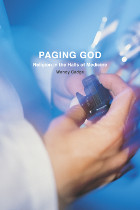 Paging God: Religion in the Halls of Medicine
Wendy Cadge
University of Chicago Press, 2012 While the modern science of medicine often seems nothing short of miraculous, religion still plays an important role in the past and present of many hospitals. When three-quarters of Americans believe that God can cure people who have been given little or no chance of survival by their doctors, how do today’s technologically sophisticated health care organizations address spirituality and faith? Through a combination of interviews with nurses, doctors, and chaplains across the United States and close observation of their daily routines, Wendy Cadge takes readers inside major academic medical institutions to explore how today’s doctors and hospitals address prayer and other forms of religion and spirituality. From chapels to intensive care units to the morgue, hospital caregivers speak directly in these pages about how religion is part of their daily work in visible and invisible ways. In Paging God: Religion in the Halls of Medicine, Cadge shifts attention away from the ongoing controversy about whether faith and spirituality should play a role in health care and back to the many ways that these powerful forces already function in healthcare today.
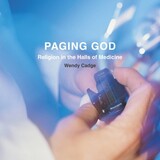 Paging God: Religion in the Halls of Medicine
Wendy Cadge
University of Chicago Press, 2012 This is an auto-narrated audiobook edition of this book.
While the modern science of medicine often seems nothing short of miraculous, religion still plays an important role in the past and present of many hospitals. When three-quarters of Americans believe that God can cure people who have been given little or no chance of survival by their doctors, how do today’s technologically sophisticated health care organizations address spirituality and faith?
Through a combination of interviews with nurses, doctors, and chaplains across the United States and close observation of their daily routines, Wendy Cadge takes readers inside major academic medical institutions to explore how today’s doctors and hospitals address prayer and other forms of religion and spirituality. From chapels to intensive care units to the morgue, hospital caregivers speak directly in these pages about how religion is part of their daily work in visible and invisible ways. In Paging God: Religion in the Halls of Medicine, Cadge shifts attention away from the ongoing controversy about whether faith and spirituality should play a role in health care and back to the many ways that these powerful forces already function in healthcare today.
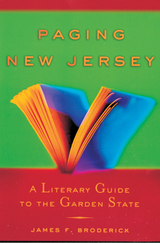 Paging New Jersey: A Literary Guide to the Garden State
Broderick, James F
Rutgers University Press, 2003 For 300 years, New Jersey writers, books, and historical events have helped shape the cultural landscape of the nation, and yet the state is rarely credited for its numerous contributions to American letters and folklore. Paging New Jersey is just the book for those interested in uncovering a treasure trove of information about the Garden State’s key role in the creation of U.S. literary and popular culture. New Jersey writers from Stephen Crane to Toni Morrison are included as well as longtime Camden resident Walt Whitman and Newark native Philip Roth.
James F. Broderick’s unique look at the state’s literary and cultural history answers intriguing Jersey-related questions such as: how author Peter Benchley got the idea for Jaws; where Aaron Burr shot Alexander Hamilton; why the Hindenberg exploded over Lakehurst in 1937; and where to find help in locating Captain Kidd’s buried treasure along the Jersey Shore. Most people know that television’s fictional Tony Soprano lives in New Jersey, but what about the state’s other mobsters— The real “goombahs?” Who are they and what have these particular Jersey devils written?
Full of commentary, biographical information, and history—along with suggested reading lists— Paging New Jersey is a crash course in Jerseyana. For those who live in the state, expatriots, and yes, even those who think all New Jersey has to offer is the Turnpike, Broderick’s engaging yet learned book provides an entertaining look at the Garden State’s rich cultural heritage.
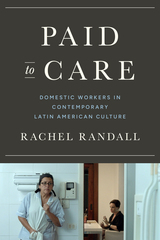 Paid to Care: Domestic Workers in Contemporary Latin American Culture
Rachel Randall
University of Texas Press, 2023 An insight into the struggles of paid domestic workers in Latin America through an exploration of films, texts, and digital media produced since the 1980s in collaboration with them or inspired by their experiences. Paid domestic work in Latin America is often undervalued, underpaid, and underregulated. Exploring a wave of Latin American cultural texts since the 1980s that draw on the personal experiences of paid domestic work or intimate ties to domestic employees, Paid to Care offers insights into the struggles domestic workers face through an analysis of literary testimonials, documentary and fiction films, and works of digital media. From domestic workers’ experiences of unionization in the 1980s to calls for their rights to be respected today, the cultural texts analyzed in Paid to Care provide additional insight into public debates about paid domestic work. Rachel Randall examines work made in Brazil, Argentina, Chile, Mexico, Peru, and Uruguay. The most recent of these texts respond to the Covid-19 pandemic, which put many domestic workers’ health and livelihoods at risk. Engaging with the legal histories of domestic work in multiple distinct national contexts, Randall demonstrates how the legacy of colonialism and slavery shapes the profession even today. Focusing on personal or coproduced cultural representations of domestic workers, Paid to Care explores complex ethical issues relating to consent, mediation, and appropriation.
Paid to Party: Working Time and Emotion in Direct Home Sales
Mullaney, Jamie L
Rutgers University Press, 2012 On any given night in living rooms across America, women gather for a fun girls’ night out to eat, drink, and purchase the latest products—from Amway to Mary Kay cosmetics. Beneath the party atmosphere lies a billion-dollar industry, Direct Home Sales (DHS), which is currently changing how women navigate work and family. Drawing from numerous interviews with consultants and observations at company-sponsored events, Paid to Party takes a closer look at how DHS promises to change the way we think and feel about the struggles of balancing work and family. Offering a new approach to a flexible work model, DHS companies tell women they can, in fact, have it all and not feel guilty. In DHS, work time is not measured by the hands of the clock, but by the emotional fulfillment and fun it brings.
 Paideia and Cult: Christian Initiation in Theodore of Mopsuestia
Daniel L. Schwartz
Harvard University Press, 2012 Paideia and Cult explores the role of Christian education and worship in the complex process of conversion and Christianization. It analyzes the Catechetical Homilies of Theodore of Mopsuestia as a curriculum designed to train those seeking initiation into the Christian mysteries. Although Theodore gave considerable attention to teaching creedal theology, he sought to go beyond simply communicating information. His catechetical preaching set the teaching of Christian ideas within the context of religious community and ritual participation. In doing so he sought to produce a Christianized view of the world and of the convert’s place in a community of worship. Theodore’s attention to the communal, cognitive, and ritual components of initiation suggest a substantive understanding of religious conversion, yet one that avoids an overemphasis on intellectual and psychological transformation. Throughout this study catechesis emerges as invaluable for comprehending the ability of clergy to initiate new members as Christianity gained increasing prominence within the late Roman world.
 Pain and Its Transformations: The Interface of Biology and Culture
Sarah Coakley
Harvard University Press, 2008 Pain is immediate and searing but remains a deep mystery for sufferers, their physicians, and researchers. As neuroscientific research shows, even the immediate sensation of pain is shaped by psychological state and interpretation. At the same time, many individuals and cultures find meaning, particularly religious meaning, even in chronic and inexplicable pain.
This ambitious interdisciplinary book includes not only essays but also discussions among a wide range of specialists. Neuroscientists, psychiatrists, anthropologists, musicologists, and scholars of religion examine the ways that meditation, music, prayer, and ritual can mediate pain, offer a narrative that transcends the sufferer, and give public dignity to private agony. They discuss topics as disparate as the molecular basis of pain, the controversial status of gate control theory, the possible links between the relaxation response and meditative practices in Christianity and Buddhism, and the mediation of pain and intense emotion in music, dance, and ritual. The authors conclude by pondering the place of pain in understanding--or the human failure to understand--good and evil in history.
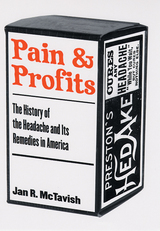 Pain and Profits: The History of the Headache and Its Remedies in America
McTavish, Jan R.
Rutgers University Press, 2004 Pain and Profits tells the story of how a common ailment—the headache—became the center of a multibillion dollar pharmaceutical industry in the United States. Despite the increasing authority of the medical profession in the twentieth century, treatment of this condition has remained largely in the hands of the public. Using the headache as a case study, and advertising as a significant source of information, Jan McTavish traces the beginnings of the modern over-the-counter industry. The American pharmaceutical industry developed from nineteenth-century suppliers of plant-derived drugs for both professional and home care. Two branches of the industry evolved over time—the ethical branch, which sold products only with prescriptions, and the nostrum branch, which was noted for its energetic marketing techniques. At the end of the century, they were joined by German companies that combined a strong commitment to science with aggressive salesmanship. Since German drugs were both highly effective in treating headaches and commonly available, sufferers wanting quick relief could easily obtain them. The result was a new kind of “legitimate” pharmaceutical industry that targeted consumers directly. Historians of medicine as well as more general readers interested in the history of the headache will enjoy this fascinating account of the creation of the modern pharmaceutical industry.
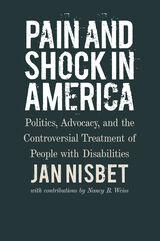 Pain and Shock in America: Politics, Advocacy, and the Controversial Treatment of People with Disabilities
Jan Nisbet
Brandeis University Press, 2021 The first book to be written on the Judge Rotenberg Center and their use of painful interventions to control the behavior of children and adults with disabilities.
For more than forty years, professionals in the field of disability studies have engaged in debates over the use of aversive interventions (such as electric shock) like the ones used at the Judge Rotenberg Center. Advocates and lawyers have filed complaints and lawsuits to both use them and ban them, scientists have written hundreds of articles for and against them, and people with disabilities have lost their lives and, some would say, lived their lives because of them. There are families who believe deeply in the need to use aversives to control their children’s behavior. There are others who believe the techniques used are torture. All of these families have children who have been excluded from numerous educational and treatment programs because of their behaviors. For most of the families, placement at the Judge Rotenberg Center is the last resort.
This book is a historical case study of the Judge Rotenberg Center, named after the judge who ruled in favor of keeping its doors open to use aversive interventions. It chronicles and analyzes the events and people involved for over forty years that contributed to the inability of the state of Massachusetts to stop the use of electric shock, and other severe forms of punishment on children and adults with disabilities. It is a long story, sad and tragic, complex, filled with intrigue and questions about society and its ability to protect and support its most vulnerable citizens.
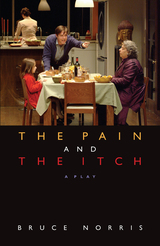 The Pain and the Itch: A Play
Bruce Norris
Northwestern University Press, 2008 In this brief but staggering two-act, playwright Norris demonstrates his skill at drawing out the dark truth that lurks beneath the surface of the “perfect” family. His crackling satire takes dead aim at the self-satisfied, left-leaning American upper-middle class and its many self-delusions. On a winter afternoon, Kelly and Clay—an attractive, prosperous, seemingly happy couple with a four-year-old daughter and a newborn baby—must explain to a visitor the events of the previous Thanksgiving, on which, so it seems, someone or something had been gnawing at the avocados on their kitchen table. In the course of this holiday gathering—attended by Clay’s mother, a well-meaning but clueless first-grade teacher who spouts pointless liberal bromides; his brother, a plastic surgeon with a nihilistic streak and a taste for martinis; and his brother's girlfriend, a sexy Balkan immigrant with a love for all things American (racism included)—the recent past is unearthed along with revelations of failed marriages, fraternal hatred, infidelity and venereal disease, in the form of their daughter’s nasty genital infection. And it’s a comedy. As the story is gradually unfolded to their visitor, a Muslim cab driver, his relationship to the events becomes increasingly clear, as does the emptiness of the family’s supposed benevolence and sensitivity. With its crashing emotion and cutting humor, this vicious dissection of the comfortable progressive life lays bare the lies that people use to feel righteous even as they veer off a genuinely ethical path.
Pain, Death, and the Law
Austin Sarat, Editor
University of Michigan Press, 2001 This collection of essays examines the relationship between pain, death, and the law and addresses the question of how the law constructs pain and death as jurisprudential facts. The empirical focus of these essays enables the reader to delve into both the history and the theoretical complexities of the pain-death-law relationship. The combination of the theoretical and the empirical broadens the contribution this volume will undoubtedly make to debates in which the right to live or die is the core issue at hand.
This volume will be an important read for policy makers and legal practitioners and a valuable text for courses in law, the social sciences, and the humanities.
Austin Sarat is William Nelson Cromwell Professor of Jurisprudence and Political Science, Amherst College.
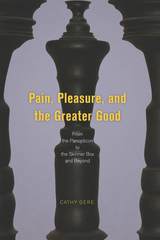 Pain, Pleasure, and the Greater Good: From the Panopticon to the Skinner Box and Beyond
Cathy Gere
University of Chicago Press, 2017 How should we weigh the costs and benefits of scientific research on humans? Is it right that a small group of people should suffer in order that a larger number can live better, healthier lives? Or is an individual truly sovereign, unable to be plotted as part of such a calculation?
These are questions that have bedeviled scientists, doctors, and ethicists for decades, and in Pain, Pleasure, and the Greater Good, Cathy Gere presents the gripping story of how we have addressed them over time. Today, we are horrified at the idea that a medical experiment could be performed on someone without consent. But, as Gere shows, that represents a relatively recent shift: for more than two centuries, from the birth of utilitarianism in the eighteenth century, the doctrine of the greater good held sway. If a researcher believed his work would benefit humanity, then inflicting pain, or even death, on unwitting or captive subjects was considered ethically acceptable. It was only in the wake of World War II, and the revelations of Nazi medical atrocities, that public and medical opinion began to change, culminating in the National Research Act of 1974, which mandated informed consent. Showing that utilitarianism is based in the idea that humans are motivated only by pain and pleasure, Gere cautions that that greater good thinking is on the upswing again today and that the lesson of history is in imminent danger of being lost.
Rooted in the experiences of real people, and with major consequences for how we think about ourselves and our rights, Pain, Pleasure, and the Greater Good is a dazzling, ambitious history.
Paint
Grace Tiffany
Arizona Center for Medieval and Renaissance Studies, 2013
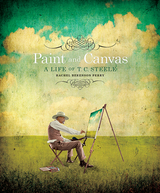 Paint and Canvas: A Life of T. C. Steele
Rachel Berenson Perry
Indiana Historical Society Press, 2011 At the age of fourteen, a young man in Waveland, Indiana, had taken over the family farm after the death of his father. Now responsible for taking care of his widowed mother and supporting his four brothers, he took up the reins on the plow to begin preparing the field for planting. Family legend has it that the young farmer, Theodore Clement Steele, tied “colored ribbons to the handles of the plow so that he could watch the ribbons in the wind and the effect that they had on the [surrounding] colors.” Recognizing Steele’s passion for art, his mother supported his choice to make his living as an artist. T. C. Steele, the eighth volume in the Indiana Historical Society Press’s youth biography series, traces the path of Steele’s career as an artist from his early studies in Germany to his determination to paint what he knew best, the Indiana landscape. Steele, along with fellow artists William Forsyth, Otto Stark, Richard Gruelle, and J. Ottis Adams, became a member of the renowned Hoosier Group and became a leader in the development of Midwestern art.
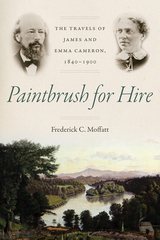 Paintbrush for Hire: The Travels of James and Emma Cameron, 1840–1900
Frederick C. Moffatt
University of Tennessee Press, 2018 “I was pulled into the story and read every word.” –Randolph Delehanty, author of Art in the American South: Works from the Odgen Collection
Throughout the nineteenth-century, itinerant painters traveled the length and breadth of Europe and American in search of patronage. In the company of the his crupulous wife, Emma S. Cameron (1825–1907), the Scots-born James Cameron (1816–1882) sought to fulfill his ambitious dream of becoming an artist.
Working primarily as a landscapist and portraitist—he was also an inventor, a missionary, an ordained minister, a land agent, farmer, clothing merchant, and Sunday school teacher—Cameron produced a small collection of paintings during the ten-year period the couple resided in East Tennessee and the American South. Driven by the wife’s lively journals, correspondence, and Civil War diary, Moffatt’s narrative details the couple’s marriage, their extended honeymoon in revolutionary Italy and, following a brief excursion in the Adirondacks, their subsequent residencies in Knoxville, Chattanooga, Memphis, Nashville, Augusta, central Mississippi, and New Orleans, between 1856 and 1868. While in Chattanooga, they settled near Col. James A. Whiteside’s fashionable summer resort, Lookout Mountain Hotel, where James reigned as resident artist and Emma, reluctantly, served as the house nurse and social entertainer. In the late 1860s they lived in Maine and, after 1874, in California, where they founded separate Presbyterian churches.
The book emphasizes Cameron’s painting career, the patrons who supported it, and discusses his best-known works, all of which are reproduced here. The study demonstrated how persisted while working under a cultural cloud that often devalued artistic achievement Emma’s journals reveal her to be a perceptive observer of Protestant middle class “life-on-the-run” and yields insight into historic events in the making, including the Italian Risorgimento, the American Civil War, and the settlement of America’s Western frontier. Moffatt’s detailed joint biography provides a valuable contribution to women’s studies, art history, nineteenth-century frontier expansionism, and social history.
Frederick C. Moffatt is emeritus professor of art history at the School of Art, University of Tennessee, Knoxville. He is the author of Arthur Wesley Dow, 1857–1922; Errant Bronzes: George Grey Barnard’s Statue of Abraham Lincoln; and The Life, Art, and Times of Joseph Delaney, 1904–1991.
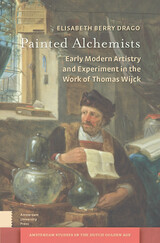 Painted Alchemists: Early Modern Artistry and Experiment in the Work of Thomas Wijck
Elisabeth Berry Drago
Amsterdam University Press, 2019 Thomas Wijck’s painted alchemical laboratories were celebrated in his day as "artful" and "ingenious." They fell into obscurity along with their subject, as alchemy came to be viewed as an occult art or a fool’s errand. But these unusual pictures challenge our understanding of early modern alchemy-and of the deeper relationship between chemical workshops and the artists who represented them. The work of artists, like the work of alchemists, contained intellectual-creative and manual-material aspects. Both alchemists and artists claimed a special status owing to their creative powers. Wijck’s formation of an artistic and professional identity around alchemical themes reveals his desire to explore this curious territory, and ultimately to demonstrate art’s superior claims to knowledge and mastery over nature. This book explores one artist’s transformation of alchemy and its materials into a reputation for virtuosity-and what his work can teach us about the experimental early modern world.
Painted Architecture and Polychrome Monumental Sculpture in Mesoamerica
Elizabeth Hill Boone
Harvard University Press, 1985 Painted Architecture and Polychrome Monumental Sculpture in Mesoamerica investigates the use and importance of color over a broad geographic and temporal range in Mesoamerica. Areas of focus include the Maya approach to painted architecture and sculpture, the situation in Oaxaca from the Preclasssic to the Conquest, and the use of color in Postclassic Central Mexico. By turning attention toward polychromic diversity in architecture and sculpture, the essays in this volume open unto a broader understanding of Mesoamerican art and art history, one that expands beyond monochromatic interpretations in the visual arts.
Painted Architecture and Polychrome Monumental Sculpture in Mesoamerica
Elizabeth Hill Boone
Harvard University Press Painted Architecture and Polychrome Monumental Sculpture in Mesoamerica investigates the use and importance of color over a broad geographic and temporal range in Mesoamerica. Areas of focus include the Maya approach to painted architecture and sculpture, the situation in Oaxaca from the Preclasssic to the Conquest, and the use of color in Postclassic Central Mexico. By turning attention toward polychromic diversity in architecture and sculpture, the essays in this volume open unto a broader understanding of Mesoamerican art and art history, one that expands beyond monochromatic interpretations in the visual arts.
The Painted Bunting's Last Molt: Poems
Virgil Suarez
University of Pittsburgh Press, 2020 The Painted Bunting’s Last Molt explores fatherhood, parenting, and separation anxiety; and the ways in which time and memory are both a prison and a giver of joy. Fifteen years in the making, Virgil Suárez’s new collection uses his mother’s return to Cuba after 50 years of exile as a catalyst to muse on familial relationships, death, and the passing of time.
Moon Decima
If it were the Eucharist, it’d be hard to swallow,
this moon of lost impressions, a boy in deep water,
something tickling his skin. This memory of weight-
lessness—a kite that somehow still manages to hover
in the dog mouth blackness of sky. This is a cut out
moon of lost children, or is it a savior’s moon?
This boy will float on home, or be swallowed
by the water. Above the pines and mangroves,
this moon hangs unrelenting. Is it the one eye
of an indifferent God that remains open just so?
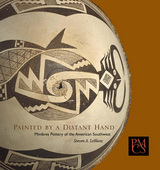 Painted by a Distant Hand: Mimbres Pottery from the American Southwest
Steven A. LeBlanc
Harvard University Press, 2005 Highlighting one of the Peabody Museum's most important archaeological expeditions—the excavation of the Swarts Ranch Ruin in southwestern New Mexico by Harriet and Burton Cosgrove in the mid-1920s—Steven LeBlanc's book features rare, never-before-published examples of Mimbres painted pottery, considered by many scholars to be the most unique of all the ancient art traditions of North America. Made between A.D. 1000 and 1150, these pottery bowls and jars depict birds, fish, insects, and mammals that the Mimbres encountered in their daily lives, portray mythical beings, and show humans participating in both ritual and everyday activities. LeBlanc traces the origins of the Mimbres people and what became of them, and he explores our present understanding of what the images mean and what scholars have learned about the Mimbres people in the 75 years since the Cosgroves' expedition.
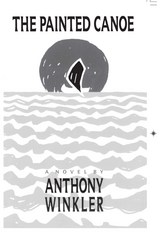 The Painted Canoe
Anthony Winkler
University of Chicago Press, 1989 "You learn dat dis world don't love negar! And negar don't make for dis world!" Zachariah's mother warned him when he was still a boy. Yet, poor and abominably ugly, the Jamaican fisherman grasps lovingly for life, though the worst forces of nature conspire against him. Washed far out to sea in the night, Zachariah is attacked by a hammerhead shark, scorched by the Caribbean sun, hurled about by the sea which both frightens and entices him, and confused by his own encroaching madness. In a rare weave of humor and sadness, Zachariah forces himself to reflect on his life and the strangeness of chance, on anything but his place as a small man in a fragile boat in the boundless sea.
Still on land are the villagers, the woman, and the sons who comprise life for Zachariah. While he struggles with the forces of nature, the natural faith of the villagers encounters the incapacity for belief of the troubled English doctor. As the superstitions and certainties of Jamaican life and the consequences of science meet, Winkler reveals a rich understanding of the precarious balance between thought and reality, between the coincidental and the miraculous.
"This is one of those rare novels that announces its presence with such modest grace that the size of its ambition and accomplishments steals gently into the consciousness."—Michael Thelwell, Washington Post Book World
"Mr. Winkler deftly unfurls his exquisitely written story, which is redolent of the colorful patois and chaotic flavor of rural Jamaican culture."—Bob Allen, Baltimore Sun
Painted Ceramics of the Western Mound at Awatovi
Watson Smith
Harvard University Press In this definitive study of the pottery recovered from the Western Mound at Awarovi in northeastern Arizona, Smith presents the results of technical analyses of ceramic pastes and textures and arranges the pottery according to taxonomic types.
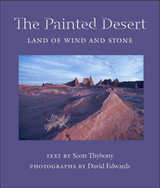 The Painted Desert: Land of Wind and Stone
Text by Scott Thybony; Photographs by David Edwards
University of Arizona Press, 2006 Most people who are familiar with the Painted Desert of northeastern Arizona know it only from having pulled off at the Petrified Forest exit on Interstate 40. If they happen to come by it at midday, as most do, they find a landscape drained of color and flattened under the direct sunlight.
But this remote pocket of the Arizona desert, sandwiched between the Little Colorado River on one side and bold escarpments on the other, is much more than most tourists ever experience. An ethereal landscape of sculpted rock, wind-fluted cliffs, and elegantly drifting sand, the Painted Desert is a rich storehouse of natural beauty, colorful history, and scientific wonders. Here the strongest winds in Arizona blow across extensive dunefields, where less than ten inches of rain falls each year and only a few desert-savvy Navajo are able to live.
Now, for the first time award-winning writer Scott Thybony and freelance photographer David Edwards offer an intimate look at a place that remains inhospitable and inaccessible to so many. They share insights about the geology, paleontology, anthropology, and human history of the region as well as personal stories that dispel the misconceptions and mysteries that surround this delicate and difficult landscape.
With fifteen stunning photographs gracing the text, this book offers a vibrant portrait of one of the Southwest’s most barren, and most colorful landscapes.
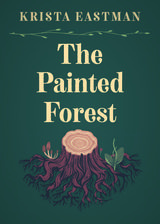 The Painted Forest
Krista Eastman
West Virginia University Press, 2019 Council for Wisconsin Writers, Norbert Blei/August Derleth Nonfiction Book Award winner
In this often-surprising book of essays, Krista Eastman explores the myths we make about who we are and where we’re from. The Painted Forest uncovers strange and little-known “home places”—not only the picturesque hills and valleys of the author’s childhood in rural Wisconsin, but also tourist towns, the “under-imagined and overly caricatured” Midwest, and a far-flung station in Antarctica where the filmmaker Werner Herzog makes an unexpected appearance. The Painted Forest upends easy narratives of place, embracing tentativeness and erasing boundaries. But it is Eastman’s willingness to play—to follow her curiosity down every odd path, to exude a skeptical wonder—that gives this book depth and distinction. An unlikely array of people, places, and texts meet for close conversation, and tension is diffused with art, imagination, and a strong sense of there being some other way forward. Eastman offers a smart and contemporary take on how we wander and how we belong.
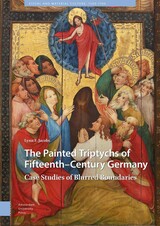 The Painted Triptychs of Fifteenth-Century Germany: Case Studies of Blurred Boundaries
Lynn F. Jacobs
Amsterdam University Press, 2022 This book presents four case studies that interrogate how German fifteenth-century painted triptychs engage with, and ultimately blur, various boundaries. Some of the boundaries are internal to the triptych format, for example, transgressed frames between narrative scenes on triptych interiors, or interconnections between imagery on triptych interiors and exteriors. Other blurred boundaries are regional ones between the Netherlands and Cologne; metaphysical ones between heaven and earth; and artistic distinctions between the media of painting and sculpture. The book’s case studies—which shed new light on Conrad von Soest, Stefan Lochner, and the Master of the St. Bartholomew Altarpiece—illuminate the importance of German fifteenth-century painting, while providing a fresh assessment of relations between German triptychs and their more famous Netherlandish counterparts. The case studies also demonstrate the value of probing Medialität, that is, the implications of format and medium for generating meaning. A coda assesses the triptych in the age of Dürer.
 Painted Words: Nahua Catholicism, Politics, and Memory in the Atzaqualco Pictorial Catechism
Elizabeth Hill Boone, Louise M. Burkhart, and David Tavárez
Harvard University Press Painted Words presents a facsimile, decipherment, and analysis of a seventeenth-century pictographic catechism from colonial Mexico, preserved as Fonds Mexicain 399 at the Bibliothèque Nationale de France. Works in this genre present the Catholic catechism in pictures that were read sign by sign as aids to memorization and oral performance. They have long been understood as a product of the experimental techniques of early evangelization, but this study shows that they are better understood as indigenous expressions of devotional knowledge.
In addition to inventive pictography to recount the catechism, this manuscript features Nahuatl texts that focus on don Pedro Moteuczoma, son of the Mexica ruler Moteuczoma the Younger, and his home, San Sebastián Atzaqualco. Other glosses identify figures drawn within the manuscript as Nahua and Spanish historical personages, as if the catechism had been repurposed as a dynastic record. The end of the document displays a series of Nahua and Spanish heraldic devices.
These combined pictorial and alphabetic expressions form a spectacular example of how colonial pictographers created innovative text genres, through which they reimagined pre-Columbian writing and early evangelization—and ultimately articulated newly emerging assertions of indigenous identity and memorialized native history.
 The Painter's Fire: A Forgotten History of the Artists Who Championed the American Revolution
Zara Anishanslin
Harvard University Press, 2025 Told through the lives of three remarkable artists devoted to the pursuit of liberty, an illuminating new history of the ideals that fired the American Revolution.
The war that we now call the American Revolution was not only fought in the colonies with muskets and bayonets. On both sides of the Atlantic, artists armed with paint, canvas, and wax played an integral role in forging revolutionary ideals. Zara Anishanslin charts the intertwined lives of three such figures who dared to defy the British monarchy: Robert Edge Pine, Prince Demah, and Patience Wright. From London to Boston, from Jamaica to Paris, from Bath to Philadelphia, these largely forgotten patriots boldly risked their reputations and their lives to declare independence.
Mostly excluded from formal political or military power, these artists and their circles fired salvos against the king on the walls of the Royal Academy as well as on the battlefields of North America. They used their talents to inspire rebellion, define American patriotism, and fashion a new political culture, often alongside more familiar revolutionary figures such as Benjamin Franklin and Phillis Wheatley. Pine, an award-winning British artist rumored to be of African descent, infused massive history paintings with politics and eventually emigrated to the young United States. Demah, the first identifiable enslaved portrait painter in America, was Pine’s pupil in London before self-emancipating and enlisting to fight for the Patriot cause. And Wright, a Long Island–born wax sculptor who became a sensation in London, loudly advocated for revolution while acting as an informal patriot spy.
Illuminating a transatlantic and cosmopolitan world of revolutionary fervor, The Painter’s Fire reveals an extraordinary cohort whose experiences testify to both the promise and the limits of liberty in the founding era.
 Painters’ Playbooks in the Art Market of Early Modern Amsterdam
Weixuan Li
Amsterdam University Press, 2025 The art market in seventeenth-century Amsterdam emerged as a competitive, multi-layered arena where artists of all kinds vied for a diverse and expanding clientele. How did this complex market function? And how did individual painters navigate this intricate system, making artistic and business decisions that fuelled the remarkable flourishing of Dutch art?
Painters’ Playbooks explores these questions through a novel socio-spatial lens. Drawing on digital methods, it reveals new patterns in artistic practice and market development in early modern Amsterdam. The book synthesises diverse historical sources to uncover artists’ collective behaviours – or ‘playbooks’ – reflected in their location choices, social networks, and domestic interiors. Moving beyond traditional economic and art-historical explanations, it shows how these playbooks shaped market structure and influenced artistic innovation in the seventeenth century.
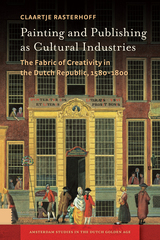 Painting and Publishing as Cultural Industries: The Fabric of Creativity in the Dutch Republic, 1580-1800
Claartje Rasterhoff
Amsterdam University Press, 2017 The Dutch Republic was a cultural powerhouse in the modern era, producing lasting masterpieces in painting and publishing, and in the process transforming those fields from modest trades to booming industries. This book asks the question of how such a small nation could become such a major player in those fields. Claartje Rasterhoff shows how industrial organisations played a role in shaping patterns of growth and innovations. As early modern Dutch cultural industries were concentrated geographically, highly networked, and institutionally embedded, they were able to reduce uncertainty in the marketplace and stimulate the commercial and creative potential of painters and publishers-though those successes eventually came up against the limits of a saturated domestic market and an aversion to risk on the part of producers that ultimately brought an end to the boom.
 Painting as a Way of Life: Philosophy and Practice in French Art, 1620–1660
Richard Neer
University of Chicago Press, 2025 Neer uncovers a key moment in the history of early modern art, when painting was understood to be a tool for self-transformation and for living a philosophical life.
In this wide-ranging study, Richard Neer shows how French painters of the seventeenth century developed radically new ways to connect art, perception, and ethics. Cutting across traditional boundaries of classicism and realism, Neer addresses four case studies: Nicolas Poussin, renowned for marrying ancient philosophy and narrative painting; Louise Moillon, who pioneered French still life in the 1630s; Georges de La Tour, a painter of intense and introspective nocturnes; and the Brothers Le Nain, specialists in genre and portraiture who inspired Courbet, Manet, and other painters of modern life. Setting these artists in dialogue with Montaigne, Descartes, Pascal, and others, ranging from the studios of Rome to the streets of Paris, this book provides fresh accounts of essential artworks—some well-known, others neglected—and new ways to approach the relation of art, theory, and daily life.
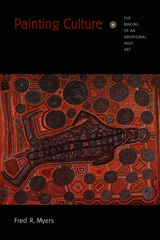 Painting Culture: The Making of an Aboriginal High Art
Fred R. Myers
Duke University Press, 2002 Painting Culture tells the complex story of how, over the past three decades, the acrylic "dot" paintings of central Australia were transformed into objects of international high art, eagerly sought by upscale galleries and collectors. Since the early 1970s, Fred R. Myers has studied—often as a participant-observer—the Pintupi, one of several Aboriginal groups who paint the famous acrylic works. Describing their paintings and the complicated cultural issues they raise, Myers looks at how the paintings represent Aboriginal people and their culture and how their heritage is translated into exchangeable values. He tracks the way these paintings become high art as they move outward from indigenous communities through and among other social institutions—the world of dealers, museums, and critics. At the same time, he shows how this change in the status of the acrylic paintings is directly related to the initiative of the painters themselves and their hopes for greater levels of recognition. Painting Culture describes in detail the actual practice of painting, insisting that such a focus is necessary to engage directly with the role of the art in the lives of contemporary Aboriginals. The book includes a unique local art history, a study of the complete corpus of two painters over a two-year period. It also explores the awkward local issues around the valuation and sale of the acrylic paintings, traces the shifting approaches of the Australian government and key organizations such as the Aboriginal Arts Board to the promotion of the work, and describes the early and subsequent phases of the works’ inclusion in major Australian and international exhibitions. Myers provides an account of some of the events related to these exhibits, most notably the Asia Society’s 1988 "Dreamings" show in New York, which was so pivotal in bringing the work to North American notice. He also traces the approaches and concerns of dealers, ranging from semi-tourist outlets in Alice Springs to more prestigious venues in Sydney and Melbourne. With its innovative approach to the transnational circulation of culture, this book will appeal to art historians, as well as those in cultural anthropology, cultural studies, museum studies, and performance studies.
Painting, History and Meaning: Sites of Time
Craig Staff
Intellect Books, 2020 This compelling new study considers contemporary painting’s relationship with time and with events, ideas, and paintings from the past. Following French philosopher Jean-François Lyotard’s determination of painting as entailing a series of temporal sites, Painting, History and Meaning examines works that tendentiously engage with aspects and events derived from the past. Craig Staff explores art that has encompassed strategies of excavation, anachronism, and memorialization, examining key works by artists including Dana Schutz, Tomma Abts, Gerhard Richter, Marlene Dumas, Johannes Phokela, and Taus Makhacheva. A scholarly examination of contemporary painting through an innovative interdisciplinary research methodology, this fascinating study illuminates the complex relationship between art and history.
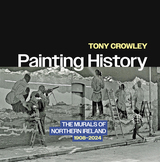 Painting History: The Murals of Northern Ireland, 1908–2024
Tony Crowley
Amherst College Press, 2025 Painting History: The Murals of Northern Ireland, 1908–2024 is the first book-length study of the oldest and most enduring tradition of political wall art. Tony Crowley shows how muralism became an important medium for the unionist and loyalist community in its political domination of public space before and after Partition. The text also demonstrates that nationalists and republicans painted few murals before the start of the 1981 Hunger Strike, during which they painted wall art across republican areas of Northern Ireland as a way of publicizing their cause. In the context of a divided society, by the mid 1980s murals had become an established genre for the expression of political demands and aspirations. In Painting History, Tony Crowley provides a detailed analysis of the complex tradition of muralism in the context of the history that produced it, with particular attention given to the cultural politics of this remarkable form. The book also raises and discusses a series of theoretical questions about murals and muralism that transcend Northern Ireland: issues of propriety and legality, form and content, authority and censorship. The work ends with a consideration of the future of the murals in a still polarized but changing region.
Painting in Excess: Kyiv's Art Revival, 1985-1993
Olena Martynyuk
Rutgers University Press, 2022 The upheavals of glasnost and perestroika followed by the collapse of the Soviet Union remarkably transformed the art scene in Kyiv, launching Ukrainian contemporary art as a global phenomenon. The previously calm waters of the culturally provincial capital of the Ukrainian Soviet Republic became radically stirred with new and daring art made publicly visible for the first time since the avant-garde period of the early twentieth century. As artists were freed from the dictates of the fading Communist ideology and the constraints of late socialist realism, an explosion of styles emerged, creating an effect of baroque excess. This exhibition catalogue traces and documents the diverse artistic manifestations of these transitional and exhilarating years in Kyiv while providing some historical artworks for context. Published in partnership with the Zimmerli Museum.
 Painting into Being: Underground Art during China’s Cultural Revolution
Aihe Wang
Harvard University Press Amid the political turmoil of China’s Cultural Revolution, a small group of painters in Beijing defied state control, creating art in secrecy that challenged the ideological constraints of their time. Painting into Being is the first in-depth study of underground art during this period, focusing on the Wuming (No Name) Painting Group, active from 1972 to 1981, in conjunction with other clandestine cultural movements.
Aihe Wang brings a singular perspective to this history as both a former Wuming artist and a Harvard-trained historian and anthropologist. Analyzing nearly one hundred oil paintings against sophisticated theoretical frameworks and intricate historical narratives, she examines how underground artists cultivated individual agency, forged collective solidarity, and subtly resisted authoritarianism. This book also illustrates how Wuming aesthetically engaged with both modern Western art and traditional Chinese art in creating a distinct form of Chinese modernism.
Interweaving history, theory, and lived experience, Painting into Being expands our understanding of modern Chinese history, global modernism, and the power of creative expression within repressive regimes.
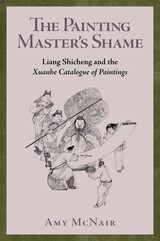 The Painting Master’s Shame: Liang Shicheng and the Xuanhe Catalogue of Paintings
Amy McNair
Harvard University Press, 2023 Overturning the long-held assumption that the Xuanhe Catalogue of Paintings was the work of the Northern Song emperor Huizong (r. 1100–1126), Amy McNair argues that it was compiled instead under the direction of Liang Shicheng. Liang, a high-ranking eunuch official who sought to raise his social status from that of despised menial to educated elite, had privileged access to the emperor and palace. McNair’s study, based on her translation and extensive analysis of the text of the Xuanhe Catalogue of Paintings, offers a definitive argument for the authorship of this major landmark in Chinese painting criticism and clarifies why and how it was compiled.
The Painting Master’s Shame describes the remarkable circumstances of the period around 1120, when the catalogue was written. The political struggles over the New Policies, the promotion of the “scholar amateur” ideal in painting criticism and practice, and the rise of eunuch court officials as a powerful class converged to allow those officials the unprecedented opportunity to enhance their prestige through scholarly activities and politics. McNair analyzes the catalogue’s central polemical narrative—the humiliation of the high-ranking minister mistakenly called by the lowly title “Painting Master”—as the key to understanding Liang Shicheng’s methods and motives.
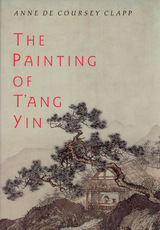 The Painting of T'ang Yin
Anne De Coursey Clapp
University of Chicago Press, 1991 +This richly illustrated volume documents the art and fully examines the career of the sixteenth-century Chinese master T'ang Yin. One of the four great painters of the middle Ming period, the ambitious T'ang Yin rose above the merchant class into which he was born to become a member of the elite scholarly circle in the city of Suchou. Deprived by accident of his academic degrees and so forced to paint for a living, T'ang Yin became a social anomaly whose style of life cut across the conventions of his time. His experiences throw into sharp relief the realities faced by a Chinese painter who was both elite Confucian scholar and professional painter.
Anne De Coursey Clapp's work also explores larger issues of Ming painting raised by the artist's turbulent career. She describes the social and intellectual values exalted in Ming Suchou, its system of patronage, the contrast between the professional and amateur artist, and the formative influence of twelfth-century Sung dynasty styles on Suchou painters. Clapp shows how T'ang Yin's artistic inventions were made in the course of leading the revival of Sung dynasty styles in Suchou: tracing T'ang Yin's early studies of ancient and contemporary masters, she describes how he reworked an antique style, converting it into a vehicle of expression that reached fruition in a long series of fresh and powerful paintings of landscapes and birds-and-flowers. In the process, she revises the distorted version of middle Ming painting written by later Chinese art theorists to justify their own social and artistic values, noting especially the role of art patrons and their effect on artistic production.
Clapp analyzes the increasing currency of painting as a means of social exchange in ancient China. In particular, she identifies commemorative painting as a major genre of the later dynasties and explores the role it played in the oeuvres of professional masters with its humanistic implications for the Chinese view of the ideal scholarly man. Her broad view of T'ang Yin's career shows him divided between the professional and amateur camps of his time: in landscape and figural subjects he was aligned with the professionals; in flower subjects with the amateurs. Clap argues that the uneven distribution of styles and genres between this master who was subject to the market, and those who were independent of it, suggests that T'ang deliberately tried to expand the range of his paintings in order to appeal to buyers in the lower educational and social strata. Illustrated by some of T'ang Yin's most celebrated paintings and by some which are published for the first time, her work is of tremendous importance to art, literary, and cultural historians of Ming China.
"In this important work, Anne de Coursey Clapp has drawn a clear picture of T'ang Yin's life, patronage relationships, and contribution to the history of Chinese painting. In the person of T'ang Yin, she has chosen an ideal focus around which to examine some of the misleading stereotypes
which have distorted our understanding of Chinese painting since the seventeenth century. Marked by analytical clarity and scrupulous scholarship, her work is a welcome addition to the few works in English on individual Chinese artists."—Louise Yuhas, Occidental College
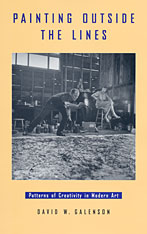 Painting outside the Lines: Patterns of Creativity in Modern Art
David W. Galenson
Harvard University Press, 2002 Why have some great modern artists—including Picasso—produced their most important work early in their careers while others—like Cézanne—have done theirs late in life? In a work that brings new insights, and new dimensions, to the history of modern art, David Galenson examines the careers of more than 100 modern painters to disclose a fascinating relationship between age and artistic creativity.
Galenson’s analysis of the careers of figures such as Monet, Seurat, Matisse, Pollock, and Jasper Johns reveals two very different methods by which artists have made innovations, each associated with a very different pattern of discovery over the life cycle. Experimental innovators, like Cézanne, work by trial and error, and arrive at their most important contributions gradually. In contrast, Picasso and other conceptual innovators make sudden breakthroughs by formulating new ideas. Consequently, experimental innovators usually make their discoveries late in their lives, whereas conceptual innovators typically peak at an early age.
A novel contribution to the history of modern art, both in method and in substance, Painting outside the Lines offers an enlightening glimpse into the relationship between the working methods and the life cycles of modern artists. The book’s explicit use of simple but powerful quantitative techniques allows for systematic generalization about large numbers of artists—and illuminates significant but little understood features of the history of modern art. Pointing to a new and richer understanding of that history, from Impressionism to Abstract Expressionism and beyond, Galenson’s work also has broad implications for future attempts to understand the nature of human creativity in general.
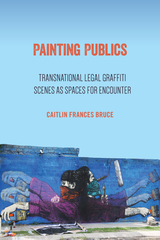 Painting Publics: Transnational Legal Graffiti Scenes as Spaces for Encounter
Caitlin Frances Bruce
Temple University Press, 2019 Public art is a form of communication that enables spaces for encounters across difference. These encounters may be routine, repeated, or rare, but all take place in urban spaces infused with emotion, creativity, and experimentation. In Painting Publics, Caitlin Bruce explores how various legal graffiti scenes across the United States, Mexico, and Europe provide diverse ways for artists to navigate their changing relationships with publics, institutions, and commercial entities. Painting Publics draws on a combination of interviews with more than 100 graffiti writers as well as participant observation, and uses critical and rhetorical theory to argue that graffiti should be seen as more than counter-cultural resistance. Bruce claims it offers resources for imagining a more democratic city, one that builds and grows from personal relations, abandoned or under-used spaces, commercial sponsorship, and tacit community resources. In the case of Mexico, Germany, and France, there is even some state support for the production and maintenance of civic education through visual culture. In her examination of graffiti culture and its spaces of inscription, Bruce allows us to see moments where practitioners actively reckon with possibility.
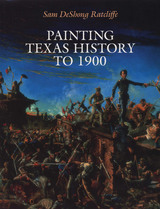 Painting Texas History to 1900
By Sam D. Ratcliffe
University of Texas Press, 1992 Certificate of Commendation, American Association for State and Local History, 1994
T. R. Fehrenbach Book Award, Texas Historical Commission, 1992
San Antonio Conservation Society Citation, 1993 Dramatic historical events have frequently provided subject matter for artists, particularly in pre-twentieth-century Texas, where works portraying historical, often legendary, events and individuals predominated. Until now, however, these paintings of Texas history have never received the kind of study given to historical, fictional, and film versions of the same events. Painting Texas History to 1900 fills this gap with an interdisciplinary approach that explores these paintings both as works of art and as historical documents. The author examines the works of more than forty artists, including Henry McArdle, Theodore Gentilz, Robert Onderdonk, William Huddle, Frederic Remington, Friedrich Richard Petri, Arthur T. Lee, Seth Eastman, Sarah Hardinge, Frank Reaugh, W. G. M. Samuel, Carl G. von Iwonski, and Julius Stockfleth. He places each work within its historical and cultural context to show why such subject matter was chosen, why it was depicted in a particular way, and why such a depiction gained popular acceptance. For example, paintings of heroic events of the Texas Revolution were especially popular in the years following the Civil War, when, in Ratcliffe's view, Texans needed such images to assuage the loss of the war and the humiliation of Reconstruction. Though the paintings cut across traditional art history categories—from the pictographs of early historic Indians to European-inspired oil paintings—they are bound together by their artists' intent for them to function as historically evocative documents. With their visual narratives of events that characterized all of America's westward expansion—Indian encounters, military battles, farming, ranching, surveying, and the closing of the frontier—these works add an important chapter to the story of the American West.
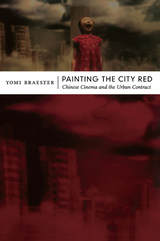 Painting the City Red: Chinese Cinema and the Urban Contract
Yomi Braester
Duke University Press, 2010 Painting the City Red illuminates the dynamic relationship between the visual media, particularly film and theater, and the planning and development of cities in China and Taiwan, from the emergence of the People’s Republic in 1949 to the staging of the Beijing Olympics in 2008. Yomi Braester argues that the transformation of Chinese cities in recent decades is a result not only of China’s abandonment of Maoist economic planning in favor of capitalist globalization but also of a shift in visual practices. Rather than simply reflect urban culture, movies and stage dramas have facilitated the development of new perceptions of space and time, representing the future city variously as an ideal socialist city, a metropolis integrated into the global economy, and a site for preserving cultural heritage. Drawing on extensive archival research, interviews with leading filmmakers and urban planners, and close readings of scripts and images, Braester describes how films and stage plays have promoted and opposed official urban plans and policies as they have addressed issues such as demolition-and-relocation plans, the preservation of vernacular architecture, and the global real estate market. He shows how the cinematic rewriting of historical narratives has accompanied the spatial reorganization of specific urban sites, including Nanjing Road in Shanghai; veterans’ villages in Taipei; and Tiananmen Square, centuries-old courtyards, and postmodern architectural landmarks in Beijing. In Painting the City Red, Braester reveals the role that film and theater have played in mediating state power, cultural norms, and the struggle for civil society in Chinese cities.
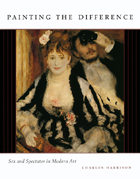 Painting the Difference: Sex and Spectator in Modern Art
Charles Harrison
University of Chicago Press, 2005 The picture plane of a painting creates boundaries and perspectives. It governs the relationship of daubs of pigment on a canvas to reality, allowing the viewer to connect with the imagined world of a work of art. Charles Harrison's latest endeavor, Painting the Difference, explores the role of the picture plane in modern painting and the relationships it creates among the artist, the subject, and the spectator. One of the most respected teachers and theorists of modern art, Harrison here offers a bold interpretation of the Modernist canon that uncovers the significance of gender to the functioning of the picture plane.
Arguing that the representation of women in art was crucial to the character of modernity, Harrison traces the history of female subjects as they began to gaze out of the picture to confront and engage their viewers. Combining sweeping conceptual history with telling investigations into the details of particular paintings, Painting the Difference deciphers the implications of sexual difference for the development of nineteenth- and twentieth-century art. Harrison shows how artists, reflecting the underlying anxieties of the time about gender, used female subjects' gazes both to create a sexualized relationship between these subjects and their viewers, and to simultaneously question that relationship. In considering works by artists such as Renoir, Manet, Degas, Cézanne, Picasso, and Matisse, as well as Rothko, Warhol, Cindy Sherman, and many more, Harrison incorporates elements of cultural criticism and social history into his arguments, and generous color illustrations permit the reader to test Harrison's claims against the works on which they are based. Rich with detail and compelling analysis, Painting the Difference offers cutting-edge interpretation grounded in the reality of magnificent works of art.
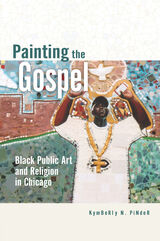 Painting the Gospel: Black Public Art and Religion in Chicago
Kymberly Pinder
University of Illinois Press, 2016 Innovative and lavishly illustrated, Painting the Gospel offers an indispensable contribution to conversations about African American art, theology, politics, and identity in Chicago. Kymberly N. Pinder escorts readers on an eye-opening odyssey to the murals, stained glass, and sculptures dotting the city's African American churches and neighborhoods. Moving from Chicago's oldest black Christ figure to contemporary religious street art, Pinder explores ideas like blackness in public, art for black communities, and the relationship of Afrocentric art to Black Liberation Theology. She also focuses attention on art excluded from scholarship due to racial or religious particularity. Throughout, she reflects on the myriad ways private black identities assert public and political goals through imagery.
Painting the Gospel includes maps and tour itineraries that allow readers to make conceptual, historical, and geographical connections among the works.
 Painting the Maya Universe: Royal Ceramics of the Classic Period
Dorie Reents-Budet
Duke University Press, 1994 Lavishly illustrated with nearly 400 color images, Painting the Maya Universe is the most thorough study and brilliant display of Classic Maya ceramic painting yet published. Building on twenty years of research and debate, Dorie Reents-Budet and her collaborators Joseph W. Ball, Ronald L. Bishop, Virginia M. Fields, and Barbara MacLeod bring together many perspectives, including the art historical, archaeological, epigraphical, and ethnohistorical, to examine one of the world’s great but overlooked painting traditions. With an emphasis on sixth- to eighth-century pottery featuring both pictorial and hieroglyphic imagery, Painting the Maya Universe presents an extraordinary exploration of the cultural roles and meanings of these Guatemalan, Belizean, and Mexican elite painted ceramics. Maya pottery is discussed both in aesthetic terms and for the important information it reveals about Maya society, artistry, politics, history, religion, and ritual. The range of ceramic painting styles developed during this period is also presented and defined in detail.
Painting the Maya Universe is the first publication to present a definitive translation of the hieroglyphic texts painted on these objects. With many glyphs deciphered here for the first time, this analysis reveals much about how these vessels were perceived and used by the Maya, their owners’ names, and, in several cases, the names of the artists who created them. This information is combined with archaeological and other data, including nuclear chemical analyses, to correlate painting styles with specific Maya sites.
Published in conjunction with Duke University Museum of Art and an exhibition touring the United States, Painting the Maya Universe presents an astonishing visual record as well as a monumental scholarly achievement. With photographs by Justin Kerr, the foremost photographer of pre-Columbian art, it includes over 90 unique full-color rollout photographs, each showing the entire surface of an object in a single frame. The book also addresses the questions and controversy regarding the loss of information that occurs when objects are removed from their archaeological context to become part of public and private collections.
Painting the Maya Universe will energize discussion of Maya pottery, hieroglyphic texts, and iconography. Its photographs, a lasting resource on this great painting tradition, will stimulate and delight the eye. It is a breakthrough in art history and Latin American scholarship that will enrich general readers and scholars alike.
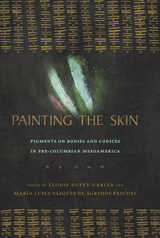 Painting the Skin: Pigments on Bodies and Codices in Pre-Columbian Mesoamerica
Edited by Élodie Dupey García and María Luisa Vázquez de Ágredos Pascual
University of Arizona Press, 2018 Mesoamerican communities past and present are characterized by their strong inclination toward color and their expert use of the natural environment to create dyes and paints. In pre-Hispanic times, skin was among the preferred surfaces on which to apply coloring materials. Archaeological research and historical and iconographic evidence show that, in Mesoamerica, the human body—alive or dead—received various treatments and procedures for coloring it.
Painting the Skin brings together exciting research on painted skins in Mesoamerica. Chapters explore the materiality, uses, and cultural meanings of the colors applied to a multitude of skins, including bodies, codices made of hide and vegetal paper, and even building “skins.” Contributors offer physicochemical analysis and compare compositions, manufactures, and attached meanings of pigments and colorants across various social and symbolic contexts and registers. They also compare these Mesoamerican colors with those used in other ancient cultures from both the Old and New Worlds. This cross-cultural perspective reveals crucial similarities and differences in the way cultures have painted on skins of all types.
Examining color in Mesoamerica broadens understandings of Native religious systems and world views. Tracing the path of color use and meaning from pre-Columbian times to the present allows for the study of the preparation, meanings, social uses, and thousand-year origins of the coloring materials used by today’s Indigenous peoples.
Contributors:
María Isabel Álvarez Icaza Longoria
Christine Andraud
Bruno Giovanni Brunetti
David Buti
Davide Domenici
Élodie Dupey García
Tatiana Falcón Álvarez
Anne Genachte-Le Bail
Fabrice Goubard
Aymeric Histace
Patricia Horcajada Campos
Stephen Houston
Olivia Kindl
Bertrand Lavédrine
Linda R. Manzanilla Naim
Anne Michelin
Costanza Miliani
Virgina E. Miller
Sélim Natahi
Fabien Pottier
Patricia Quintana Owen
Franco D. Rossi
Antonio Sgamellotti
Vera Tiesler
Aurélie Tournié
María Luisa Vázquez de Ágredos Pascual
Cristina Vidal Lorenzo
Painting the Town Red: Politics and the Arts During the 1919 Hungarian Soviet Republic
Bob Dent
Pluto Press, 2018 In 1919, in the wake of World War I, for a brief period Hungary was a Soviet Republic. The republic didn’t last, but the incredible effusion of art, music, film, theater, and literature that it generated did. Painting the Town Red offers an in-depth exploration of the incredible artistic flourishing brought about by the 1919 republic, showing how art and politics were intertwined—and how, for a brief time, artists saw themselves as playing a crucial part in the establishment of a new way of living and governing. Through close analyses of the works of a number of creators and a careful recounting of the history and politics of the 1919 republic, Bob Dent brings a largely forgotten moment back to life, with all its glory and, ultimately, disillusion.
 Painting US Empire: Nineteenth-Century Art and Its Legacies
Maggie M. Cao
University of Chicago Press, 2024 A fresh look at the global dimensions of US painting from the 1850s to 1898.
Painting US Empire is the first book to offer a synthetic account of art and US imperialism around the globe in the nineteenth century. In this work, art historian Maggie M. Cao crafts a nuanced portrait of nineteenth-century US painters’ complicity with and resistance to ascendant US imperialism, offering eye-opening readings of canonical works, landscapes of polar expeditions and tropical tourism, still lifes of imported goods, genre paintings, and ethnographic portraiture. Revealing how the US empire was “hidden in plain sight” in the art of this period, Cao examines artists including Frederic Edwin Church and Winslow Homer who championed and expressed ambivalence toward the colonial project. She also tackles the legacy of US imperialism, examining Euro-American painters of the past alongside global artists of the present. Pairing each chapter with reflections on works by contemporary anticolonial artists including Tavares Strachan, Nicholas Galanin, and Yuki Kihara, Cao addresses important contemporary questions around representation, colonialism, and indigeneity. This book foregrounds an underacknowledged topic in the study of nineteenth-century US art and illuminates the ongoing ecological and economic effects of the US empire.
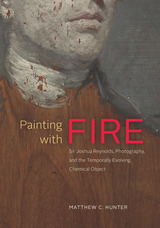 Painting with Fire: Sir Joshua Reynolds, Photography, and the Temporally Evolving Chemical Object
Matthew C. Hunter
University of Chicago Press, 2019 Painting with Fire shows how experiments with chemicals known to change visibly over the course of time transformed British pictorial arts of the long eighteenth century—and how they can alter our conceptions of photography today. As early as the 1670s, experimental philosophers at the Royal Society of London had studied the visual effects of dynamic combustibles. By the 1770s, chemical volatility became central to the ambitious paintings of Sir Joshua Reynolds, premier portraitist and first president of Britain’s Royal Academy of Arts. Valued by some critics for changing in time (and thus, for prompting intellectual reflection on the nature of time), Reynolds’s unstable chemistry also prompted new techniques of chemical replication among Matthew Boulton, James Watt, and other leading industrialists. In turn, those replicas of chemically decaying academic paintings were rediscovered in the mid-nineteenth century and claimed as origin points in the history of photography.
Tracing the long arc of chemically produced and reproduced art from the 1670s through the 1860s, the book reconsiders early photography by situating it in relationship to Reynolds’s replicated paintings and the literal engines of British industry. By following the chemicals, Painting with Fire remaps familiar stories about academic painting and pictorial experiment amid the industrialization of chemical knowledge.
 Paintings from Mughal India
Andrew Topsfield
Bodleian Library Publishing, 2008
One of the great kingdoms of human history, the Mughal empire is now lost to the relentless sweep of time. But the wealth of art treasures the Mughals left behind is nonetheless a lasting testament to the sumptuousness of their culture. Among the most notable vestiges of their art are the lush miniature paintings of Mughal imperial life, and Andrew Topsfield explores a rich array of these painted works in Paintings from Mughal India.
Between the sixteenth and eighteenth centuries, the Mughal emperors presided over a flourishing cultural renaissance, and these miniature paintings vividly depict the splendor of this period. Topsfield examines the paintings’ unique blend of Indian, Islamic, and Persian styles and analyzes their varied subjects—ranging from hunting, royal banquets, and other scenes of imperial life to legendary tales, mythic deities, and battles. Among the paintings featured in the book’s vibrant reproductions are works created between the reign of Akbar and the fall of Shah Jehanan—an era considered to be the height of Mughal painting—and illustrations from the celebrated Baharistan manuscript of 1595. A fascinating and gorgeously illustrated study, Paintings from Mughal India will be an invaluable resource for all art scholars and anyone interested in the legacy of the Mughal Empire.
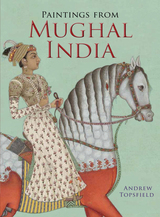 Paintings from Mughal India
Andrew Topsfield
Bodleian Library Publishing, 2008
One of the great kingdoms of human history, the Mughal Empire is now lost to the relentless sweep of time. But the wealth of treasures left behind offers a lasting testament to the sumptuousness of its culture. Among the most notable of these treasures are the lush miniature paintings showing the splendor of Mughal imperial life.
Andrew Topsfield examines these paintings that bear the influence of Indian, Islamic, and Persian styles and portray a variety of subjects, from hunting, royal banquets, and other scenes of imperial life to legends, battles, and mythic deities. Among the paintings featured in the book’s vibrant reproductions are illustrations from the celebrated Baharistan manuscript of 1595 and works created between the reign of Akbar and the fall of Shah Jahan in 1658—an era considered to be the height of Mughal art. For this new edition, Topsfield has made corrections and revisions reflecting new research.
A fascinating and gorgeously illustrated study, Paintings from Mughal India will be an invaluable resource for all art scholars and anyone interested in the legacy of the Mughal Empire.
The Paintings of Korean Shaman Gods: History, Relevance and Role as Religious Icons
Kim Tae-gon
Amsterdam University Press, 2018 This is the first monograph on the subject to be published in English. It comprises 130 full-colour plates of shaman gods. Supported by two introductory chapters ‘Reflections on Shaman God Paintings and Shamanism’ by Kim Tae-gon, and ‘The Shaman God Paintings as an Icon and Its Artistic Qualities’ by Bak Yong-suk, both distinguished authorities in the study of Korean Shamanism, The Paintings of Korean Shaman Gods offers a very accessible introduction to understanding Korean shamanism and its art. The Paintings of Korean Shaman Gods broad appeal will be welcomed by both specialists and generalists in the fields of Asian Studies, Art History and Cultural and Religious Studies.
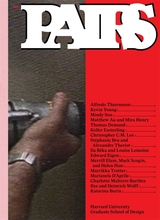 Pairs 03
Adrea Piazza
Harvard University Press Pairs is a student-led journal at the Harvard University Graduate School of Design (GSD) dedicated to conversations about design. Each annual issue is conceptualized by an editorial team that proposes guests and objects to be in dialogue with one another. Pairs is non-thematic, meant instead for provisional thoughts and ideas in progress. Each issue seeks to organize diverse threads and concerns that are perceived to be relevant to our moment. Thus, Pairs creates a space for understanding and a greater degree of exchange, both between the design disciplines and with a larger public.
Pairs 03 features conversations with Thomas Demand, Mindy Seu, Mira Henry and Matthew Au, Alfredo Thiermann, Ila Bêka and Louise Lemoine, Anne Lacaton, Edward Eigen, Katarina Burin, Marrikka Trotter, Christopher C. M. Lee, Keller Easterling, and others. Contributors include the editors and Elif Erez, Emily Hsee, Stephanie Lloyd, Andrea Sandell, Kenismael Santiago-Págan, Klelia Siska, and Julia Spackman.
Pairs 06
Amir Halabi, Harish Krishnamoorthy, Carolina Sepúlveda, Kaleb Swanson, and Tyler White
Harvard University Press Pairs is a journal of conversations edited by students at the Harvard University Graduate School of Design (GSD). Each issue pairs subjects with objects: interviewees with contents from an archive. It does not have a theme, but instead organizes a diversity of threads and concerns relevant to our moment in the design disciplines: covering architecture, landscape architecture, and urban design and planning. The conversations are in turn not comprehensive accounts but open-ended exchanges, eliciting often candid and provisional ideas in progress.
Pairs 06 features conversations with Francesca Benedetto, Sahel Al Hiyari, Agnes Denes, Mark Lee, Jimenez Lai, David Chipperfield, Sandra Barclay, Stan Allen, Ronan Bouroullec, Anne Holtrop, Dima Srouji, Tim Rohan, Joshua Bennett, and Alexandra Arenes.
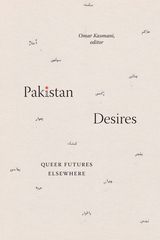 Pakistan Desires: Queer Futures Elsewhere
Omar Kasmani, editor
Duke University Press, 2023 Drawing on history, anthropology, literature, law, art, film, and performance studies, the contributors to Pakistan Desires invite reflection on what meanings adhere to queerness in Pakistan. They illustrate how amid conditions of straightness, desire can serve as a mode of queer future-making. Among other topics, the contributors analyze gender transgressive performances in Pakistani film, piety in the transgender rights movement, the use of Grindr among men, the exploration of homoerotic subject matter in contemporary Pakistani artist Anwar Saeed's work, and the story of a sixteenth-century Sufi saint who fell in love with a Brahmin boy. From Kashmir to the 1947 Partition to the resonances of South Asian gay subjectivity in the diaspora, the contributors attend to narrative and epistemological possibilities for queer lives and loves. By embracing forms of desire elsewhere, ones that cannot correlate to or often fall outside dominant Western theorizations of queerness, this volume gathers other ways of being queer in the world.
Contributors. Ahmed Afzal, Asad Alvi, Anjali Arondekar, Vanja Hamzić, Omar Kasmani, Pasha M. Khan, Gwendolyn S. Kirk, Syeda Momina Masood, Nida Mehboob, Claire Pamment, Geeta Patel, Nael Quraishi, Abdullah Qureshi, Shayan Rajani, Jeffrey A. Redding, Gayatri Reddy, Syma Tariq
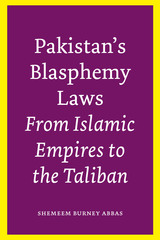 Pakistan’s Blasphemy Laws: From Islamic Empires to the Taliban
By Shemeem Burney Abbas
University of Texas Press, 2013 Under the guise of Islamic law, the prophet Muhammad’s Islam, and the Qur’an, states such as Pakistan, Afghanistan, Egypt, Saudi Arabia, and Bangladesh are using blasphemy laws to suppress freedom of speech. Yet the Prophet never tried or executed anyone for blasphemy, nor does the Qur’an authorize the practice. Asserting that blasphemy laws are neither Islamic nor Qur‘anic, Shemeem Burney Abbas traces the evolution of these laws from the Islamic empires that followed the death of the Prophet Muhammad to the present-day Taliban. Her pathfinding study on the shari’a and gender demonstrates that Pakistan’s blasphemy laws are the inventions of a military state that manipulates discourse in the name of Islam to exclude minorities, women, free thinkers, and even children from the rights of citizenship. Abbas herself was persecuted under Pakistan’s blasphemy laws, so she writes from both personal experience and years of scholarly study. Her analysis exposes the questionable motives behind Pakistan’s blasphemy laws, which were resurrected during General Zia-ul-Haq’s regime of 1977–1988—motives that encompassed gaining geopolitical control of the region, including Afghanistan, in order to weaken the Soviet Union. Abbas argues that these laws created a state-sponsored “infidel” ideology that now affects global security as militant groups such as the Taliban justify violence against all “infidels” who do not subscribe to their interpretation of Islam. She builds a strong case for the suspension of Pakistan’s blasphemy laws and for a return to the Prophet’s peaceful vision of social justice.
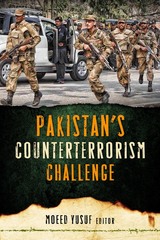 Pakistan's Counterterrorism Challenge
Moeed Yusuf, Editor
Georgetown University Press, 2014 Pakistan, which since 9/11 has come to be seen as one of the world’s most dangerous places and has been referred to as “the epicenter of international terrorism,” faces an acute counterterrorism (CT) challenge. The book focuses on violence being perpetrated against the Pakistani state by Islamist groups and how Pakistan can address these challenges, concentrating not only on military aspects but on the often-ignored political, legal, law enforcement, financial, and technological facets of the challenge. Edited by Moeed Yusuf of the US Institute of Peace, and featuring the contributions and insights of Pakistani policy practitioners and scholars as well as international specialists with deep expertise in the region, the volume explores the current debate surrounding Pakistan’s ability—and incentives—to crack down on Islamist terrorism and provides an in-depth examination of the multiple facets of this existential threat confronting the Pakistani state and people. The book pays special attention to the non-traditional functions of force that are central to Pakistan’s ability to subdue militancy but which have not received the deserved attention from the Pakistani state nor from western experts. In particular, this path-breaking volume, the first to explore these various facets holistically, focuses on the weakness of political institutions, the role of policing, criminal justice systems, choking financing for militancy, and regulating the use of media and technology by militants. Military force alone, also examined in this volume, will not solve Pakistan’s Islamist challenge. With original insights and attention to detail, the authors provide a roadmap for Western and Pakistani policymakers alike to address the weaknesses in Pakistan’s CT strategy.
Pakistan’s Development: Social Goals and Private Incentives
Gustav F. Papanek
Harvard University Press In the 1950s Pakistan was generally considered to be a country that would remain among the poorest in the world, but economic development in the decade to follow exceeded all expectations. Gustav Papanek, in the first thorough analysis of this achievement, shows how Pakistan, partly by design and partly by accident, arrived at a successful blend of private initiative and government intervention in the economy. This book, which includes the only comprehensive industrial survey of an underdeveloped country, sheds considerable light on the problems facing nations in similar circumstances.
The Palace of Bones
Allison Eir Jenks
Ohio University Press, 2002 The Palace of Bones by Allison Eir Jenks is an often stark and startling vision of the way we live, the places we inhabit, and the relics we make to comfort ourselves. Haunted by a quiet, unquenchable longing, Jenks expertly and calmly guides the reader through a vivid dreamscape in this first full-length collection of poems. The Palace of Bones was selected by final judge and Pulitzer Prize winner Carolyn Kizer. At once dark in its vision and light in its tone, this remarkable book is its author’s self-confident invitation for us to join her in a world she knows intimately and has made almost familiar if not entirely safe. The Palace of Bones is a stunning debut.
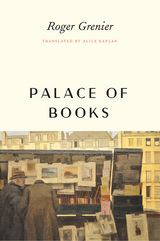 Palace of Books
Roger Grenier
University of Chicago Press, 2014 For decades, French writer, editor, and publisher Roger Grenier has been enticing readers with compact, erudite books that draw elegant connections between the art of living and the work of art. Under Grenier’s wry gaze, clichés crumble, and offbeat anecdotes build to powerful insights.
With Palace of Books, he invites us to explore the domain of literature, its sweeping vistas and hidden recesses. Engaging such fundamental questions as why people feel the need to write, or what is involved in putting one’s self on the page, or how a writer knows she’s written her last sentence, Grenier marshals apposite passages from his favorite writers: Chekhov, Baudelaire, Proust, James, Kafka, Mansfield and many others. Those writers mingle companionably with tales from Grenier’s half-century as an editor and friend to countless legendary figures, including Albert Camus, Romain Gary, Milan Kundera, and Brassai,.
Grenier offers here a series of observations and quotations that feel as spontaneous as good conversation, yet carry the lasting insights of a lifetime of reading and thinking. Palace of Books is rich with pleasures and surprises, the perfect accompaniment to old literary favorites, and the perfect introduction to new ones.
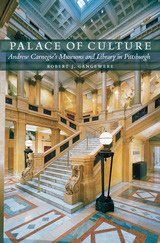 Palace of Culture: Andrew Carnegie's Museums and Library in Pittsburgh
Robert J. Gangewere
University of Pittsburgh Press, 2011
Andrew Carnegie is remembered as one of the world’s great philanthropists. As a boy, he witnessed the benevolence of a businessman who lent his personal book collection to laborer’s apprentices. That early experience inspired Carnegie to create the “Free to the People” Carnegie Library in 1895 in Pittsburgh, Pennsylvania. In 1896, he founded the Carnegie Institute, which included a music hall, art museum, and science museum. Carnegie deeply believed that education and culture could lift up the common man and should not be the sole province of the wealthy. Today, his Pittsburgh cultural institution encompasses a library, music hall, natural history museum, art museum, science center, the Andy Warhol Museum, and the Carnegie International art exhibition.
In Palace of Culture, Robert J. Gangewere presents the first history of a cultural conglomeration that has served millions of people since its inception and inspired the likes of August Wilson, Andy Warhol, and David McCullough. In this fascinating account, Gangewere details the political turmoil, budgetary constraints, and cultural tides that have influenced the caretakers and the collections along the way. He profiles the many benefactors, trustees, directors, and administrators who have stewarded the collections through the years. Gangewere provides individual histories of the library, music hall, museums, and science center, and describes the importance of each as an educational and research facility.
Moreover, Palace of Culture documents the importance of cultural institutions to the citizens of large metropolitan areas. The Carnegie Library and Institute have inspired the creation of similar organizations in the United States and serve as models for museum systems throughout the world.
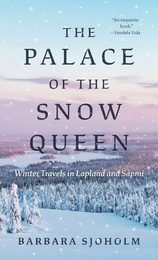 The Palace of the Snow Queen: Winter Travels in Lapland and Sápmi
Barbara Sjoholm
University of Minnesota Press, 2023 An exploration of the winter wonders and entangled histories of Scandinavia’s northernmost landscapes—now back in print with a new afterword by the author
After many years of travel in the Nordic countries—usually preferring to visit during the warmer months—Barbara Sjoholm found herself drawn to Lapland and Sápmi one winter just as mørketid, the dark time, set in. What ensued was a wide-ranging journey that eventually spanned three winters, captivatingly recounted in The Palace of the Snow Queen. From observing the annual construction of the Icehotel in Jukkasjärvi, Sweden, to crossing the storied Finnmark Plateau in Norway, to attending a Sámi film festival in Finland, Sjoholm dives deep into the rich traditions and vibrant creative communities of the North. She writes of past travelers to Lapland and contemporary tourists in Sápmi, as well as of her encounters with Indigenous reindeer herders, activists, and change-makers. Her new afterword bears witness to the perseverance of the Sámi in the face of tourism, development, and climate change. Written with keen insight and humor, The Palace of the Snow Queen is a vivid account of Sjoholm’s adventures and a timely investigation of how ice and snow shape our imaginations and create a vision that continues to draw visitors to the North.
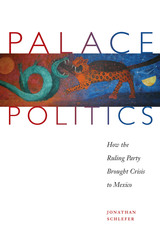 Palace Politics: How the Ruling Party Brought Crisis to Mexico
By Jonathan Schlefer
University of Texas Press, 2008 Bringing rare interviews and meticulous research to the cloaked world of Mexican politics in the mid-twentieth century, Palace Politics provides a captivating look at the authoritarian Mexican state—one of the longest-lived regimes of its kind in recent history—as well as the origins of political instability itself, with revelations that can be applied to a variety of contemporary political situations around the globe. Culling a trove of remarkable firsthand accounts from former Mexican presidents, finance ministers, interior ministers, and other high officials from the 1950s through the 1980s, Jonathan Schlefer describes a world in which elite politics planted the seeds of a mammoth socioeconomic crisis. Palace Politics outlines the process by which political infighting among small rival factions of high officials drove Mexico to precarious situations at all levels of government. Schlefer also demonstrates how, earlier on, elite cooperation among these factions had helped sustain one of the most stable growth economies in Latin America, until all-or-nothing struggles began to tear the Mexican ruling party apart in the 1970s. A vivid, seamlessly narrated history, Palace Politics is essential reading for anyone seeking to better understand not only the nation next door but also the workings of elite politics in general.
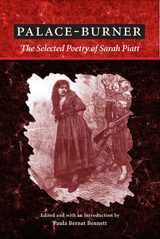 Palace-Burner: The Selected Poetry of Sarah Piatt
Edited and with an Introduction by Paula Bernat Bennett
University of Illinois Press, 2001 The unique and powerful voice of an extraordinary nineteenth-century woman poet Sarah Morgan Bryan Piatt (1836-1919) now ranks as the strongest American woman poet of the nineteenth century after Emily Dickinson. Published heavily in all the period's most prestigious journals, Piatt was widely celebrated by her peers as a gifted stylist in the genteel tradition. This selected edition reveals Piatt's other side, a side that contemporary critics found more problematic: ironic, experimental, pushing the limits of Victorian language and the sentimental female persona. Spanning more than half a century, this collection reveals the "borderland temper" of Piatt's mind and art. As an expatriate southerner, Piatt voices guilt at her own past as the daughter of slave-holders and raw anguish at the waste of war; as an eleven-year "exile" in Ireland, she expresses her dismay at the indifference of the wealthy to the daily suffering of the poor. Her poetry, whether speaking of children, motherhood, marriage, or illicit love affairs, uses conventional language and forms but in ways that greatly broadened the range of what women's poetry could say. Going beyond and even contradicting the genteel aesthetic, Piatt's poetry moves toward an innovative kind of dramatic realism built on dialogue, an approach more familiar to modern readers, acquainted with Faulknerian polyvocal texts, than to her contemporaries, who were as ill at ease with complexity as they were with irony. This astutely edited selection of Piatt's mature work--much of it never before collected--explains why her "deviant poetics" caused her peers such discomfort and why they offer such fertile ground for study today. Illustrated with engravings from Harper's Weekly and Harper's Bazaar, both periodicals in which Piatt's work appeared, Palace-Burner marks the reemergence of one of the most interesting writers in American literary history.
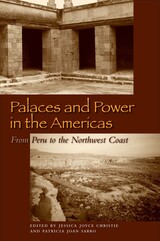 Palaces and Power in the Americas: From Peru to the Northwest Coast
Edited by Jessica Joyce Christie and Patricia Joan Sarro
University of Texas Press, 2006 Ancient American palaces still captivate those who stand before them. Even in their fallen and ruined condition, the palaces project such power that, according to the editors of this new collection, it must have been deliberately drawn into their formal designs, spatial layouts, and choice of locations. Such messages separated palaces from other elite architecture and reinforced the power and privilege of those residing in them. Indeed, as Christie and Sarro write, "the relation between political power and architecture is a pervasive and intriguing theme in the Americas." Given the variety of cultures, time periods, and geographical locations examined within, the editors of this book have grouped the articles into four sections. The first looks at palaces in cultures where they have not previously been identified, including the Huaca of Moche Site, the Wari of Peru, and Chaco Canyon in the U.S. Southwest. The second section discusses palaces as "stage sets" that express power, such as those found among the Maya, among the Coast Salish of the Pacific Northwest, and at El Tajín on the Mexican Gulf Coast. The third part of the volume presents cases in which differences in elite residences imply differences in social status, with examples from Pasado de la Amada, the Valley of Oaxaca, Teotihuacan, and the Aztecs. The final section compares architectural strategies between cultures; the models here are Farfán, Peru, under both the Chimú and the Inka, and the separate states of the Maya and the Inka. Such scope, and the quality of the scholarship, make Palaces and Power in the Americas a must-have work on the subject.
Palaces of the Ancient New World
Susan Toby Evans
Harvard University Press, 2004 Among the most sumptuous buildings of antiquity were royal palaces. As in the Old World, kings and nobles of ancient Mexico and Peru had luxurious administrative quarters in cities, and exquisite pleasure palaces in the countryside. This volume explores the great houses of the ancient New World, from palaces of the Aztecs and Incas, looted by the Spanish conquistadors, to those lost high in the Andes and deep in the jungle. This volume, the first scholarly compendium of elite residences of the high cultures of the New World, presents definitive descriptions and interpretations by leading scholars in the field. Authoritative yet accessible, this extensively illustrated book will serve as an important resource for anthropologists, archaeologists, and historians of art, architecture, and related disciplines.
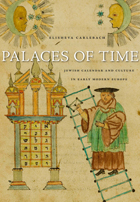 Palaces of Time: Jewish Calendar and Culture in Early Modern Europe
Elisheva Carlebach
Harvard University Press, 2011 From one of the leading historians of the Jewish past comes a stunning look into a previously unexamined dimension of Jewish life and culture: the calendar. In the late sixteenth century, Pope Gregory XIII instituted a momentous reform of Western timekeeping, and with it a period of great instability. Jews, like all minority cultures in Europe, had to realign their time-keeping to accord with the new Christian calendar.
Elisheva Carlebach shows that the calendar is a complex and living system, constantly modified as new preoccupations emerge and old priorities fade. Calendars serve to structure time and activities and thus become mirrors of experience. Through this seemingly mundane and all-but-overlooked document, we can reimagine the quotidian world of early modern Jewry, of market days and sacred days, of times to avoid Christian gatherings and times to secure communal treasures. In calendars, we see one of the central paradoxes of Jewish existence: the need to encompass the culture of the other while retaining one’s own unique culture. Carlebach reveals that Jews have always lived in multiple time scales, and demonstrates how their accounting for time, as much as any cultural monument, has shaped Jewish life.
After exploring Judaica collections around the world, Carlebach brings to light these textually rich and beautifully designed repositories of Jewish life. With color illustrations throughout, this is an evocative illumination of how early modern Jewish men and women marked the rhythms and realities of time and filled it with anxieties and achievements.
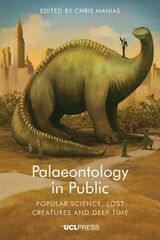 Palaeontology in Public: Popular Science, Lost Creatures and Deep Time
Edited by Chris Manias
University College London, 2025 An excavation of everything from Victorian fossil hunters to Jurassic Park, Chris Manias explores how paleontology’s greatest discoveries have always been entangled with popular culture.
From towering dinosaurs to early human ancestors, paleontology has long captured the public imagination, yet its scientific standing has often been precarious. Palaeontology in Public studies how paleontology’s public presence has shaped both the field itself and broader cultural understandings of science and nature. Through case studies spanning two centuries, this book explores the deep entanglement between vertebrate paleontology and popular culture, from early fossil discoveries to modern cinematic depictions.
Dinosaurs naturally take center stage, taking Spinosaurus, Jurassic Park, and Winsor McCay’s Gertie the Dinosaur, for instance. However, equally important are the stories of Glyptodons, Mesozoic mammals, and early human fossils like Neanderthals and Australopithecus. The book draws from history, art, literature, archaeology, and science communication to depict how public fascination has fueled scientific discovery while also shaping our collective vision of life’s ancient past.
A compelling read for historians of science, paleontologists, and those with a special interest in prehistoric creatures, Palaeontology in Public highlights the enduring power of fossils also as cultural icons that continue to inspire and spark debate.
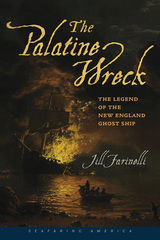 The Palatine Wreck: The Legend of the New England Ghost Ship
Jill Farinelli
University Press of New England, 2017 Two days after Christmas in 1738, a British merchant ship traveling from Rotterdam to Philadelphia grounded in a blizzard on the northern tip of Block Island, twelve miles off the Rhode Island coast. The ship carried emigrants from the Palatinate and its neighboring territories in what is now southwest Germany. The 105 passengers and crew on board—sick, frozen, and starving—were all that remained of the 340 men, women, and children who had left their homeland the previous spring. They now found themselves castaways, on the verge of death, and at the mercy of a community of strangers whose language they did not speak. Shortly after the wreck, rumors began to circulate that the passengers had been mistreated by the ship’s crew and by some of the islanders. The stories persisted, transforming over time as stories do and, in less than a hundred years, two terrifying versions of the event had emerged. In one account, the crew murdered the captain, extorted money from the passengers by prolonging the voyage and withholding food, then abandoned ship. In the other, the islanders lured the ship ashore with a false signal light, then murdered and robbed all on board. Some claimed the ship was set ablaze to hide evidence of these crimes, their stories fueled by reports of a fiery ghost ship first seen drifting in Block Island Sound on the one-year anniversary of the wreck. These tales became known as the legend of the Palatine, the name given to the ship in later years, when its original name had been long forgotten. The flaming apparition was nicknamed the Palatine Light. The eerie phenomenon has been witnessed by hundreds of people over the centuries, and numerous scientific theories have been offered as to its origin. Its continued reappearances, along with the attention of some of nineteenth-century America’s most notable writers—among them Richard Henry Dana Sr., John Greenleaf Whittier, Edward Everett Hale, and Thomas Wentworth Higginson—has helped keep the legend alive. This despite evidence that the vessel, whose actual name was the Princess Augusta, was never abandoned, lured ashore, or destroyed by fire. So how did the rumors begin? What really happened to the Princess Augusta and the passengers she carried on her final, fatal voyage? Through years of painstaking research, Jill Farinelli reconstructs the origins of one of New England’s most chilling maritime mysteries.
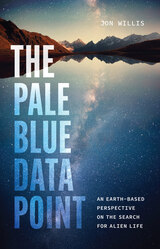 The Pale Blue Data Point: An Earth-Based Perspective on the Search for Alien Life
Jon Willis
University of Chicago Press, 2025 A thrilling tour of Earth that shows the search for extraterrestrial life starts in our own backyard.
Is there life off Earth? Bound by the limitations of spaceflight, a growing number of astrobiologists investigate the question by studying life on our planet. Astronomer and author Jon Willis shows us how it’s done, allowing readers to envision extraterrestrial landscapes by exploring their closest Earth analogs. With Willis, we dive into the Pacific Ocean from the submersible-equipped E/V Nautilus to ponder the uncharted seas of Saturn’s and Jupiter’s moons; search the Australian desert for some of Earth’s oldest fossils and consider the prospects for a Martian fossil hunt; visit mountaintop observatories in Chile to search for the telltale twinkle of extrasolar planets; and eavesdrop on dolphins in the Bahamas to imagine alien minds.
With investigations ranging from meteorite hunting to exoplanet detection, Willis conjures up alien worlds and unthought-of biological possibilities, speculating what life might look like on other planets by extrapolating from what we can see on Earth, our single “pale blue dot”—as Carl Sagan famously called it—or, in Willis’s reframing, scientists’ “pale blue data point.”
Pale Horse: A Novel of Revolutionary Russia
Boris Savinkov
University of Pittsburgh Press, 2019 Pale Horse is a thinly disguised retelling of the assassination of Grand Duke Sergei Aleksandrovich. Written in the form of a diary by the leader of a group of five revolutionaries, the novel provides a straightforward and clinical account of the assassination and contains daring and vivid descriptions of the revolutionary underground and political conspiracy. Savinkov gives free reign to his dramatic impulses, the “inner feelings” of the conspirators, and the moral dimension of the plot. The book caused an immediate sensation both in Russia and abroad. Translated from Russian by Michael Katz, Pale Horseexplores the psychological basis of terrorism and political adventurism.
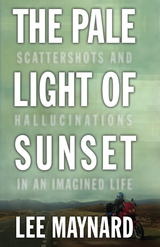 The Pale Light of Sunset: Scattershot and Hallucinations in an Imagined Life
Lee Maynard
West Virginia University Press, 2009 Real people don’t run away from. . .But real people can run away to. . . In 1936, a child is born in the mountains of West Virginia. In 2005, he scatters his past into a deep canyon of rock. The Pale Light of Sunset: Scattershots and Hallucinations in an Imagined Life illuminates the journey of this boy, a constant tourist and visitor, who travels everywhere, yet belongs nowhere. Through tales of swarming hornets and swinging bullies, love affairs with the land and its people, and near death by frostbite and heat stroke, the absurd hilarity and clear, tender voice found within this story navigates a surreal road paved by the experiences of one man. Author of nationally acclaimed and locally banned novels Crum and Screaming with the Cannibals, Lee Maynard details an imaginative account of his journey through seventy years of hard living—from West Virginia, to Mexico, the Arctic Circle, and beyond. Scattered and hallucinated, The Pale Light of Sunset grants a long-awaited glimpse into the bent condition of the Maynard brain.
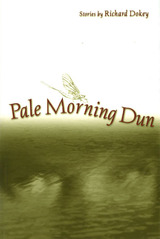 Pale Morning Dun: Stories
Stories by Richard Dokey
University of Missouri Press, 2004 When Gramp tied those thin-bodied ephemerella, as he called them, on size-eighteen hooks, their pale green bodies and diaphanous gray wings reminded us of tiny, unmoored sailboats, and when the duns themselves were adrift upon the surface of the pool, we watched as an entire armada of delicate, translucent ships spun and took flight. . . . I couldn't fish right away. I never can when the duns first come up. I have to watch them, suddenly upon the surface, their wings drying for that one day of life above the stream. . . . To have a chance at life, each pale dun for a time must drift, ignorant of the forms that wait below. In the thirteen stories of Pale Morning Dun, Richard Dokey endeavors to suggest common truths that uncover the human reality any time, in any place. He explores the ephemeral nature of life through an assemblage of characters as diverse as the settings they inhabit: from a beggar on the streets of San Francisco, “The West Coast Coliseum of Consumption,” to a boy and his brother fly-fishing in a peaceful mountain stream, unaware that they have stumbled upon the threshold of a horrific crime; from a desperate husband pursuing his estranged wife into the bloody arena of a bullfight, to a lakeside cottage where two lovers reveal perhaps too much of themselves. Each uniquely rendered character faces a dilemma that leads him beyond what he knows of himself, forcing him to new insights. The characters’ struggles, though distinctively their own, reveal universal truths about human nature and the transient quality of life. Employing an inspired blend of humor, irony, and imagination in seamless narration, Dokey allows one to enter readily into these idiosyncratic lives, inviting the reader to explore his own capacity to be human, to empathize and respond.
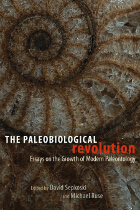 The Paleobiological Revolution: Essays on the Growth of Modern Paleontology
Edited by David Sepkoski and Michael Ruse
University of Chicago Press, 2009 The Paleobiological Revolution chronicles the incredible ascendance of the once-maligned science of paleontology to the vanguard of a field. With the establishment of the modern synthesis in the 1940s and the pioneering work of George Gaylord Simpson, Ernst Mayr, and Theodosius Dobzhansky, as well as the subsequent efforts of Stephen Jay Gould, David Raup, and James Valentine, paleontology became embedded in biology and emerged as paleobiology, a first-rate discipline central to evolutionary studies. Pairing contributions from some of the leading actors of the transformation with overviews from historians and philosophers of science, the essays here capture the excitement of the seismic changes in the discipline. In so doing, David Sepkoski and Michael Ruse harness the energy of the past to call for further study of the conceptual development of modern paleobiology.
 Paleoceanography
Thomas J. M. Schopf
Harvard University Press, 1980 Whether in the context of off-shore oil exploration or pure research, the oceans of the geological past have never been of more compelling interest. The recent expansion in oceanographic studies has produced a burgeoning of data on ancient ocean circulation, climate, bathymetry, chemistry, biology, and temperature data that now should be considered in a more general geological and paleontological framework.
Schopf has produced a remarkable synthesis of these data that provides any earth scientist with the background necessary to appreciate the history of the ancient oceans. Each of his seven chapters includes a summary of modern conditions, a major section on methods for determining ancient patterns, and a summary of each oceanographic factor over geological time.
Paleoceanography will serve as an important resource for paleontologists and for a much broader audience of earth and ocean scientists, petroleum geologists, and stratigraphers.
Paleoethnobotany of the Kameda Peninsula Jomon
Gary W. Crawford
University of Michigan Press, 1983 In this volume, author Gary W. Crawford presents archaeological data he gathered on plant utilization by Jomon populations in southwestern Hokkaido. Using this data, he examines the adaptations of the Initial through Middle Jomon (a period from 8000 BP to 4000 BP). He also considers the success of the Jomon adaptation in northeastern Japan in general.
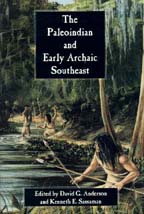 The Paleoindian and Early Archaic Southeast
Edited by David G. Anderson and Kenneth E. Sassaman
University of Alabama Press, 1996 The southeastern United States has one of the richest records of early human settlement of any area of North America. This book provides the first state-by-state summary of Paleoindian and Early Archaic research from the region, together with an appraisal of models developed to interpret the data. It summarizes what we know of the peoples who lived in the Southeast more than 8,000 years ago—when giant ice sheets covered the northern part of the continent, and such mammals as elephants, saber-toothed tigers, and ground sloths roamed the landscape. Extensively illustrated, this benchmark collection of essays on the state of Paleoindian and Early Archaic research in the Southeast will guide future studies on the subject of the region's first inhabitants for years to come. Divided in three parts, the volume includes: Part I: Modeling Paleoindian and Early Archaic Lifeways in the Southeast
Environmental and Chronological Considerations, David G. Anderson, Lisa D. O'Steen, and Kenneth E. Sassaman
Modeling Paleoindian and Early Archaic Settlement in the Southeast: A Historical Perspective, David G. Anderson and Kenneth E. Sassaman Models of Paleoindian and Early Archaic Settlement in the Lower Southeast, David G. Anderson
Early Archaic Settlement in the South Carolina Coastal Plain, Kenneth E. Sassaman
Raw Material Availability and Early Archaic Settlement in the Southeast, I. Randolph Daniel Jr.
Paleoindian and Early Archaic Settlement along the Oconee Drainage, Lisa D. O'Steen
Haw River Revisited: Implications for Modeling Terminal Late Glacial and Early Holocene Hunter-Gatherer Settlement Systems in the Southeast, John S. Cable
Early Archiac Settlement and Technology: Lessons from Tellico, Larry R. Kimball
Paleoindians Near the Edge: A Virginia Perspective, Michael F. Johnson Part II: The Regional Record
The Need for a Regional Perspective, Kenneth E. Sassaman and David G. Anderson
Paleoindian and Early Archaic Research in the South Carolina Area, David G. Anderson and Kenneth E. Sassaman
The Taylor Site: An Early Occupation in Central South Carolina, James L. Michie
Paleoindian and Early Archaic Research in Tennessee, John B. Boster and Mark R. Norton
A Synopsis of Paleoindian and Early Archaic Research in Alabama, Eugene M. Futato
Statified Late Pleistocene and Early Holocene Deposits at Dust Cave, Northwestern Alabama, Boyce N. Driskell
Bone and Ivory Tools from Submerged Paleoindian Sites in Florida, James S. Dunbar and S. David Webb
Paleoindian and Early Archaic Data from Mississippi, Samuel O. McGahey
Early and Middle Paleoindian Sites in the Northeastern Arkansas Region, J. Christopher Gillam Part III: Commentary
A Framework for the Paleoindian/Early Archaic Transition, Joel Gunn
Modeling Communities and Other Thankless Tasks, Dena F. Dincauze
An Arkansas View, Dan F. Morse
Comments, Henry T. Wright
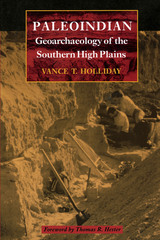 Paleoindian Geoarchaeology of the Southern High Plains
By Vance T. Holliday
University of Texas Press, 1997 The Southern High Plains of northwestern Texas and eastern New Mexico are rich in Paleoindian archaeological sites, including such well-known ones as Clovis, Lubbock Lake, Plainview, and Midland. These sites have been extensively researched over decades, not only by archaeologists but also by geoscientists, whose studies of soils and stratigraphy have yielded important information about cultural chronology and paleoenvironments across the region. In this book, Vance T. Holliday synthesizes the data from these earlier studies with his own recent research to offer the most current and comprehensive overview of the geoarchaeology of the Southern High Plains during the earliest human occupation. He delves into twenty sites in depth, integrating new and old data on site geomorphology, stratigraphy, soils, geochronology, and paleoenvironments. He also compares the Southern High Plains sites with other sites across the Great Plains, for a broader chronological and paleoenvironmental perspective. With over ninety photographs, maps, cross sections, diagrams, and artifact drawings, this book will be essential reading for geoarchaeologists, archaeologists, and Quaternary geoscientists, as well as avocational archaeologists who take part in Paleoindian site study throughout the American West.
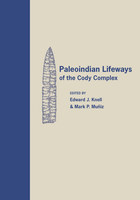 Paleoindian Lifeways of the Cody Complex
Edward J. Knell
University of Utah Press, 2013 Paleoindian Lifeways of the Cody Complex represents the first synthesis in the more than fifty year history of one of the most important Paleoindian cultural traditions in North America. Research on the Cody complex (~10,000–8,000 radiocarbon yrs B.P.) began in the 1940s; however, until now publications have focused almost exclusively on specific sites, issues of projectile point technology and typology, and bison hunting. This volume provides fresh perspectives and cutting-edge research that significantly increases our understanding of the Cody complex by focusing more squarely on the human behaviors that created the archaeological record, rather than on more strictly technical aspects of the artifacts and faunal remains. Because the Cody complex extends from the central Canadian plains to the Gulf of Mexico and from Nevada to the eastern Great Lakes—making it second only to Clovis in geographical expanse—this volume will appeal to a wide range of North American archaeologists. Across this broad geographic distribution, the contributors address hunter-gatherer adaptive strategies from diverse ecosystems at the onset of the Holocene, which will also make it of interest to human ecologists and paleoenvironmental researchers. Paleoindian Lifeways of the Cody Complex provides an innovative synthesis of a well-known but little-studied cultural tradition that opens the door for a new generation of exciting research.
The Paleo-Indian Occupation of the Holcombe Beach
James E. Fitting, Jerry DeVisscher and Edward J. Wahla
University of Michigan Press, 1966 The Holcombe site, in Macomb County, Michigan, was occupied about 11,000 years ago. At that time, it was situated on the shore of glacial Lake Clinton. In this volume, the authors describe their excavation of this site and the artifacts they found, including thousands of chipped stone tools. They also describe other Paleoindian sites along the ancient Holcombe beach and compare this site with others in the area.
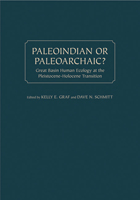 Paleoindian or Paleoarchaic?: Great Basin Human Ecology at the Pleistocene-Holocene Transition
Kelly E Graf
University of Utah Press, 2008 Were the earliest inhabitants of the Great Basin 'Paleoindians' in the traditional sense? Were they highly mobile foragers? Did they hunt large, now extinct animals like mammoth, horse, and camel?
Great Basin archaeologists have argued that the earliest inhabitants possessed an organization strategy of mixed 'Paleoindian' and 'Archaic' lifeways, referring to them as 'Paleoarchaic.'
Recent excavations of rock shelters and caves, coupled with innovative studies of the surface archaeological record have increased our understanding of human organization in the Great Basin during the late Pleistocene and early Holocene. When did humans first inhabit the Great Basin? How do we interpret projectile point variability from late Pleistocene and early Holocene contexts? What land-use and foraging strategies characterized the early inhabitants? Did these hunter-gatherers possess a Paleoindian or Paleoarchaic lifeway?
This volume offers an updated perspective of human ecology and organization during the Pleistocene-Holocene transition in the Great Basin, 13,000–8,000 years ago.
The Paleolithic of Siberia: New Discoveries and Interpretations
Edited and Compiled by Anatoli P. Derev'anko: Demitri B. Shimkin and W. Roger Powers (American Editors). Translated by Inna P. Laricheva
University of Illinois Press, 1998 This major work, the result of collaboration among scholars who worked at dozens of sites from the Ural Mountains to the Pacific Ocean, is the first volume in English to summarize the massive quantity of archaeological data on the Paleolithic occupation of Siberia. Written by leading Russian experts and edited by scholars including the late Demitri Shimkin, the book presents the results of field studies conducted over some twenty-five years. It traces the routes of human migration throughout Eurasia, shows Siberian lithic industries as they evolved from the Early through the Middle and Late Paleolithic, and correlates them with reports from Mongolia, China, Japan, and America.
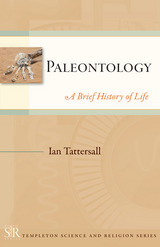 Paleontology: A Brief History of Life
Ian Tattersall
Templeton Press, 2010 "Endlessly absorbing and informative. It would be hard to imagine a better introduction to this most important and fascinating field.”—Bill Bryson, author of A Short History of Nearly Everything Paleontology: A Brief History of Life is the fifth title published in the Templeton Science and Religion Series, in which scientists from a wide range of fields distill their experience and knowledge into brief tours of their respective specialties. In this volume, Ian Tattersall, a highly esteemed figure in the fields of anthropology, archaeology, and paleontology, leads a fascinating tour of the history of life and the evolution of human beings. Starting at the very beginning, Tattersall examines patterns of change in the biosphere over time, and the correlations of biological events with physical changes in the Earth’s environment. He introduces the complex of evolutionary processes, situates human beings in the luxuriant diversity of Life (demonstrating that however remarkable we may legitimately find ourselves to be, we are the product of the same basic forces and processes that have driven the evolutionary histories of all other creatures), and he places the origin of our extraordinary spiritual sensibilities in the context of the exaptational and emergent acquisition of symbolic cognition and thought. Concise and yet comprehensive, historically penetrating and yet up-to-date, responsibly factual and yet engaging, Paleontology serves as the perfect entrée to science's greatest story.
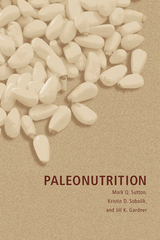 Paleonutrition
Mark Q. Sutton, Kristin D. Sobolik, and Jill K. Gardner
University of Arizona Press, 2010 Paleonutrition is the analysis of prehistoric human diets and the interpretation of dietary intake in relation to health and nutrition. As a field of study, it addresses prehistoric diets in order to determine the biological and cultural implications for individuals as well as for entire populations, placing archaeological interpretations into an anthropological context. Throughout history, and long before written records, human culture has been constantly in flux. The study of paleonutrition provides valuable insights into shifts and changes in human history, whatever their causes.
This is the most comprehensive and up-to-date book on the topic. Intended for students and professionals, it describes the nature of paleonutrition studies, reviews the history of paleonutrition research, discusses methodological issues in the reconstruction of prehistoric diets, presents theoretical frameworks frequently used in paleonutrition research, and showcases examples in which paleonutritional analyses have been successfully conducted on prehistoric individuals, groups, and populations. It offers an integrative approach to understanding state-of-the-art anthropological dietary, health, and nutritional assessments. The most recent and innovative methods used to reconstruct prehistoric diets are discussed, along with the major ways in which paleonutrition data are recovered, analyzed, and interpreted.
Paleonutrition includes five contemporary case studies that provide useful models of how to conduct paleonutrition research. Topics range from ancient diets in medieval Nubia to children’s health in the prehistoric American Southwest to honey use by an ethnographic group of East African foragers. As well as providing interesting examples of applying paleonutrition techniques, these case studies illustrate the mutually beneficial linkages between ethnography and archaeology.
A Paler Shade of Red: The 2008 Presidential Election in the South
Branwell DuBose Kapeluck
University of Arkansas Press, 2009 The scholars included in A Paler Shade of Red cover the 2008 presidential election with detailed, state-by-state analyses of how the presidential election, from the nomination struggle through the casting of votes in November, played out in the South. The book also includes examinations of important elections other than for president, and in addition to the single-state perspectives, there are three chapters that look at the region as a whole. Contributors are Scott E. Buchanan, John A. Clark, Patrick R. Cotter, Charles Bullock III, Rogert E. Hogan and Eunice H. McCarney, David A. Breaux and Stephen D. Shaffer, Cole Blease Graham, Jay Barth, Janine A. Parry and Todd G. Shields, Jonathan Knuckey, Charles Prysby, Ronald Keith Gaddie, Brian Arbour and Mark McKenzie, and John J. McGlennon, all collected here to provide powerful insight into southern politics today.
Palermo
Roberto Alajmo
Haus Publishing, 2017 Palermo's heart lies hidden under its many outer layers. In this unusual guide to the beautiful Sicilian capital, Roberto Alajmo uncovers each stratum to reveal its true character. Although disguised as a tourist's handbook, Palermo has much more to offer than ordinary recommendations for the intrepid traveler. Alajmo gives an insight into the city from a lifelong resident's point of view, showcasing its hidden cultural and culinary jewels; portraying its people, and their secrets; touching on its politics and contentious mafia involvement. Seeing Palermo with one's own eyes is an ineffable experience, even for Alajmo; the essence of the city, its beauty, is the only aspect left to the reader to discover.
 Palestine America, Volume 102
Mohammed Bamyeh, ed.
Duke University Press In the many decades of the Palestinian-Israeli conflict, the full complexity of that strife has seldom been heard. This special issue of SAQ seeks to intervene by offering a critique of the Palestinian experience. Mapping the complicated relationship among Palestine, the United States, and Israel, this issue includes critical essays on the politics, culture, literature, and history of the Palestinian people. Bringing together a diverse group of contributors ranging from Roane Carey of the Nation to scholars in Arab, Jewish, and comparative literary studies, this special issue considers Palestinian gender and identity and their relationship to the conflict with Israel as represented in film, literature, and photography. Essays explore the failed peace process, misrepresentations of the Oslo meetings, the devastating effect of continued Israeli occupation of the Palestinian territories, and the growing controversy over the call for U.S. military divestment from Israel. Contributors. Ammiel Alcalay, Amal Amireh, Mohammed Bamyeh, Roane Carey, Thomas W. Lockwood, Lisa Suhair Majaj, Saree Makdisi, Melani McAlister, Brinda J. Mehta, John Michael, Andrew N. Rubin, Kenneth Surin
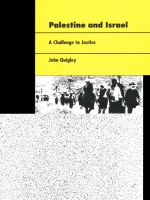 Palestine and Israel: A Challenge to Justice
John Quigley
Duke University Press, 1990 The dispute over Palestine between the Palestinian Arabs and the Israelis is one of the most volatile and intractable conflicts in the world today. Palestine and Israel examines the history of this battle from the perspective of international law, and it argues that a long-term solution to the conflict must protect legitimate interests to remain viable—an element the author believes has so far been seriously neglected. This extensively documented work details the complex politics and agonizing struggles that have characterized the clash between Jews and Arabs, examining in depth the competing claims to Palestine and the extent to which legitimate interests remain to be fulfilled.
Beginning with the early Zionist settlement in Palestine that rose from the effort by Jews to escape long-standing discrimination in Europe, Qigley investigates the origins of the dispute, including the British occupation of Palestine, the British Mandate, and the involvement of the United Nations. He examines the 1948 War, the establishment of Israel, and explores the legal and political status of Jews there. After a detailed analysis of the 1967 War and Israel’s occupation of the West Bank and Gaza Strip, he concludes with recommendations for resolving the conflict, including discussions of the responsibility of other states for the persisting injustice, the role of other states in settling the dispute, and steps to a possible solution.
 Palestine and Jewish History: Criticism at the Borders of Ethnography
Jonathan Boyarin
University of Minnesota Press, 1996 Palestine and Jewish History was first published in 1996. Minnesota Archive Editions uses digital technology to make long-unavailable books once again accessible, and are published unaltered from the original University of Minnesota Press editions. This provocative and personal series of meditations on the Israeli-Palestinian conflict argues that it represents a struggle not as much about land and history as about space, time, and memory. Juxtaposing entries from Jonathan Boyarin's field diary with critical and theoretical articulations, Palestine and Jewish History shows not only the unfinished nature of anthropological endeavor, but also the author's personal stake in the ethical predicament of being a Jew at this point in history. Boyarin comes to Israel as a specialist in modern Jewish studies, an individual who has kin, friends, and colleagues there, a scholar with a long history of peace activism. He interweaves fascinating descriptions of ordinary life-parties, walks, classes, visits to homes-with a selection of his related writings on cultural studies and anthropology. Some sections are polemical; others are witty analyses of bumper stickers, slogans, the ambiguities in conversations. Boyarin foregrounds the messiness and lack of closure inherent in this process, presenting "raw materials" (field notes) in some sections of the book that reappear in other sections as various kinds of "finished" products (conference papers, published articles). In the process, we learn a good deal about the Middle East and its debates and connections to other places. Boyarin addresses two fundamental issues: the difficulty of linking different sorts of memories and memorializations, and the importance of moving beyond objectivity and multiculturalism into a situated, engaged, and nontotalizing framework for fieldwork and ethnography. Palestine and Jewish History enacts rather than reports on Boyarin's process of error, pain, impatience, uncertainty, discovery, embarrassment, self-criticism, intellectual struggle, and dawning awareness, challenging and engaging us in the process of discovery. Ultimately, it gives the lie, as the Palestinian presence does in Israel, to any concept of a "finishedness" that successfully conceals its unruly and painful multiple processes. Jonathan Boyarin is the Leonard and Tobee Kaplan Distinguished Professor of Modern Jewish Thought in the Department of Religious Studies at the University of North Carolina at Chapel Hill. He is the author of Storm from Paradise, co-author of Powers of Diaspora, and the co-editor of Remapping Memory and Jews and Other Differences, all available from Minnesota.
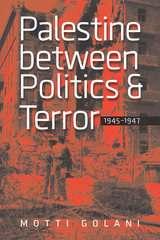 Palestine between Politics and Terror, 1945–1947
Motti Golani
Brandeis University Press, 2013 British General Sir Allan Cunningham was appointed in 1945 as high commissioner of Palestine, and served in this capacity until the end of the British mandate on May 15, 1948. The three years of Cunningham’s tenure were tremendously complex politically: players included the British government in London, the British army, the British administration in Jerusalem, and diverse military forces within the Zionist establishment, both Jew and Arab. Golani revisits this period from the perspective of the high commissioner, examining understudied official documents as well as Cunningham’s letters, notes, and cables. He emphasizes especially the challenges of navigating Jewish and Arab terrorists, on the one hand, and the multiple layers of British institutional bureaucracies, on the other, and does an excellent job of establishing Sir Allan’s daily trials within the broad frame of the collapse of the British Empire following World War II.
Palestine in a Transnational Context, Volume 21
Timothy Mitchell , Gyan Prakash and Ella Shohat, eds.
Duke University Press In the three years since the outbreak of the second Intifada in October 2000, the policy-making of the U.S. government has been haunted by the question of Palestine. While the United States has always been allied to and supportive of Israel, since September 11, 2001, its policy has shifted even closer to the Israeli regional agenda. This special issue places the Palestine question in a transnational and comparative frame that strives to better depict its historical complexity. The issue also gives special consideration to the different modes of Palestinian resistance both within and outside the state of Israel and the occupied territories.
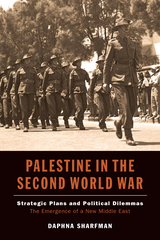 Palestine in the Second World War: Strategic Plans and Political Dilemmas - The Emergence of a New Middle East
Daphna Sharfman
Sussex Academic Press, 2022 While the conflicts and national aspirations in British mandatory Palestine in particular and the Middle East in general were evident before the outbreak of the Second World War, the war itself accelerated and enhanced national expectations and presented continuing tactical and strategic dilemmas to British, Arab, and Jewish leaders. British strategic policy during the war failed to provide answers to the political issues of the growing national demands in Palestine, and led to severe distrust of British policy among Arabs and Jews, as the two communities were framing mostly opposing reactions to wartime developments, and to conflicting expectations and policies toward postwar solutions for Palestine. The aim of this work is to analyze the continual development of strategic plans and political dilemmas that arose during the war period, which led to the subsequent postwar circumstance where American and Soviet involvement impacted on the strategic thinking of all involved parties, notwithstanding the British military victory. Analysis includes: the prewar British strategic situation in Palestine, and the war events in Palestine and its Middle East neighbor countries (at the military-strategic level and the repercussions of the outcome of the war for the local Palestinian population). At the heart of the discussion lies British interests and policies framed toward Jews and Arabs; analysis of the two communities' conflicting interests and policies; and the resultant sea-change in the establishment of the Jewish state which brought in its wake the emergence of a New Middle East.
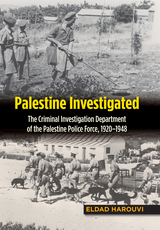 Palestine Investigated: The Criminal Investigation Department of the Palestine Police Force, 1920-1948
Eldad Harouvi
Sussex Academic Press, 2022 This book tells the story of the Criminal Investigation Department (CID) of the Palestine Police Force (PPF) in the historical context which impacted the CID's missions, methods, and composition. At first, the CID was engaged in providing technical assistance for criminal investigation. Following the PPF's poor performance in the Arab Revolt in 1929, a commission of inquiry, headed by Sir Herbert Dowbiggin, recommended adding intelligence gathering and surveillance of political elements to police functions. Teams were set up and a Special Branch established. From 1932 the CID deployed a network of "live sources" among the Arabs and issued intelligence summaries evaluating Arab and Jewish political activity. Post-1935 the security situation deteriorated: Arab policemen and officials joined the Arab side, thus drying-up sources of information; the British therefore asked for assistance from the Jewish population. In 1937 Sir Charles Tegart recommended that the CID invest in obtaining raw intelligence by direct contacts in the field. In 1938 Arthur Giles took command and targeted both the Revisionist and Yishuv movements. Although the CID did not succeed in obtaining sufficient tactical information to prevent Yishuv actions, Giles identified the mood of the Jewish leadership and public -- an important intelligence accomplishment regarding Britain's attitude towards the Palestine question. But British impotence in the field was manifested by the failure to prevent the bombing of the King David Hotel in Jerusalem. Towards the end of the Mandate, as civil war broke out following the UN General Assembly resolution of November 1947, the CID was primarily engaged in documenting events and providing evaluations to London whose decision-makers put high value on CID intelligence as they formulated political responses. With Forewords by Professor Yoav Gelber (Univeristy of Haifa and Professor John Ferris (University of Calgary). *** "This is an extensively researched, highly detailed and well-written account of the activities of the Criminal Investigation Department (CID) of the Palestine Police during the period of the British Mandate for Palestine from 1920 to 1948." --INTELLIGENCER: Journal of U.S. Intelligence Studies, Winter 2017-18.
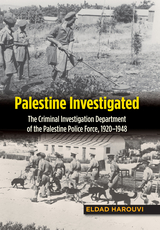 Palestine Investigated: The Criminal Investigation Department of the Palestine Police Force, 1920-1948
Eldad Harouvi
Sussex Academic Press, 2022 This book tells the story of the Criminal Investigation Department (CID) of the Palestine Police Force (PPF) in the historical context which impacted the CID's missions, methods, and composition. At first, the CID was engaged in providing technical assistance for criminal investigation. Following the PPF's poor performance in the Arab Revolt in 1929, a commission of inquiry, headed by Sir Herbert Dowbiggin, recommended adding intelligence gathering and surveillance of political elements to police functions. Teams were set up and a Special Branch established. From 1932 the CID deployed a network of "live sources" among the Arabs and issued intelligence summaries evaluating Arab and Jewish political activity. Post-1935 the security situation deteriorated: Arab policemen and officials joined the Arab side, thus drying-up sources of information; the British therefore asked for assistance from the Jewish population. In 1937 Sir Charles Tegart recommended that the CID invest in obtaining raw intelligence by direct contacts in the field. In 1938 Arthur Giles took command and targeted both the Revisionist and Yishuv movements. Although the CID did not succeed in obtaining sufficient tactical information to prevent Yishuv actions, Giles identified the mood of the Jewish leadership and public -- an important intelligence accomplishment regarding Britain's attitude towards the Palestine question. But British impotence in the field was manifested by the failure to prevent the bombing of the King David Hotel in Jerusalem. Towards the end of the Mandate, as civil war broke out following the UN General Assembly resolution of November 1947, the CID was primarily engaged in documenting events and providing evaluations to London whose decision-makers put high value on CID intelligence as they formulated political responses. With Forewords by Professor Yoav Gelber (Univeristy of Haifa and Professor John Ferris (University of Calgary). *** "This is an extensively researched, highly detailed and well-written account of the activities of the Criminal Investigation Department (CID) of the Palestine Police during the period of the British Mandate for Palestine from 1920 to 1948." --INTELLIGENCER: Journal of U.S. Intelligence Studies, Winter 2017-18.
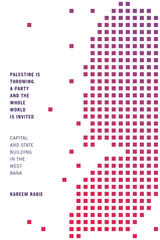 Palestine Is Throwing a Party and the Whole World Is Invited: Capital and State Building in the West Bank
Kareem Rabie
Duke University Press, 2021 In 2008, Palestinian Prime Minister Salam Fayyad invited international investors to the first-ever Palestine Investment Conference, which was designed to jump-start the process of integrating Palestine into the global economy. As Fayyad described the conference, Palestine is “throwing a party, and the whole world is invited.” In this book Kareem Rabie examines how the conference and Fayyad's rhetoric represented a wider shift in economic and political practice in ways that oriented state-scale Palestinian politics toward neoliberal globalization rather than a diplomatic two-state solution. Rabie demonstrates that private firms, international aid organizations, and the Palestinian government in the West Bank focused on large-scale private housing development in an effort toward state-scale economic stability and market building. This approach reflected the belief that a thriving private economy would lead to a free and functioning Palestinian state. Yet, as Rabie contends, these investment-based policies have maintained the status quo of occupation and Palestine's subordinate and suspended political and economic relationship with Israel.
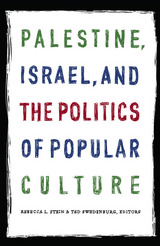 Palestine, Israel, and the Politics of Popular Culture
Rebecca L. Stein and Ted Swedenburg, eds.
Duke University Press, 2005 This important volume rethinks the conventional parameters of Middle East studies through attention to popular cultural forms, producers, and communities of consumers. The volume has a broad historical scope, ranging from the late Ottoman period to the second Palestinian uprising, with a focus on cultural forms and processes in Israel, Palestine, and the refugee camps of the Arab Middle East. The contributors consider how Palestinian and Israeli popular culture influences and is influenced by political, economic, social, and historical processes in the region. At the same time, they follow the circulation of Palestinian and Israeli cultural commodities and imaginations across borders and checkpoints and within the global marketplace. The volume is interdisciplinary, including the work of anthropologists, historians, sociologists, political scientists, ethnomusicologists, and Americanist and literary studies scholars. Contributors examine popular music of the Palestinian resistance, ethno-racial “passing” in Israeli cinema, Arab-Jewish rock, Euro-Israeli tourism to the Arab Middle East, Internet communities in the Palestinian diaspora, café culture in early-twentieth-century Jerusalem, and more. Together, they suggest new ways of conceptualizing Palestinian and Israeli political culture. Contributors. Livia Alexander, Carol Bardenstein, Elliott Colla, Amy Horowitz, Laleh Khalili, Mary Layoun, Mark LeVine, Joseph Massad, Melani McAlister, Ilan Pappé, Rebecca L. Stein, Ted Swedenburg, Salim Tamari
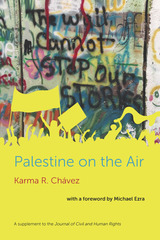 Palestine on the Air
Karma R. Chavez
University of Illinois Press, 2019 Few doubt the pro-Israel bias of the Western media. It takes the form of overtly supporting Israel's government policies, or of maintaining neutrality or silence on issues of Israeli violence, occupation, and settlement expansion. Scholar and activist Karma R. Chávez collects eleven interviews that allow dissenting voices a forum to provide rarely heard perspectives on the Palestinian struggle for justice, land, and self-determination.This volume in the Common Threads series is a supplement to the Journal of Civil and Human Rights. The conversations within took place on a radio program Chávez hosted from 2013-16. There, journalists, activists, academic figures, authors, and Palestinian citizens of Israel shared a wide range of thoughts and experiences. Participants covered topics that include: everyday life for Palestinians in the West Bank and in Israel; the Boycott, Divestment, Sanctions (BDS) movement that arose in response to Israel's ongoing actions; the Steven Salaita controversy at the University of Illinois; the pro-Palestine social movement on college campuses; Israel's pinkwashing of human rights abuses; the aftermath of the 2014 attack on Gaza; and Chávez's 2015 visit to the West Bank.
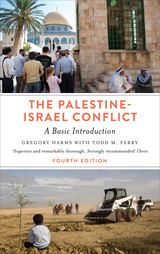 The Palestine-Israel Conflict: A Basic Introduction - Fourth Edition
Gregory Harms and Todd M. Ferry
Pluto Press, 2017 The Palestine-Israel conflict is the most notorious and ingrained conflict in living memory. Yet the way it is reported in the media is confusing and often misleading. In The Palestine-Israel Conflict, Gregory Harms and Todd M. Ferry provide an authoritative introduction to the topic. Balanced, accessible, and annotated, it covers the full history of the region from Biblical times up to the present.
Perfect for both general readers and students, it offers a comprehensive yet lucid rendering of the conflict, setting it in historical context. This fourth edition brings us up to date with a new introduction, conclusion, and material covering recent events: Israel’s Operation Protective Edge, the Palestinian unity deal between Fatah and Hamas, and ongoing Palestinian resistance, America’s Middle East policy, and the election of Trump.
Cutting through layers of confused and inconsistent information, this new edition of The Palestine-Israel Conflict will clarify the ongoing struggle for all readers.
 Palestine's Horizon: Toward a Just Peace
Richard Falk
Pluto Press, 2017 After enduring years of violent occupation, the Palestinian community is now exploring different avenues for peace. These include the pursuit of rights under international law in venues such as the UN and International Criminal Court, while establishing a new emphasis on global solidarity and non-violent action through the Boycott Divestment Sanctions (BDS) movement, among others. Richard Falk has been working within and studying the Israel/Palestine conflict for several decades, and in Palestine's Horizon, he looks closely at these transformations, offering a close analysis of one of the most controversial issues of our times.
Falk explores the intricacies and interconnections within the history and politics of Israel and Palestine, while delving into the complicated relationships the conflict has created within the global community. He refutes the notion that the Palestinian struggle is a lost cause and offers new tactics and possibilities for change. He also puts the ongoing conflict in context, reflecting on the legacy of Edward Said and drawing on the importance of his ideas as a humanist model for peace that is mindful of the formidable difficulties that come with achieving a solution to the long struggle. One of the most established and authoritative voices on the conflict, Falk now presents his most sustained and focused historical overview to date.
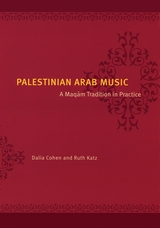 Palestinian Arab Music: A Maqam Tradition in Practice
Dalia Cohen and Ruth Katz
University of Chicago Press, 2005 This long-awaited project presents the results of a major research effort to determine the parameters of the stylistic variability of Arab folk music in Israel. Central to this old and highly improvised musical tradition is a unique modal framework that combines the concept of maqam—the foundation of Arab music theory—with other characteristics, including those of the text. Palestinian Arab Music is a comprehensive analysis of this music as actually practiced, examining both musical and nonmusical factors, their connection with the traits of individual performers, and their interaction with sociocultural phenomena.
Working initially with their own 1957 invention, the Cohen-Katz Melograph, and later with computers, Dalia Cohen and Ruth Katz recorded and digitized several hundred Palestinian music performances. The authors analyzed the musical tradition in light of its main variables. These include musical parameters, modal frameworks, the form and structure of the music, its poetic texts, and aspects of the social functions of the tradition. As a result of their study, the vexed aspect of intonation in practice is revealed to exist in a special relationship with the scale systems or maqamat, which are in turn of great importance to organizing the music and determining its modal systems.
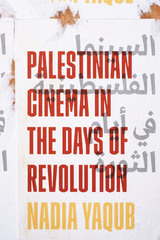 Palestinian Cinema in the Days of Revolution
By Nadia Yaqub
University of Texas Press, 2018 Palestinian cinema arose during the political cinema movements of the late 1960s and early 1970s, yet it was unique as an institutionalized, though modest, film effort within the national liberation campaign of a stateless people. Filmmakers working within the Palestinian Liberation Organization (PLO) and through other channels filmed the revolution as it unfolded, including the Israeli bombings of Palestinian refugee camps, the Jordanian and Lebanese civil wars, and Palestinian life under Israeli occupation, attempting to create a cinematic language consonant with the revolution and its needs. They experimented with form both to make effective use of limited material and to process violent events and loss as a means of sustaining active engagement in the Palestinian political project. Palestinian Cinema in the Days of Revolution presents an in-depth study of films made between 1968 and 1982, the filmmakers and their practices, the political and cultural contexts in which the films were created and seen, and their afterlives among Palestinian refugees and young filmmakers in the twenty-first century. Nadia Yaqub discusses how early Palestinian cinema operated within emerging public-sector cinema industries in the Arab world, as well as through coproductions and solidarity networks. Her findings aid in understanding the development of alternative cinema in the Arab world. Yaqub also demonstrates that Palestinian filmmaking, as a cinema movement created and sustained under conditions of extraordinary precarity, offers important lessons on the nature and possibilities of political filmmaking more generally.
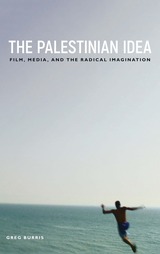 The Palestinian Idea: Film, Media, and the Radical Imagination
Greg Burris
Temple University Press, 2019 Is there a link between the colonization of Palestinian lands and the enclosing of Palestinian minds? The Palestinian Idea argues that it is precisely through film and media that hope can occasionally emerge amidst hopelessness, emancipation amidst oppression, freedom amidst apartheid. Greg Burris employs the work of Edward W. Said, Jacques Rancière, and Cedric J. Robinson in order to locate Palestinian utopia in the heart of the Zionist present. He analyzes the films of prominent directors Annemarie Jacir (Salt of This Sea, When I Saw You) and Hany Abu-Assad (Paradise Now) to investigate the emergence and formation of Palestinian identity. Looking at Mais Darwazah’s documentary My Love Awaits Me By the Sea, Burris considers the counterhistories that make up the Palestinian experience—stories and memories that have otherwise been obscured or denied. He also examines Palestinian (in)visibility in the global media landscape, and how issues of Black-Palestinian transnational solidarity are illustrated through social media, staged news spectacles, and hip hop music.
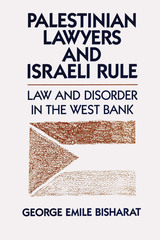 Palestinian Lawyers and Israeli Rule: Law and Disorder in the West Bank
By George Emile Bisharat
University of Texas Press, 1989 As frequent intermediaries between Israeli military authorities and Palestinian citizens, Palestinian lawyers stand close to the fault line dividing Israeli and Palestinian societies. The conflicts and tensions they experience in their profession mirror the larger conflicts between the two societies. Thus, as George Bisharat reveals in Palestinian Lawyers and Israeli Rule, a careful study of the work and lives of Palestinian lawyers ultimately helps to illuminate the causes of the intifada, or uprising, that began in December 1987. The study revolves around the central question of why the Palestinian legal profession declined during twenty years of Israeli occupation when, in other Third World countries, the legal profession has often reached its peak during a period of Western colonization. Bisharat answers this question with a wide-ranging inquiry into the historical origins of the legal profession and court system in Palestine, the tenuous grounding of these institutions in Palestinian society and culture, and the structure, style, and policies of the late-twentieth-century Israeli military government in the West Bank. For general readers interested in the Palestinian-Israeli conflict, as well as specialists in such fields as legal anthropology, sociology of the professions, Third World law and development, and Middle Eastern studies, Palestinian Lawyers and Israeli Rule will be required reading.
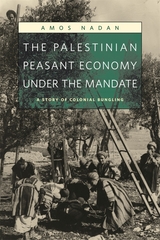 The Palestinian Peasant Economy under the Mandate: A Story of Colonial Bungling
Amos Nadan
Harvard University Press Challenging the claim that Palestine’s peasant economy progressed during the 1920s and 1930s, Amos Nadan skillfully integrates a wide variety of sources to demonstrate that the period was actually one of deterioration on both the macro (per capita) and micro levels.
The economy would have most likely continued its downward spiral during the 1940s had it not been for the temporary prosperity that resulted from World War II. Nadan argues that this deterioration continued despite the British authorities’ channeling of funds from the Jewish sector and the wealthier Arab sectors into projects for the Arab rural economy. The British were hoping that Palestine’s peasants would not rebel if their economic conditions improved. These programs were, on the whole, defective because the British chose programs based on an assumption that the peasants were too ignorant to manage their farms wisely, instead of working with the peasants and their own institutions.
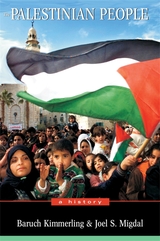 The Palestinian People: A History
Baruch Kimmerling and Joel S. Migdal
Harvard University Press, 2003 In a timely reminder of how the past informs the present, Baruch Kimmerling and Joel Migdal offer an authoritative account of the history of the Palestinian people from their modern origins to the Oslo peace process and beyond.
Palestinians struggled to create themselves as a people from the first revolt of the Arabs in Palestine in 1834 through the British Mandate to the impact of Zionism and the founding of Israel. Their relationship with the Jewish people and the State of Israel has been fundamental in shaping that identity, and today Palestinians find themselves again at a critical juncture. In the 1990s cornerstones for peace were laid for eventual Palestinian-Israeli coexistence, including mutual acceptance, the renunciation of violence as a permanent strategy, and the establishment for the first time of Palestinian self-government. But the dawn of the twenty-first century saw a reversion to unmitigated hatred and mutual demonization. By mid-2002 the brutal violence of the Intifada had crippled Palestine's fledgling political institutions and threatened the fragile social cohesion painstakingly constructed after 1967. Kimmerling and Migdal unravel what went right--and what went wrong--in the Oslo peace process, and what lessons we can draw about the forces that help to shape a people. The authors present a balanced, insightful, and sobering look at the realities of creating peace in the Middle East.
The Palestinian Refugee Problem: The Search for a Resolution
Edited by Rex Brynen and Roula El-Rifai
Pluto Press, 2013 In this unique volume, leading analysts – many of whom have been actively involved in past negotiations on this issue – provide an overview of the key dimensions of the Palestinian refugee problem. Mindful of the sensitive and contested nature of the subject, none offers a single solution. Instead, each contribution summarises and synthesises the existing scholarly and governmental work on the topic.
Each paper develops an array of policy options for resolving various aspects of the refugee issue, written in such a way as to provide a broad menu of choices rather than a single narrow set of recommendations.
No other work on the Palestinian refugee issue has undertaken such a task. The Palestinian Refugee Problem: The Search for a Resolution is likely to be a pre-eminent reference and analytical work on the topic for many years to come.
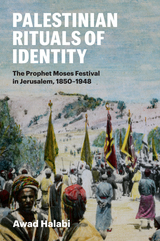 Palestinian Rituals of Identity: The Prophet Moses Festival in Jerusalem, 1850-1948
Awad Halabi
University of Texas Press, 2023 Members of Palestine’s Muslim community have long honored al-Nabi Musa, or the Prophet Moses. Since the thirteenth century, they have celebrated at a shrine near Jericho believed to be the location of Moses’s tomb; in the mid-nineteenth century, they organized a civic festival in Jerusalem to honor this prophet. Considered one of the most important occasions for Muslim pilgrims in Palestine, the Prophet Moses festival yearly attracted thousands of people who assembled to pray, conduct mystical forms of worship, and hold folk celebrations. Palestinian Rituals of Identity takes an innovative approach to the study of Palestine’s modern history by focusing on the Prophet Moses festival from the late Ottoman period through the era of British rule. Halabi explores how the festival served as an arena of competing discourses, with various social groups attempting to control its symbols. Tackling questions about modernity, colonialism, gender relations, and identity, Halabi recounts how peasants, Bedouins, rural women, and Sufis sought to influence the festival even as Ottoman authorities, British colonists, Muslim clerics, and Palestinian national leaders did the same. Drawing on extensive research in Arabic newspapers and Islamic and colonial archives, Halabi reveals how the festival has encapsulated Palestinians’ responses to modernity, colonialism, and the nation’s growing national identity.
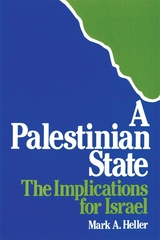 A Palestinian State: The Implications for Israel
Mark A. Heller
Harvard University Press, 1983 The future of the West Bank and Gaza remains the single most crucial issue in the search for peace in the Middle East. Examining the entire range of possible outcomes, Mark Heller argues that an independent Palestinian state in those territories, even one dominated by the PLO, could, under certain stringent conditions, be the preferred option for Israel.
In the first comprehensive treatment of the political, social, economic, and military factors bearing on the disposition of the West Bank and Gaza, Heller sets forth the possible alternatives—annexation by Israel, perpetuation of the status quo, federal or communal arrangements, and territorial compromise within the framework of the Jordanian option—and evaluates their implications for Israeli security.
Heller outlines the conditions under which he believes the establishment of a Palestinian state could be the optimal solution. He also discusses the economic prospects of a Palestinian state and the future of Jerusalem. His analysis is the boldest attempt yet to come to grips with the Palestinian question and the future of Israel. No one interested in the pursuit of a peaceful settlement of the Israeli–Arab conflict can afford to ignore this book.
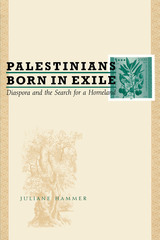 Palestinians Born in Exile: Diaspora and the Search for a Homeland
By Juliane Hammer
University of Texas Press, 2005 In the decade following the 1993 Oslo Peace Accords, some 100,000 diasporic Palestinians returned to the West Bank and Gaza. Among them were children and young adults who were born in exile and whose sense of Palestinian identity was shaped not by lived experience but rather through the transmission and re-creation of memories, images, and history. As a result, "returning" to the homeland that had never actually been their home presented challenges and disappointments for these young Palestinians, who found their lifeways and values sometimes at odds with those of their new neighbors in the West Bank and Gaza. This original ethnography records the experiences of Palestinians born in exile who have emigrated to the Palestinian homeland. Juliane Hammer interviews young adults between the ages of 16 and 35 to learn how their Palestinian identity has been affected by living in various Arab countries or the United States and then moving to the West Bank and Gaza. Their responses underscore how much the experience of living outside of Palestine has become integral to the Palestinian national character, even as Palestinians maintain an overwhelming sense of belonging to one another as a people.
 Palestinians in Israel: Segregation, Discrimination and Democracy
Ben White
Pluto Press, 2012 Palestinians in Israel considers a key issue ignored by the official 'peace process' and most mainstream commentators: that of the growing Palestinian minority within Israel itself.
What the Israeli right-wing calls 'the demographic problem' Ben White identifies as 'the democratic problem' which goes to the heart of the conflict. Israel defines itself not as a state of its citizens, but as a Jewish state, despite the substantial and increasing Palestinian population. White demonstrates how the consistent emphasis on privileging one ethno-religious group over another cannot be seen as compatible with democratic values and that, unless addressed, will undermine any attempts to find a lasting peace.
Individual case studies are used to complement this deeply informed study into the great, unspoken contradiction of Israeli democracy. It is a pioneering contribution which will spark debate amongst all those concerned with a resolution to the Israel/Palestine conflict.
 Palestra Pandemonium: A History Of The Big 5
Robert Lyons
Temple University Press, 2002 The most famous basketball tournament in the history of college basketball is the Big Five. And the Big Five was played in the most hallowed halls of college play: the Palestra. Now, for the first time, a complete story of this Philadelphia rivalry is revealed.
Robert Lyons offers the story of the Big Five from its very beginnings in 1955. At that time, many of the Big Five schools -- La Salle University, University of Pennsylvania, St. Joseph's University, Temple University, and Villanova University -- weren't even talking to each other, and everyone predicted the tournament would end before it began. Conducting interviews with coaches and players -- including famed Temple coach Harry Litwack's last interview before his death -- Lyons offers the play-by-play on how the Big Five became an institution, and how it was ultimately undone by college basketball's own success.
Lavishly illustrated with photographs of players, teams, coaches, and the Palestra itself, Palestra Pandemonium is an immediate classic, offering a chronicle of the most monumental college basketball tournament. Anywhere.
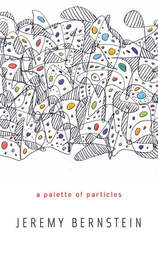 A Palette of Particles
Jeremy Bernstein
Harvard University Press, 2013 From molecules to stars, much of the cosmic canvas can be painted in brushstrokes of primary color: the protons, neutrons, and electrons we know so well. But for meticulous detail, we have to dip into exotic hues—leptons, mesons, hadrons, quarks. Bringing particle physics to life as few authors can, Jeremy Bernstein here unveils nature in all its subatomic splendor.
In this graceful account, Bernstein guides us through high-energy physics from the early twentieth century to the present, including such highlights as the newly discovered Higgs boson. Beginning with Ernest Rutherford’s 1911 explanation of the nucleus, a model of atomic structure emerged that sufficed until the 1930s, when new particles began to be theorized and experimentally confirmed. In the postwar period, the subatomic world exploded in a blaze of unexpected findings leading to the theory of the quark, in all its strange and charmed variations. An eyewitness to developments at Harvard University and the Institute for Advanced Study in Princeton, Bernstein laces his story with piquant anecdotes of such luminaries as Wolfgang Pauli, Murray Gell-Mann, and Sheldon Glashow.
Surveying the dizzying landscape of contemporary physics, Bernstein remains optimistic about our ability to comprehend the secrets of the cosmos—even as its mysteries deepen. We now know that over eighty percent of the universe consists of matter we have never identified or detected. A Palette of Particles draws readers into the excitement of a field where the more we discover, the less we seem to know.
Palladium: POEMS
Alice Fulton
University of Illinois Press, 1987 Alice Fulton's writing has been characterized by The New Yorker
as "electrifying," and the poet herself, according to Publishers
Weekly, "may be Dickinson's postmodern heir."
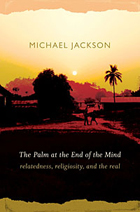 The Palm at the End of the Mind: Relatedness, Religiosity, and the Real
Michael Jackson
Duke University Press, 2009 In many societies and for many people, religiosity is only incidentally connected with texts or theologies, church or mosque, temple or monastery. Drawing on a lifetime of ethnographic work among people for whom religion is not principally a matter of faith, doctrine, or definition, Michael Jackson turns his attention to those situations in life where we come up against the limits of language, our strength, and our knowledge, yet are sometimes thrown open to new ways of understanding our being-in-the-world, to new ways of connecting with others. Through sixty-one beautifully crafted essays based on sojourns in Europe, West Africa, the United States, Australia, and New Zealand, and taking his cue from Wallace Stevens’s late poem, “Of Mere Being,” Jackson explores a range of experiences where “the palm at the end of the mind” stands “beyond thought,” on “the edge of space,” “a foreign song.” Moments of crisis as well as everyday experiences in cafés, airports, and offices disclose the subtle ways in which a single life shades into others, the boundaries between cultures become blurred, fate unfolds through genealogical time, elective affinities make their appearance, and different values contend.
Palm Crows
Virgil Suárez
University of Arizona Press, 2001 Hibiscus, banyan trees, and royal palms. Mango jam, white slices of sugarcane, and oxtail stew. Childhood games with fireflies and snail shells. These are images of a Cuba that many remember and others have never known, captured here in the powerful poems of Virgil Suárez.
Born in Havana in the wake of the Cuban Revolution, Suárez is now one of more than a million Cubans living in the United States. In Palm Crows Suárez offers a compelling canción of loss, longing, and memory as he explores the meaning of exile. In poems that range from playful and fantastic to elegiac and meditative, he writes about “the in-betweenness of spirit” of those who have left their home and must try to forge a new one in the United States.
Palm Crows shows us an almost mythical Cuba, offering a compelling testament both to the immigrant experience and to our own search for home.
Palm Frond with Its Throat Cut
Vickie Vértiz
University of Arizona Press, 2017 Palm Frond with Its Throat Cut uses both humor and sincerity to capture moments in time with a sense of compassion for the hard choices we must make to survive. Vértiz’s poetry shows how history, oppression, and resistance don’t just refer to big events or movements; they play out in our everyday lives, in the intimate spaces of family, sex, and neighborhood. Vértiz’s poems ask us to see Los Angeles—and all cities like it—as they have always been: an America of code-switching and reinvention, of lyric and fight.
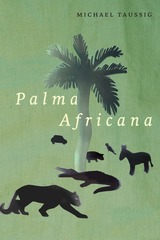 Palma Africana
Michael Taussig
University of Chicago Press, 2018 “It is the contemporary elixir from which all manner of being emerges, the metamorphic sublime, an alchemist’s dream.” So begins Palma Africana, the latest attempt by anthropologist Michael Taussig to make sense of the contemporary moment. But to what elixir does he refer?
Palm oil. Saturating everything from potato chips to nail polish, palm oil has made its way into half of the packaged goods in our supermarkets. By 2020, world production will be double what it was in 2000. In Colombia, palm oil plantations are covering over one-time cornucopias of animal, bird, and plant life. Over time, they threaten indigenous livelihoods and give rise to abusive labor conditions and major human rights violations. The list of entwined horrors—climatic, biological, social—is long. But Taussig takes no comfort in our usual labels: “habitat loss,” “human rights abuses,” “climate change.” The shock of these words has passed; nowadays it is all a blur. Hence, Taussig’s keen attention to words and writing throughout this work. He takes cues from precursors’ ruminations: Roland Barthes’s suggestion that trees form an alphabet in which the palm tree is the loveliest; William Burroughs’s retort to critics that for him words are alive like animals and don’t like to be kept in pages—cut them and the words are let free.
Steeped in a lifetime of philosophical and ethnographic exploration, Palma Africana undercuts the banality of the destruction taking place all around us and offers a penetrating vision of the global condition. Richly illustrated and written with experimental verve, this book is Taussig’s Tristes Tropiques for the twenty-first century.
Palma Cathedral
Michael White
University Press of Colorado, 1998 Winner of the 1998 Colorado Prize for Poetry
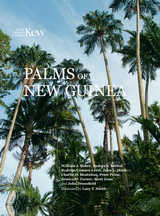 The Palms of New Guinea
William J. Baker, Anders S. Barfod, Rodrigo Camara-Leret, John L. Dowe, John Dransfield, Charlie D. Heatubun, Peter Petoe, Jessica H. Turner, and Scott Zona
Royal Botanic Gardens, Kew, 2024 A comprehensive study of New Guinean palms.
From exquisite palmlets to graceful canopy giants, palms dominate the rainforests of New Guinea, one of the last tropical wilderness areas on the planet. New Guinea is the world’s largest tropical island and a globally significant biodiversity hotspot. Its extraordinary flora and remarkable 250 species of palm are vital for the people of New Guinea, who depend on them for their survival.
Palms of New Guinea is the first comprehensive account of these immensely important plants, covering their taxonomy, identification, distribution, habitat, conservation status, and much more. Alongside over 650 photographs and 250 detailed maps, botanical artist Lucy T. Smith has illustrated all species featured in Palms of New Guinea. Written by nine scientific experts, this is an essential companion for anyone studying or working in the region.
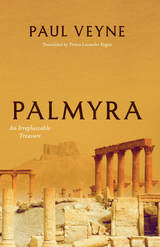 Palmyra: An Irreplaceable Treasure
Paul Veyne
University of Chicago Press, 2017 Located northeast of Damascus, in an oasis surrounded by palms and two mountain ranges, the ancient city of Palmyra has the aura of myth. According to the Bible, the city was built by Solomon. Regardless of its actual origins, it was an influential city, serving for centuries as a caravan stop for those crossing the Syrian Desert. It became a Roman province under Tiberius and served as the most powerful commercial center in the Middle East between the first and the third centuries CE. But when the citizens of Palmyra tried to break away from Rome, they were defeated, marking the end of the city’s prosperity. The magnificent monuments from that earlier era of wealth, a resplendent blend of Greco-Roman architecture and local influences, stretched over miles and were among the most significant buildings of the ancient world—until the arrival of ISIS. In 2015, ISIS fought to gain control of the area because it was home to a prison where many members of the outlawed Muslim Brotherhood had been held, and ISIS went on to systematically destroy the city and murder many of its inhabitants, including the archaeologist Khaled al-Asaad, the antiquities director of Palmyra.
In this concise and elegiac book, Paul Veyne, one of Palmyra’s most important experts, offers a beautiful and moving look at the history of this significant lost city and why it was—and still is—important. Today, we can appreciate the majesty of Palmyra only through its pictures and stories, and this book offers a beautifully illustrated memorial that also serves as a lasting guide to a cultural treasure.
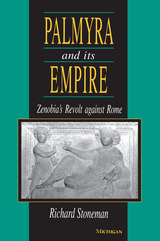 Palmyra and Its Empire: Zenobia's Revolt against Rome
Richard Stoneman
University of Michigan Press, 1995 In the twilight of the third century C.E., the unity of the Western world was threatened by financial crisis, invasion, and plague. The Syrian city Palmyra had long protected Rome against Persian invasion, but under its queen Zenobia, Palmyra broke away from Roman hegemony. The Roman Empire had never been closer to disintegration, nor had it suffered so much before at the hands of a woman.
This volume is the first comprehensive historical treatment in any language of Roman Syria, the revolt of Zenobia, and the city of Palmyra. Drawing on discoveries in archaeology, the history of the Silk Road, numismatics, and Roman and Persian history, Richard Stoneman has assembled a rich collage of knowledge about this intriguing period. As he tells the story of this major revolt and its leader, the author surveys the history of the spice trade in antiquity, the religious ferment of third- century Syria, early modern travelers to Palmyra, and in particular Zenobia's changing image through the ages.
The lucid text and numerous illustrations will attract all who are intrigued by the third- century Roman Empire and its frontiers, by pre-Islamic Arab culture, by Roman Syria and Palmyra itself, and by the fascinating Queen Zenobia.
". . . an excellent synthesis of current knowledge and a sound introduction to the third cen-tury, especially in the East. . . ."--Journal of Military History
". . . Stoneman provides an excellent and readable introduction to what is known about Palmyra, and particularly the astonishing period in the mid-third century A.D. . . . [He] marshalls recent reinterpretations of the politics of the eastern frontier by both historians and archaeologists, as well as the inspiration of his own visits to Syria, to underline Palmyra's unique commercial position and the ability over the centuries of Roman rule of its ethnically and religiously highly heterogeneous ruling class to exploit the caravan trade from East and South Asia to their economic and political advantage."--Greece & Rome
Richard Stoneman has published numerous books on the ancient world and on travel in the Eastern Mediterranean. He is Senior Editor at Routledge.
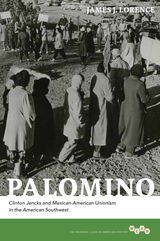 Palomino: Clinton Jencks and Mexican-American Unionism in the American Southwest
James J. Lorence
University of Illinois Press, 2013 The first comprehensive biography of progressive labor organizer, peace worker, and economist Clinton Jencks (1918–2005), this book explores the life of one of the most important political and social activists to appear in the Southwestern United States in the twentieth century. A key figure in the radical International Union of Mine, Mill, and Smelter Workers (IUMMSW) Local 890 in Grant County, New Mexico, Jencks was involved in organizing not only the mine workers but also their wives in the 1951 strike against the Empire Zinc Company. He was active in the production of the 1954 landmark labor film dramatizing the Empire Zinc strike, Salt of the Earth, which was heavily suppressed during the McCarthy era and led to Jencks's persecution by the federal government. Labor historian James J. Lorence examines the interaction between Jencks's personal experience and the broader forces that marked the world and society in which he worked and lived. Following the work of Jencks and his equally progressive wife, Virginia Derr Jencks, Lorence illuminates the roots and character of Southwestern unionism, the role of radicalism in the Mexican-American civil rights movement, the rise of working-class feminism within Local 890 and the Grant County Mexican American community, and the development of Mexican-American identity in the Southwest. Chronicling Jencks's five-year-long legal battle against charges of perjury, this biography also illustrates how civil liberties and American labor were constrained by the specter of anticommunism during the Cold War. Drawing from extensive research as well as interviews and correspondence, this volume highlights Clinton Jencks's dramatic influence on the history of labor culture in the Southwest through a lifetime devoted to progress and change for the social good.
 The Pãltinis Diary: A Paideic Model in Humanist Culture
Gabriel Liiceanu
Central European University Press, 2000 The intellectual resistance to totalitarian regimes can take many forms. This remarkable volume portrays one such story of resistance in Romania during the reign of Ceauşescu: that of Constantin Noica, one of the country’s foremost intellectuals. Noica was an original thinker belonging to the remarkable intellectual generation of important figures such as Mircea Eliade, E. M. Cioran and Eugene Ionescu, but he chose to stay in Romania after the communist takeover when many others fled. Harassed and jailed for six years, Noica retreated to the mountains and gathered around him some brilliant young minds and future talent to challenge and nurture them in a time when communism denied them the materials of true intellectual importance. This group of students withdrew to Noica’s retreat for intensive philosophical sessions to debate the works of Kant, Plato, Heidegger and discuss humanistic values. The author of this volume Liiceanu, himself a brilliant philosopher, was Noica’s closest disciple and during every meeting he noted every conversation in a diary which came to be known as The Păltiniş Diary. These conversations were secretly published and quickly devoured by intellectuals in Romania who were prepared to sacrifice part of their food provisions to acquire the book. The Păltiniş Diary sold out within a matter of days and because of Secret Police censorship, was not published again in Romania until 1991 by which time Noica had died and the group had disbanded to help with the reconstruction of post-Ceauşescu Romania. The Păltiniş Diary is a wonderful homage to an intellectual master and to the power of intellect and freedom. The book will be of interest to philosophers, non-philosophers alike, and to anyone who seeks to grasp the true meaning of survival under totalitarian conditions.
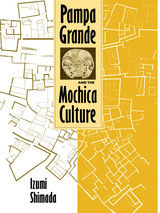 Pampa Grande and the Mochica Culture
By Izumi Shimada
University of Texas Press, 1994 Pampa Grande, the largest and most powerful city of the Mochica (Moche) culture on the north coast of Peru, was built, inhabited, and abandoned during the period A.D. 550-700. It is extremely important archaeologically as one of the few pre-Hispanic cities in South America for which there are enough reliable data to reconstruct a model of pre-Hispanic urbanism. This book presents a "biography" of Pampa Grande that offers a reconstruction not only of the site itself but also of the sociocultural and economic environment in which it was built and abandoned. Izumi Shimada argues that Pampa Grande was established rapidly and without outside influence at a strategic position at the neck of the Lambayeque Valley that gave it control over intervalley canals and their agricultural potential and allowed it to gain political dominance over local populations. Study of the site itself leads him to posit a large resident population made up of transplanted Mochica and local non-Mochica groups with a social hierarchy of at least three tiers.
"Pamphilia to Amphilanthus" in Manuscript and Print
Lady Mary Wroth
Iter Press, 2017 Lady Mary Wroth’s private manuscript, printed here for the first time, shows her to be a great poet, more psychologically insightful, verbally sophisticated, and boldly original than scholars had realized. Her carefully curated and re-conceptualized printed collection also reveals her to be a remarkably self-reflexive and critically astute writer. When the manuscript and printed sequences are read together, as this edition encourages readers to do, Wroth’s poetry is seen clearly as innovative, erotic, and shrewdly multivalent.
 Pamphlets of the American Revolution, 1750-1776
Bernard Bailyn
Harvard University Press This is the first volume of a four-volume set that will reprint in their entirety the texts of 72 pamphlets relating to the Anglo-American controversy that were published in America in the years 1750–1776. They have been selected from the corpus of the pamphlet literature on the basis of their importance in the growth of American political and social ideas, their role in the debate with England over constitutional rights, and their literary merit. All of the best known pamphlets of the period, such as James Otis’s Rights of the British Colonies (1764), John Dickinson’s Farmer’s Letters (1768), and Thomas Paine’s Common Sense (1776) are to be included. In addition there are lesser known ones particularly important in the development of American constitutional thought: Stephen Johnson’s Some Important Observations (1766), John Joachim Zubly’s An Humble Enquiry (1769), Ebenezer Baldwin’s An Appendix Stating the Heavy Grievances (1774), and Four Letters on Interesting Subjects (1776). There are also pamphlets illustrative of the sheer vituperation of the Revolutionary polemics, and others selected for their more elevated literary merit. Both sides of the Anglo-American dispute and all genres of expression—poetry, dramatic dialogues, sermons, treatises, documentary collections, political “position papers”—that appeared in this form are included.
Each pamphlet is introduced by an essay written by the editor containing a biographical sketch of the author of the document, an analysis of the circumstances that led to the writing of it, and an interpretation of its contents. The texts are edited for the convenience of the modern reader according to a scheme that preserves scrupulously the integrity of every word written but that frees the text from the encumbrances of eighteenth-century printing practices. All references to writings, people, and events that are not obvious to the informed modern reader are identified in the editorial apparatus and where necessary explained in detailed notes.
This first volume of the set contains the texts of 14 pamphlets through the year 1765. It presents, in addition, a book-length General Introduction by Bernard Bailyn on the ideology of the American Revolution. In the seven chapters of this essay the ideological origins and development of the Revolutionary movement are analyzed in the light of the study of the pamphlet literature that went into the preparation of these volumes. Bailyn explains that close analysis of this literature allows one to penetrate deeply into the colonists’ understanding of the events of their time; to grasp more clearly than is otherwise possible the sources of their ideas and their motives in rebelling; and, above all, to see the subtle, fundamental transformation of eighteenth-century constitutional thought that took place during these years of controversy and that became basic doctrine in America thereafter.
Bailyn stresses particularly the importance in the development of American thought of the writings of a group of early eighteenth-century English radicals and opposition politicians who transmitted to the colonists most directly the seventeenth-century tradition of anti-authoritarianism born in the upheaval of the English Civil War. In the context of this seventeenth- and early eighteenth-century tradition one sees the political importance in the Revolutionary movement of concepts the twentieth century has generally dismissed as mere propaganda and rhetoric: “slavery,” “conspiracy,” “corruption.” It was the meaning these concepts imparted to the events of the time, Bailyn suggests, as well as the famous Lockean notions of natural rights and social and governmental compacts, that accounts for the origins and the basic characteristics of the American Revolution.
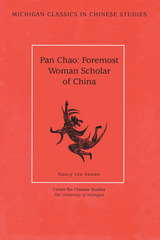 Pan Chao: Foremost Woman Scholar of China
Nancy Lee Swann
University of Michigan Press, 2001 First published in 1932, Pan Chao is perhaps the earliest work by an American scholar on a Chinese woman intellectual. Alongside the story of Pan’s life, Nancy Lee Swann sketches the Eastern Han period when Pan lived and wrote, her family background, and the literary milieu of which she was a part. In addition, Swann provides translations of writings definitively identified with Pan that survive from the years when she was active (ca. 89–105 a.d.). While Pan is well known for her contribution to the great Han-shu, of special interest is her treatise on the moral training of women, in which she makes a plea for girls to be given the same education as boys and points to principles that led young women to success in ancient China. Swann also includes memorials, short poems, and an essay, all of which demonstrate Pan's rhetorical skills and her concerns at the Han court. A considerable work of scholarship, Pan Chao is grounded in Swann’s detailed knowledge of the history and literature of the late Han. Swann includes the Chinese text for shorter works and a comprehensive list of primary sources on this important early scholar.
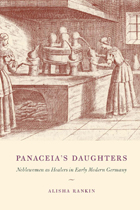 Panaceia's Daughters: Noblewomen as Healers in Early Modern Germany
Alisha Rankin
University of Chicago Press, 2013 Panaceia’s Daughters provides the first book-length study of noblewomen’s healing activities in early modern Europe. Drawing on rich archival sources, Alisha Rankin demonstrates that numerous German noblewomen were deeply involved in making medicines and recommending them to patients, and many gained widespread fame for their remedies. Turning a common historical argument on its head, Rankin maintains that noblewomen’s pharmacy came to prominence not in spite of their gender but because of it. Rankin demonstrates the ways in which noblewomen’s pharmacy was bound up in notions of charity, class, religion, and household roles, as well as in expanding networks of knowledge and early forms of scientific experimentation. The opening chapters place noblewomen’s healing within the context of cultural exchange, experiential knowledge, and the widespread search for medicinal recipes in early modern Europe. Case studies of renowned healers Dorothea of Mansfeld and Anna of Saxony then demonstrate the value their pharmacy held in their respective roles as elderly widow and royal consort, while a study of the long-suffering Duchess Elisabeth of Rochlitz emphasizes the importance of experiential knowledge and medicinal remedies to the patient’s experience of illness.
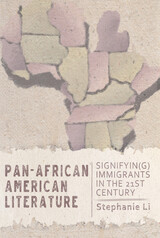 Pan–African American Literature: Signifyin(g) Immigrants in the Twenty-First Century
Li, Stephanie
Rutgers University Press, 2018 2019 Choice Outstanding Academic Title
The twenty-first century is witnessing a dynamic broadening of how blackness signifies both in the U.S. and abroad. Literary writers of the new African diaspora are at the forefront of exploring these exciting approaches to what black subjectivity means. Pan-African American Literature is dedicated to charting the contours of literature by African born or identified authors centered around life in the United States. The texts examined here deliberately signify on the African American literary canon to encompass new experiences of immigration, assimilation and identification that challenge how blackness has been previously conceived. Though race often alienates and frustrates immigrants who are accustomed to living in all-black environments, Stephanie Li holds that it can also be a powerful form of community and political mobilization.
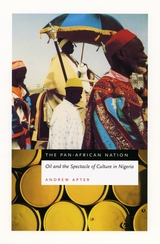 The Pan-African Nation: Oil and the Spectacle of Culture in Nigeria
Andrew Apter
University of Chicago Press, 2005 When Nigeria hosted the Second World Black and African Festival of Arts and Culture (FESTAC) in 1977, it celebrated a global vision of black nationhood and citizenship animated by the exuberance of its recent oil boom. Andrew Apter's The Pan-African Nation tells the full story of this cultural extravaganza, from Nigeria's spectacular rebirth as a rapidly developing petro-state to its dramatic demise when the boom went bust.
According to Apter, FESTAC expanded the horizons of blackness in Nigeria to mirror the global circuits of its economy. By showcasing masks, dances, images, and souvenirs from its many diverse ethnic groups, Nigeria forged a new national culture. In the grandeur of this oil-fed confidence, the nation subsumed all black and African cultures within its empire of cultural signs and erased its colonial legacies from collective memory. As the oil economy collapsed, however, cultural signs became unstable, contributing to rampant violence and dissimulation.
The Pan-African Nation unpacks FESTAC as a historically situated mirror of production in Nigeria. More broadly, it points towards a critique of the political economy of the sign in postcolonial Africa.
Panajachel: A Guatemalan Town in Thirty-year Perspective
Robert E. Hinshaw
University of Pittsburgh Press, 1975
Building on Sol Tax's pioneering work of the economic organization of Panajachel in the 1930s, Hinshaw describes this Guatemalan village and analyzes the differences among Indians in other villages responding to environmental, social, and economic changes in the next quarter century. This book offers a unique examination of belief patterns and social relations, and the continuity and change in the society's worldview.
The Panama Hat Trail
Tom Miller
University of Arizona Press, 1986 Critically acclaimed author Tom Miller reveals the making and marketing of one Panama hat, from the straw fields of Ecuador’s coastal lowland to a hat shop in Southern California. Along the way, the hat becomes a literary device allowing Miller to give us his impressions from the tributaries of the Amazon to the mountainsides of the Andes. The Panama Hat Trail is at once a study in global economics and a lively travelogue.
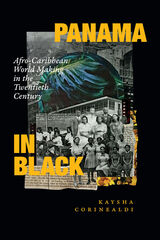 Panama in Black: Afro-Caribbean World Making in the Twentieth Century
Kaysha Corinealdi
Duke University Press, 2022 In Panama in Black, Kaysha Corinealdi traces the multigenerational activism of Afro-Caribbean Panamanians as they forged diasporic communities in Panama and the United States throughout the twentieth century. Drawing on a rich array of sources including speeches, yearbooks, photographs, government reports, radio broadcasts, newspaper editorials, and oral histories, Corinealdi presents the Panamanian isthmus as a crucial site in the making of an Afro-diasporic world that linked cities and towns like Colón, Kingston, Panamá City, Brooklyn, Bridgetown, and La Boca. In Panama, Afro-Caribbean Panamanians created a diasporic worldview of the Caribbean that privileged the potential of Black innovation. Corinealdi maps this innovation by examining the longest-running Black newspaper in Central America, the rise of civic associations created to counter policies that stripped Afro-Caribbean Panamanians of citizenship, the creation of scholarship-granting organizations that supported the education of Black students, and the emergence of national conferences and organizations that linked anti-imperialism and Black liberation. By showing how Afro-Caribbean Panamanians used these methods to navigate anti-Blackness, xenophobia, and white supremacy, Corinealdi offers a new mode of understanding activism, community, and diaspora formation.
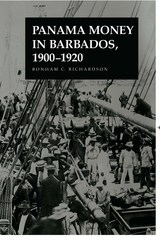 Panama Money in Barbados, 1900–1920: 1900-1920
Bonham C. Richardson
University of Tennessee Press, 1986 On January 18, 1905, hundreds of black men left Barbados aboard a steamer for panama. They were the first Barbadian contract workers dispatched to dog the Panama Canal. In the next decade, 45,000 Barbadian men and women – one-quarter of the islands human population – traveled to the isthmus. They sent home and brought back to Barbados funds in excess of 1 million. The surge of money created irrevocable social changes on Barbados, undermining elements of the island’s antiquated sugar economy. In a broad sense, the era of “Panama money” represented a cultural watershed between the island’s quasi-feudal past and the modern Barbados of today.
In analyzing the changes created by Panama money on Barbados, Bonham Richardson combines oral history into an important contribution to Caribbean social history. He presents his study from the vantage point of the Barbadian working people and shows that the creation of the Panama Canal, conventionally viewed as a U.S. technological triumph, was of momentous social significance for the Afro-Caribbean laborers who built it.
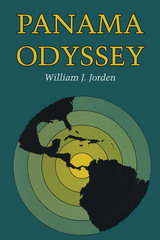 Panama Odyssey
By William J. Jorden
University of Texas Press, 1984 The Panama Canal Treaties of 1977 were the most significant foreign policy achievement of the Carter administration. Most Latin American nations had regarded the 1903 treaty and its later minor modifications as vestiges of "American colonialism" and obstacles to any long-term, stable relationship with the United States. Hence, at a time when conflicts were mushrooming in Central America, the significance of the new Panama treaties cannot be overestimated. Former Ambassador to Panama William J. Jorden has provided the definitive account of the long and often contentious negotiations that produced those treaties. It is a vividly written reconstruction of the complicated process that began in 1964 and ended with ratification of the new pacts in 1978. Based on his personal involvement behind the scenes in the White House (1972–1974) and in the United States Embassy in Panama (1974–1978), Jorden has produced a unique living history. Access to documents and the personalities of both governments and, equally important, Jorden's personal recollections of participants on both sides make this historical study an incomparable document of U. S. foreign relations. Beyond the singular story of the treaties themselves—and how diplomats negotiate in the modern world—is the rare description of how the United States deals with a major foreign policy problem. How does a superpower cope with a tiny nation that happens to occupy a strategically critical position? And how does the U. S. Senate face up to its constitutionally assigned power to "advise and consent"? Once treaties are approved, does the House of Representatives help or hinder? Panama Odyssey also deals with another crucial element in the shaping of policy—public opinion: how is it informed or led astray? In sum, this is a history, a handbook on diplomacy, a course in government, and a revelation of foreign policy in action, all based on a fascinating and controversial episode in the U. S. experience.
 Panamanian Militarism: A Historical Interpretation
Carlos Guevara Mann
Ohio University Press, 1996 Carlos Guevara Mann argues that Panamanian militarism, a consequence of the breakdown of legitimacy that occurred in the early nineteenth century, is more a manifestation of a deeply-rooted political tradition than an isolated phenomenon of the late twentieth century. He examines the variable US policy approach to domestic stability with the overall context of US hegemony in the isthmus and its shaping of Panamanian militarism.
Focusing on the causes that generated nineteenth-century predatory militarism, including political illegitimacy and US support, Guevara Mann analyzes the so-called professionalization of the armed forces — institutionalized militarism — and the polices developed by the 1968-89 military regime.
The author cautions that although Panamanian Defense Forces were abolished after the US invasion of December 1989, and although the state’s security apparatus has been placed under civilian direction, Panama’s stability remains threatened. Lack of legitimacy — the characteristic which informs military involvement in politics — still persists, and militarism could well reappear if the Panamanian polity fails to achieve legitimacy.
|
|
